- The Best Places To See...

The Best Places to See the Berlin Wall in Berlin, Germany

The Berlin Wall divided Germany for 28 years, standing as the most potent symbol of the Cold War. Decades since its fall, little remains of the barrier, euphemistically called the ‘ Anti-Fascist Protection Barrier .’ Stretching across 155 kilometres, the symbol of oppression was potentially most felt in the German capital , where West Berlin existed as an island of democracy amongst Eastern Germany. Now, the city has the largest remaining stretch of the wall, which along with other spots dotted around the city give an insight into this iconic structure .
East side gallery.
The East Side Gallery is the longest remaining stretch of the Berlin Wall. Considered the largest open-air gallery in the world, the 1.3-kilometre section is also the best spot in Berlin to see the colourful, famous murals on the wall. A tribute to freedom, visitors can explore the gallery on their own, or by following an informative tour.
East Side Gallery, 10243 Berlin, Germany

Mauerpark is best known for its weekly flea market and open-air karaoke session, however, this park also houses a remnant of the Berlin Wall. Established in what was once no-man’s land, the small stretch of the wall here has since become a favourite canvas for graffiti artists. Opposite the park are large images and information points on the wall.
Mauerpark, Gleimstraße 55, 10437 Berlin, Germany

Checkpoint Charlie
The most famous American controlled border crossing, Checkpoint Charlie , is now a top sight when visiting Berlin. Along with this well-known sight, visitors can also see a small remaining part of the Berlin Wall in this area. As a portion of the structure is located close to the Checkpoint Charlie museum at the corner of Schützenstraße and Friedrichstraße.
Checkpoint Charlie, Friedrichstraße 43-45, 10117 Berlin, Germany

Berlin Wall Memorial
When it stood, the Berlin Wall ran along the entire southern edge of Bernauer Straße. Part of this former strip, along with a former watchtower is now home to an open-air museum offering historical audio and video material about the Berlin Wall . There is also an informative visitor centre with videos and a viewing tower to see the sight from a new perspective.
Berlin Wall Memorial, 13355 Berlin, Germany

Schlesischer Busch Watch Tower
The East German border once ran parallel to the Flutgraben channel . This former strip between Treptow and Kreuzberg has since become the intersection of two of Berlin’s trendiest suburbs. A few metres of the wall have been preserved here, along with Schlesischer Busch , a preserved watchtower that now hosts a series of changing art exhibitions .
Schlesischer Busch Watch Tower, Lohmühlenstraße 1, 12435 Berlin, Germany

Potsdamer Platz
The last original segments of the Berlin Wall in Potsdamer Platz were torn down in 2008. However, six sections were preserved and later erected at the entrance to the Potsdamer Platz station. Now, they can be seen by visitors, along with information points and just around the corner is one of the few remaining watchtowers in the city.
Berlin Potsdamer Platz Bahnhof, Potsdamer Platz, 10785 Berlin, Germany

At the eastern end of the Bösebrücke bridge, is what was formerly known as the Bornholmer Straße border crossing. One of the first crossings to open when the wall fell on November 9, 1989. Today more than 100 Japanese cherry blossom trees line the Mauerweg , or wall trail, the trees were a gift from Japan as a sign of sympathy and encouragement in 1990. Small remnants of the wall can be found here today.
Bösebrücke, Bornholmer Str. 70, 10439 Berlin, Germany
Culture Trips launched in 2011 with a simple yet passionate mission: to inspire people to go beyond their boundaries and experience what makes a place, its people and its culture special and meaningful. We are proud that, for more than a decade, millions like you have trusted our award-winning recommendations by people who deeply understand what makes places and communities so special.
Our immersive trips , led by Local Insiders, are once-in-a-lifetime experiences and an invitation to travel the world with like-minded explorers. Our Travel Experts are on hand to help you make perfect memories. All our Trips are suitable for both solo travelers, couples and friends who want to explore the world together.?>
All our travel guides are curated by the Culture Trip team working in tandem with local experts. From unique experiences to essential tips on how to make the most of your future travels, we’ve got you covered.

See & Do
10 reasons why you should visit bavaria.

Places to Stay
The best spa hotels in baden-baden.

The Best Hotels to Book in Garmisch for Every Traveller

A Voyage Through Germany: the Lowdown on River Cruising

Architecture
Breathtakingly beautiful buildings in germany.

Places in Germany for History Lovers

Guides & Tips
Top tips for travelling in germany.

Stay Curious: Experience Germany From Your Living Room

Craft and Culture in the Lesser-Known Gems of Eastern Germany

The Best Hotels in Germany for Every Traveller

The Story Behind Germany's Neuschwanstein Castle

The Best Hotels to Book in Thuringia, Germany
Culture trip spring sale, save up to $1,656 on our unique small-group trips limited spots..

- Post ID: 1807408
- Sponsored? No
- View Payload
- Suche aktivieren Stichwort / Suchbegriff Suche starten
- Einfache Sprache
- English English
- Deutsch Deutsch
Facebook Instagram Instagram
Information For Your Visit
Opening hours, documentation center and visitor center.
Opening Hours: Tuesday to Sunday 10 a.m. to 6 p.m.
Closed on 24/25 and 31 December 2024
Last ascent to the observation tower 5.45 p.m
The documentation center and visitor center are also open on: Monday, 20 May 2024 from 10 a.m. – 6 p.m. Thursday, 26 December 2024 from 12 a.m. – 6 p.m. Wednesday, 1 January 2025 from 12 a.m. – 6 p.m.
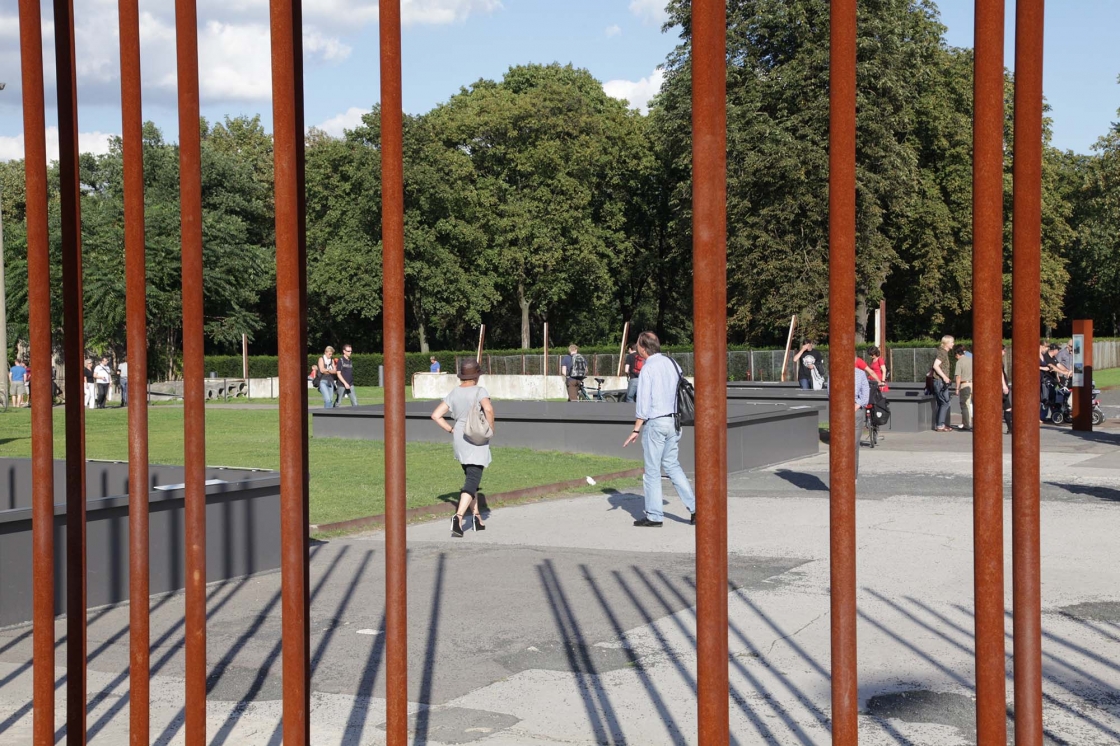
View of the memorial site © Berlin Wall Foundation, Photo: Gesa Simons
Exhibition on the outdoor grounds
The outdoor exhibition on the memorial grounds on Bernauer Strasse is accessible Monday to Sunday, 8 a.m. to 10 p.m. Please note the current safety and hygiene rules.
Ghost station exhibition
The exhibition “Border and Ghost Stations in Divided Berlin” can be visited during the opening hours of the Nordbahnhof Station.
Admission is free.
Price for tours: €3.50 per person, reduced €2.50 (students, ALG 2 recipients, people with a disabled ID or Berlin Pass). Groups with less than ten people pay a flat fee of €35.
There is no charge for pupils.
Getting Here
Public transport.
S-Bahn S1, S2, S25, S26 | Train station Nordbahnhof Tram M10 | Train station Nordbahnhof Bus 247 | S Nordbahnhof/Gartenstr. Underground U6 | Station Naturkundemuseum U8 | Station Bernauer Straße
Bernauer Straße 119, 13355 Berlin Tel.: +49 (0)30 213085-123 E-Mail: info [at] stiftung-berliner-mauer.de (info[at]stiftung-berliner-mauer[dot]de)
Parking information
Parking in Gartenstraße, especially on the bicycle lane, is strictly prohibited. Parking spaces for coaches are located in Ackerstrasse.
How much is admission?
Admission to all exhibitions on Bernauer Strasse is free.
What is there to do at the Berlin Wall Memorial?
Visitors and registered groups should begin their visit to the memorial at the Visitor Center at Bernauer Strasse 119. Here you will find information about everything there is to see and do at the memorial, get an overview of the entire memorial grounds and learn about other Berlin Wall sites in Berlin. An introductory film on the history of the Berlin Wall is shown on the upper floor of the Visitor Center. The exhibition on the outdoor memorial grounds in the former border strip uses the large amounts of preserved historical relics and many events that took place at Bernauer Strasse to explain the purpose and function of the Berlin Wall at the historical site. Above all, it tells the stories of people whose lives were restricted by the Wall, who were forced to move because of it, and who aspired to get beyond it.
The Monument, Chapel of Reconciliation and Window of Remembrance are central elements within the memorial grounds. The permanent exhibition in the Documentation Center at Bernauer Strasse 111 documents the history of Berlin’s division. It explains the political and historical situation that led to the Wall’s construction, its fall and the reunification of Germany.
When is the introductory film shown in the Visitor Center and in which languages?
We present two films in sequence: The introductory film on the history of the Berlin Wall and the film “Walled In,” a computer animation of the border fortifications on Bernauer Strasse in Berlin and on the inner German border in Hötensleben in Saxony-Anhalt. Both films were produced by Deutsche Welle. The films run at the following times: German Version: On the hour: “Die Berliner Mauer” (with English subtitles) 15 minutes past the hour “Eingemauert” English Version: On every half hour: “The Berlin Wall” (with German subtitles) 15 minutes before the hour: “Walled In”
Please note, that due to events in the visitor center, the film room might be temporarily closed. We apologize for the inconvenience.
How much does a tour/workshop cost for my (school) group?
Tours are free for pupils and for the adults accompanying the school group. A regular tour costs € 3.50 per person, with a reduced price of € 2.50 for students, ALG 2 recipients, asylum-seekers, people with a disabled ID or Berlin Pass. Groups with less than 10 participants pay a flat fee of € 35. The flat fee is currently not available.
How can I book a tour/workshop for my group?
To request a tour or workshop, please complete the form on the website and send it to us. Visitors Services will process your request and contact you if they have any questions. After your request has been processed, you will receive a confirmation email with information regarding your tour.
What payment methods do you offer?
You can pay in person in cash or by EC-Card/credit card. Groups can arrange to be billed by invoice.
what languages do you offer for group tours?
Depending on the availability of our guides, it is possible to book a tour in German, English, French, Italian, Spanish, Simple German, and German sign language. For more information on languages offered at the Berlin Wall Memorial, call Visitor Services at +49 (0)30 213085-166 or send an email to: besucherservice@ stiftung-berliner-mauer.de.
We are less than 10 people, but would like to book a separate group tour. Is this possible?
Yes, you can book a separate tour as a small group, however groups with less than 10 people have to pay a flat fee of €35,00 €.
As an individual visitor or small group, do I have to register in advance?
You do not need to register in advance to visit the exhibition. You can also watch the introductory film without prior registration.
Is the site barrier-free?
The outdoor memorial grounds are only partially accessible to people with disabilities. The Visitor Center (Bernauer Strasse 119) and Documentation Center (Bernauer Strass 111) are barrier-free. Barrier-free elevators are available to the elderly and to people with disabilities, however a key is needed to operate them. In the Documentation Center, you can borrow a Euro-key if you leave your ID at the front desk. You are welcome to use your own Euro key.
Are dogs allowed?
Only assistance dogs are allowed in the Visitor Center at Bernauer Strasse 119 and in the exhibition in the Documentation Center at Bernauer Strasse 111. Dogs are allowed on the outdoor memorial grounds, but they must be kept on a lea
Are there places to sit?
Yes. In the Visitor Center (Bernauer Strasse 119) you can borrow wheelchairs, mobile seats and seat sticks free of charge from the front desk. In the Documentation Center (Bernauer Strasse 111) you can borrow mobile seats to use in the permanent exhibition. There are benches on the outdoor memorial grounds.
Are there diaper-changing rooms?
Yes. There are separate rooms available for diaper-changing in the Visitor Center (Bernauer Strasse 119) and Documentation Center (Bernauer Strasse 111). Please speak to our front desk staff. You must bring your own diapers and wipes.
Can I visit the exhibitions with a baby carriage?
Yes. A key is needed to operate the elevator in the Documentation Center (Bernauer Strasse 111). You can get a key from the front desk if you leave your ID there. The exhibition on the outdoor memorial grounds is also accessible with a baby carriage.
Is eating, drinking or smoking allowed?
As a courtesy to other visitors, eating and drinking is not permitted in either the Documentation Center or Visitor Center. Smoking is not allowed.
Can I take pictures or film in the exhibitions?
You may take pictures and film for private use only, but using tripods and selfie sticks is not permitted. You must contact our press department before making professional film and video recordings. Violators will be fined €500,00 for each act of infringement.
Where can I drop off coats and larger pieces of luggage?
Lockers are available in the Visitor Center (Bernauer Strasse 119) and Documentation Center (Bernauer Strasse 111). There is also a cloakroom in the Visitor Center.
Is there a shop?
The Visitor Center has a specialized bookstore with a broad selection of fiction and non-fiction, scholarly publications, photo volumes and films about the Berlin Wall, German division, the history of both German states, the history of dictatorship, the fall of the Wall and reunification.
The bookshop is open
Monday Closed Tuesday to Friday 10 a.m.–5 p.m. Saturday 10 a.m.–6 p.m. Sunday Closed
Contact: +49 (0)30 46 777 277, mauerbuchladen@ gmail.com
Accessibility
Information on Accessibility
Disabled Parking
Public disabled parking spaces are located nearby. There are two parking spaces directly behind the Visitor Center (access via Gartenstrasse). Roughly 150 meters away from the Documentation Center (Bernauer Strasse 111), there are two additional disabled parking spaces on Ackerstrasse (near the Bernauer Strasse intersection).
The outdoor exhibition extends for 1.4 kilometers along Bernauer Strasse and is mostly barrier-free. The core area lies between Gartenstrasse and Strelitzer Strasse (approx. 500 m). The Visitor Center (Bernauer Strasse 119), the Documentation Center (Bernauer Strasse 111) and all seminar rooms are barrier-free. Barrier-free elevators are available to people with disabilities and visitors with small children. A key, which can be obtained from the front desk, is needed to operate the elevator in the Visitor Center. The elevator in the Documentation Center can be operated with a Euro key. You are welcome to use your own Euro key or borrow one from the front desk if you leave your ID as a deposit.
In the Visitor Center, wheelchairs, mobile seats and seating sticks can be borrowed free of charge at the front desk. In the Documentation Center, you can borrow mobile seats to visit the permanent exhibition. Guided tours of the outdoor exhibition can be conducted using hearing aid-compatible group guidance systems. Induction loops are available at the front desk in the Visitor Center.
Restrooms and Diaper-Changing Rooms
There is a barrier-free restroom on the ground floor of the Visitor Center and on the lower level of the Documentation Center. Both are accessible with a Euro key. You can obtain the Euro-key from the front desk of both sites if you leave an ID as a deposit. You can also use the Euro key to operate the elevator in the Documentation Center and access the lower level. You are also welcome to use your own Euro key. Diaper changing is possible in the barrier-free restroom on the ground floor of the Visitor Center and on the lower level of the Documentation Center.
Assistance Dogs
Assistance dogs are permitted in the Visitor Center, Documentation Center and in all seminar rooms.
Medications
Medication bags may be taken into all the exhibitions and rooms.
Directions from Nordbahnhof S-Bahn Station to the Visitor Center of the Berlin Wall Memorial (for Visually Impaired Visitors)
How to reach the Memorial’s Visitor Center when traveling from the south:
Traveling from the south, take the S-Bahn S1 (Oranienburg, Frohnau), S2 (Bernau), S25 (Hennigsdorf) or S26 (Waidmannslust) to the S-Bahn station "Nordbahnhof.”
When you arrive at the station you will exit onto a central platform. There are two staircases in the middle of the platform heading in different directions. They both lead to the mezzanine level of the station. Take the staircase in the same direction that you traveled. At the top, make a 180 degree turn to the left and follow the wall on your left side. The wall comes to an end after 15 meters. Now turn 90 degrees to your left. You are now in a 100-meter-long tunnel. Follow the wall to your left until you reach the staircase to the Gartenstrasse/Bernauer Strasse exit. Please note: Due to construction, there is a temporary covered walkway outside the exit. When you reach the top of the stairs, turn 90 degrees to your left and walk through the covered walkway. At the end of the walkway, continue straight until you reach the tactile-acoustic traffic light on your right. There is a tactile marker there.
Cross the street. On the other side of the street, keep left and cross the next street with an octagonal tactile-acoustic traffic light. Caution: There is a bicycle traffic light on the left side of the traffic light at head height. Stand to the right of the traffic light. Caution: The street has tram tracks running in both directions before and after the median. On the other side of the street, stand to the right of the traffic light again. Then continue walking straight for 15 meters to the entrance of the Memorial’s Visitor Center. Caution: There is a street sign right in front of you. There is a tactile marker at the entrance in front of the door. Pull the door open. Then follow the guide strip. At the tactile marker, follow the guide strip to the right. This will lead you to the front desk where our staff will welcome you.
How to reach the Memorial’s Visitor Center when traveling from the north:
Traveling from the north, take the S-Bahn S1 (Wannsee), S2 (Blankenfelde), S25 (Teltow Stadt) or S26 (Teltow Stadt) to the S-Bahn station "Nordbahnhof".
When you arrive at the station you will exit onto a central platform. There are two staircases in the middle of the platform heading in different directions. They both lead to the mezzanine level of the station. Take the staircase in the opposite direction that you traveled. At the top, make a 180 degree turn to the right and follow the wall to your right until you reach the wall straight ahead. Now turn 90 degrees to the left and follow the wall until you come to another wall straight ahead. There, turn 90 degrees to the left again and follow the wall to your right. Along the way, you can feel three former ticket windows with counters that are now part of an exhibition in the Nordbahnhof station. You can use the counters as handrails . After you pass the curve of the ticket counter, you will enter a 100-meter-long tunnel. Continue to follow the wall to your right until you reach the staircase to the Gartenstrasse / Bernauer Strasse exit. Please note: Due to construction, there is a temporary covered walkway outside the exit. When you reach the top, turn 90 degrees to your left and walk through the covered walkway. At the end of the tunnel, continue straight until you reach the tactile-acoustic traffic light on your right. There is a tactile marker there.
Cross the street. On the other side of the street, keep left and cross the next street with an octagonal tactile-acoustic traffic light. Caution: There is a bicycle traffic light on the left side of the traffic light at head height. Stand to the right of the traffic light. Caution: The street has tram tracks running in both directions before and after the median. On the other side of the street, stand to the right of the traffic light again. Then continue walking straight ahead for 15 meters to the entrance of the Memorial’s Visitor Center. Caution: There is a street sign right in front of you. There is a tactile marker at the entrance in front of the door. Pull the door open. Then follow the guide strip. At the tactile marker, follow the guide strip to the right. This will lead you to the front desk where our staff will welcome you .
Directions from the Memorial’s Visitor Center to the Nordbahnhof S-Bahn Station (for Visually Impaired Visitors)
From the Memorial’s Visitor Center, you can reach the northbound platform of Nordbahnhof, S1 (Oranienburg, Frohnau), S2 (Bernau), S25 (Hennigsdorf) and S26 (Waidmannslust)
From the front desk, follow the guide strip to the exit door on the right. Open the door and step outside. Walk straight for 15 meters until you reach the tactile-acoustic traffic light. Caution: You will pass a street sign along the way. Cross the street. Caution: The street has tram tracks running in both directions before and after the median. Caution: There is a bicycle traffic light on the right side of the traffic light at head height. Walk past the left side of the traffic light. Then turn 90 degrees to the right and walk about 5 meters to the next tactile-acoustic traffic light. Cross the street. Then turn 90 degrees to the left and walk straight for 5 meters. Caution: Due to construction, there is a temporary covered walkway outside the entrance to the Nordbahnhof S-Bahn station. Walk through the covered walkway. At the end of the walkway, turn 90 degrees to the right and enter Nordbahnhof through the Gartenstrasse / Bernauer Strasse entrance. Use the wall to your right to orient yourself. Walk down the stairs to the mezzanine level of the station. Walk through the 100-meter-long tunnel. Use the wall on your right to orient yourself. At the end of the tunnel, turn 90 degrees and follow the wall to your right. At the end of the wall, make a 180 degree turn and walk down the stairs to the central platform heading north, S1 (Oranienburg, Frohnau), S2 (Bernau), S25 (Hennigsdorf) and S26 (Waidmannslust).
From the Memorial’s Visitor Center, you can reach the southbound platform of the Nordbahnof station, S1 (Wannsee), S2 (Blankenfelde), S25 (Teltow Stadt) and S26 (Teltow Stadt):
From the front desk, follow the guide strip to the exit door on the right. Open the door and step outside. Walk straight ahead for 15 meters until you reach the tactile-acoustic traffic light. Caution: You will pass a street sign along the way. Cross the street. Caution: The street has tram tracks running in both directions before and after the median. Caution There is a bicycle traffic light on the right side of the traffic light at head height. Walk past the left side of the traffic light. Then turn 90 degrees to the right and walk about 5 meters to the next tactile-acoustic traffic light. Cross the street. Then turn 90 degrees to the left and walk straight for 5 meters. Caution: Due to construction, there is a temporary covered walkway outside the entrance to the Nordbahnhof S-Bahn station. Walk through the covered walkway. At the end of the tunnel, turn 90 degrees to the right and enter the Nordbahnhof station through the Gartenstrasse / Bernauer Strasse entrance.
Use the wall on you left to orient yourself. Walk down the stairs to the mezzanine level of the station. Walk through the 100-meter-long tunnel. Continue to use the wall on your left to orient yourself. At the end of the tunnel, you can feel the three ticket windows with a counter which is now part of the exhibition in the Nordbahnhof station. You can use the counter as a handrail. After you pass the curve of the ticket counter, continue to follow the wall on your left until to come to another wall in front of you. Turn 90-degrees to the right and follow the wall on your left. At the end of this wall turn 90 degrees to the right again and follow the wall on your left. At the end of the wall turn 180 degrees and walk down the stairs to the central platform heading south, S1 (Wannsee), S2 (Blankenfelde), S25 (Teltow Stadt) and S26 (Teltow Stadt).
Guided Tours
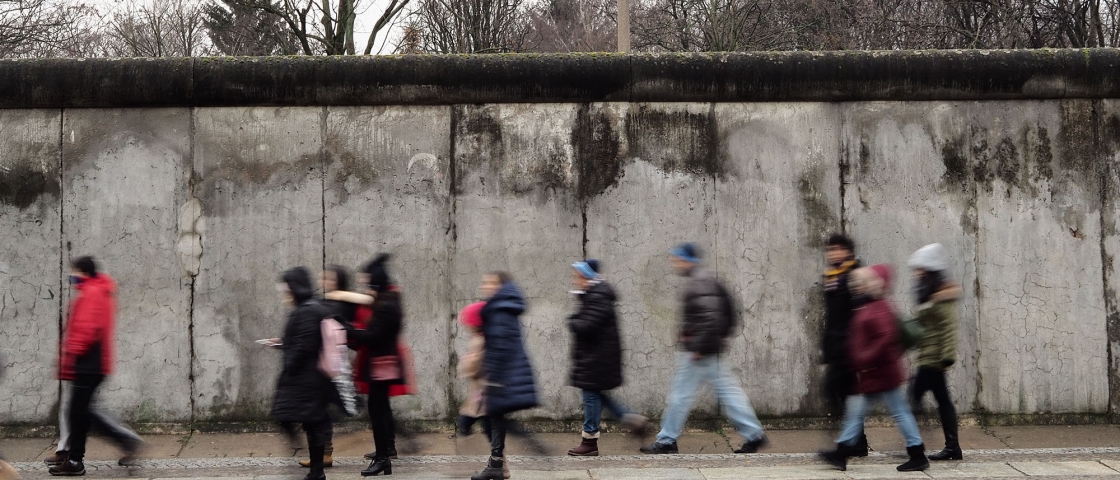
At the Berlin Wall Memorial we offer numerous guided tours
Guide to Visiting the Berlin Wall Memorial at Bernauer Strasse
This post contains links which earn me a small commission at no cost to you.
Ali Garland, Berlin expert & long term resident What to Do
The Berlin Wall is a huge piece of the city’s history, and it’s something I’m sure you’re interested in learning about on your trip to Berlin. Visiting the Berlin Wall Memorial at Bernauer Strasse is definitely something that should be high on your list of places to see in Berlin because it’s so rich in interesting information about the Wall.
In this guide to the Bernauer Strasse Berlin Wall Memorial , you’ll learn about the memorial and why it’s important, what the different sections are, and lots of other helpful tips for seeing this amazing attraction. I really think this is one of the best things to do in Berlin if you’re interested in the Berlin Wall.
What you'll find here
Where to stay near the Berlin Wall Memorial at Bernauer Strasse
If you’re interested in staying near the Wall Memorial, you have lots of options that are within 10 minutes away on foot or on public transport. Here are some hotel recommendations for where to stay in Berlin near the Bernauer Strasse Berlin Wall Memorial.
Tours of the Berlin Wall Memorial at Bernauer Strasse
A tour can be a great way to learn about the history of a place from an expert. It can also help you see more places in less time than on your own.
Here are a few tours we recommend that involve visiting the Bernauer Strasse Wall Memorial:
- Cold War Walking Tour of Berlin
- Berlin Wall and Cold War Bike Tour
- East Berlin & the Wall Walking Tour
Note: I will use both spellings, Strasse and Straße. They are pronounce the same. That ß letter is pronounced like an S, so in English it is usually replaced by a double ss and Straße becomes Strasse.
About the Berlin Wall
In case you don’t know much about the Berlin Wall, it separated East and West Berlin for more than 28 years. In the aftermath of World War II, East and West Germany became two different countries, with the East being backed by the Soviets.

Berlin was also divided into East and West, and after more than a decade of East German residents migrating to the West, the East German leadership began putting up physical barriers in the city. On August 13, 1961, fences and barbed wire went up along the border dividing East and West Berlin.
These fences were quickly replaced by a concrete wall, and the border area became more and more fortified. That single Wall became multilayered and included a no man’s land, dubbed the death strip.
Watch towers, guard dogs, and bright lights were used to detect people who were trying to escape across the border. In the late 1970s, the Berlin Wall was actually rebuilt for improved prevention and surveillance, which allowed leadership to remove a lot of the other barricades that were seen as bad for its international image.
At various points along the border between East Berlin and West Berlin, many people tried to flee. Some were successful while others were caught and died.
On November 9, 1989, a new law regarding travel between East and West was accidentally announced. This led to people rushing to the borders and guards opening the borders to those who wanted to cross.
This was essentially the beginning of the fall of the Berlin Wall and the end of the East German dictatorship. And although most of the Wall has been torn down, there are still quite a few places in Berlin to see remnants of the Berlin Wall .
History about the Wall Memorial at Bernauer Strasse
The Wall Memorial here is 1.4km (0.87 mile) long and spans the entire length of Bernauer Strasse where the Berlin Wall once stood separating one side of the road from the other. It also cut off Ackerstr, a street that intersected with Bernauer Straße.

Because of where the border between East and West was drawn, the Wall actually went up just outside the windows of East Berlin residents here. In those first few days when it was just a fence, some tried to escape by jumping out of their windows.
It didn’t take long before the windows facing the Wall were bricked up. Eventually people living here were force to relocate.
Not only were residents displace, but the local community church stood in the area that became the death strip. The church was no longer accessible, and the authorities even moved the graves in the cemetery.
This memorial tells the stories of the people whose lives were changed forever by the section of the Berlin Wall that went up along Bernauer Strasse. I think it’s one of the best sights in Berlin .
>>Read: Fun Facts About Berlin
How to visit the Berlin Wall Memorial at Bernauer Strasse
The Berlin Wall Memorial at Bernauer Strasse is one that deserves a good amount of time. There are several different sections to see, lots of history to learn, and don’t forget, it’s nearly a mile long.

Here’s some info about the different sections of the Memorial and some tips for making the most of your visit.
Visitors center
You can visit the different sections of the memorial in any order, but I think starting at the visitors center is the way to go.
In the visitors center, you can watch two short films, 15 minutes each, about the Berlin Wall. The first one is about the Wall at Bernauer Strasse in Berlin, and the second one is about the border fortifications in Saxony-Anhalt that divided East Germany from West Germany.
They’re very informative and moving films, and I think seeing them first sets the stage for the memorial. But of course if you don’t get to see them until afterwards, it’s still very much worth coming inside for these films.
The films play in German on the hour and in English on the half hour, so plan accordingly.
Address : Bernauer Str. 119, 13355 Berlin Closest transport : Nordbahnhof Sbahn station and M10 tram stop Opening hours : Tuesday to Sunday, 10 a.m. to 6 p.m., closed Monday
Documentation center
About halfway along the memorial on Bernauer Strasse is the documentation center. It sits at the intersection of Bernauer Strasse and Ackerstr, an intersection that was broken by the Wall.
In the documentation center, you can see exhibits about the history of Berlin’s division. There are biographies, audiovisual materials, and firsthand witness reports of what it was like to live here during that time.

The documentation center is also where you’ll find the observation tower. Climb a few flights of stairs or take the elevator, and then you can look out over a section of the Berlin Wall that’s been preserved.
Here you can see a watch tower and a section of what was the death strip. It’s an interesting view of Berlin from above .
Address : Bernauer Str. 111, 13355 Berlin Closest Transport : Gedenkstätte Berliner Mauer M10 tram stop Opening hours : Tuesday – Sunday, 10 a.m. – 6 p.m., closed Monday
Border and Ghost Stations in Divided Berlin
Since Berlin was one city before the Wall divided it, the transport system obviously served both sides. This became a problem for the authorities in East Berlin, and stations in the East were patrolled and/or boarded up to prevent escapes.

The Border and Ghost Stations Exhibit in the Nordbahnhof Station tells the stories of these stations and how the trains functioned here. You can also learn about escape attempts and fortifications that were used underground to try to stop these types of escapes.
You’ll find lots of photos, maps, and interesting information here. It’s a small display but really worthwhile.
(Just be aware that the back corner may or may not smell like a toilet. Ah, Berlin…)
Address : Invalidenstraße 131, 10115 Berlin Closest transport : Nordbahnhof Sbahn station and M10 tram stop Opening hours : whenever the Sbahn station is open

Outdoor exhibit
The outdoor exhibit at the Bernauer Straße Wall Memorial stretches down the entire length of Bernauer Strasse and shows many aspects of the Wall’s history here. Take your time and read the info placards, which are in German and English.

These placards tell stories of this section of the Berlin Wall and the community that lived here at various points of the Wall’s history. This includes stories about people who tried – some successfully, some not – to escape from East Berlin.
You’ll see the section of Wall that you can look over from the observation platform at the documentation center plus another collection of Berlin Wall pieces. There are also tall metal stakes in the ground indicating where the Wall stood.
Metal markers in the ground show where some of the most famous and successful escape tunnels were. Other metal markers show where residential buildings stood before they were torn down for the Wall.

There are also several smaller memorials within this large memorial.
Conrad Schumann Memorial: This honors an East German border policeman who spontaneously decided to jump over the barbed wire just a couple days after it was installed. His escape was photographed and widely publicized, and it’s a photo you may have even seen.
Victims of the Berlin Wall Window of Remembrance: At least 140 people died or were killed at the Berlin Wall between 1961 and 1989. This wall of photos honors the 140 known victims of the Berlin Wall.
Address : From the visitors center at Bernauer Str. 119, 13355 Berlin to Bernauer Str. 50, 10435 Berlin Closest transport : Nordbahnhof Sbahn station and M10 tram stop, Bernauer Str U8 station, several M10 stops Opening hours : Technically 8am to 10pm, but it’s accessible 24 hours a day, easier to visit during daylight hours
Reconciliation Church
As the Berlin Wall was built, a church that sat on Bernauer Str was deemed to be too close to the Wall. Authorities cut off access to the church, and it became part of the no man’s land.

Eventually the church was demolished to make patrolling the border an easier task.
Some time after the Wall fell, a church was rebuilt here, and today it honors the victims of the Wall. Biographies of the victims of the Wall are read here, one per day at noon Tuesday through Friday, and the church plays a big part in remembering the tragedies that occurred here.
Address : Bernauer Str. 4, 10115 Berlin Closest Transport : Gedenkstätte Berliner Mauer M10 tram stop Opening hours : Sunday 11am to 5pm, Tuesday to Friday 10am to 5pm, Saturday 12:30pm to 5pm, closed Monday
>>Read: 47 Interesting Places to See Cold War Sites in Berlin
Things to know before you go
Admission to all sections of the Bernauer Strasse Berlin Wall Memorial is free. This includes the visitors center and short films, the exhibition in Norbahnhof, the documentation center and observation platform, the church, and all of the outdoor exhibits and memorials.

This is an in-depth memorial site with lots of different sections. You should allow 30 minutes to watch the two films at the visitors center plus at least another hour or two to experience the other sections.
The outdoor sections Berlin Wall Memorial at Bernauer Strasse are accessible 24 hours a day, though technically opening hours are listed as 8am to 10pm. It’s best visited in daylight hours anyway.
The indoor sections have opening hours (see each section above for more details) and are all are closed on Mondays except the exhibit in Nordbahnhof.
Pay special attention to the timing of the films in the visitors center. They play in German on the hour and in English on the half hour.
What to wear on your visit
Since most of the memorial is outdoors, and it’s 1.4km (0.87 mile) long, you’ll be on your feet a lot. Wear comfortable shoes, and dress for the weather at the time of year you’re visiting Berlin .
>>Read: What to Wear & What to Pack for Berlin, Germany: Your Ultimate Berlin Packing List

Join our Facebook group!
Have questions about planning your trip to Berlin?
Join the Facebook group here to chat with Ali (she runs this site) and other people who have been to Berlin for tips.
How to get to the Bernauer Strasse Berlin Wall Memorial
It’s easiest to start at one end and work your way down. I usually recommend starting at the visitors center so you can watch the short films before exploring the outdoor memorial.

If you’re using public transport, take the S1, S2, S25, or S26, or tram 12, M8, or M10 to the Nordbahnhof Sbahn station to start at the exhibit there followed by the visitors center.
Alternatively, you can start at the other end near Bernauer Strasse and Schwedter Strasse by taking the M10 to the Friedrich-Ludwig-Jahn-Sportpark tram stop. You can also take the U8 to Bernauer Strasse which is a few blocks west of Friedrich-Ludwig-Jahn-Sportpark.
Where is the Berlin Wall Memorial located?
The Berlin Wall Memorial is located on Bernauer Strasse. It’s a long memorial site with several locations.

German addresses aren’t always as logical as you might hope. For example, the outdoor exhibit runs from Bernauer Str 50-119, but the church, which is in the middle of the whole thing, is number 4. Don’t try to make sense of it.
Here are the addresses:
Visitors center: Bernauer Str. 119 Documentation center: Bernauer Str. 111 Ghost stations exhibit: Invalidenstraße 131 (In the Nordbahnhof Sbahn station) Outdoor exhibit: Bernauer Str. 119 to Bernauer Str. 50 Reconciliation Church: Bernauer Str. 4
How much are Berlin Wall Memorial tickets?
Visiting the Berlin Wall Memorial at Bernauer Strasse is free, so there are no tickets. This goes for all sections of the memorial, so you can watch the films at the visitors center, go into the documentation center, see the ghost stations exhibit, and wander through the outdoor exhibit, all at no cost.

Some Berlin walking tours include a stop at the Berlin Wall Memorial, so if you choose to take a tour, that would be a cost. Beyond that, it’s just the cost of your transport ticket.
>>Check out more free museums in Berlin .
Berlin Sightseeing Tours
What to do near the berlin wall memorial at bernauer strasse.
There aren’t a ton of other tourist attractions that are really close to Bernauer Strasse, but the area is very well connected by transport. This means you’re only a few stops away from other top sights in Berlin .
Here are a few things to do near the Bernauer Strasse Berlin Wall Memorial.
Naturkunde Museum
The Natural History Museum is a great place to visit that’s just a short walk or tram ride away from Bernauer Strasse. Here you’ll see exhibits featuring preserved animals, dinosaur bones and skeletons, and more.
Mauerpark is one of the most popular parks in Berlin , and it’s located towards the eastern end of the Berlin Wall Memorial. Mauer means Wall, and the park is named this because the Wall used to run through this area.

A long section of the Wall still stands here. It’s dubbed the Graffiti Wall because it’s covered in street art, and despite being a protected monument (as all sections of the Wall are) it is still permitted to paint here.
Today the park is a favorite place for locals to relax. The park also hosts outdoor karaoke on Sundays, as well as one of the most famous flea markets in the city.
North Side Gallery
I’m sure you’ve heard of the East Side Gallery . Well, the North Side Gallery is definitely a lesser known attraction in Berlin . It’s similar but with fewer people, and it’s located in Park Am Nordbahnhof near the Bernauer Strasse visitors center.

Not only is the park really pretty and peaceful, but there’s a section of the Berlin Wall here that’s recently been converted into an art installation with street art painted on it. Check it out here and here .
Berlin Travel Resources
I want you to have the best trip to Berlin, and hopefully this guide to visiting the Berlin Wall Memorial at Bernauer Strasse is helpful. But there are lots more tips on the site!
- 101 Best Things to do in Berlin
- 23 Impressive Castles in Berlin (And Nearby)
- 27 Best World War II & Cold War Sights in Berlin
- 29 Fun Day Trips From Berlin
- 75 Things to Know Before Visiting Berlin: Essential Berlin Travel Tips
- What to Wear & What to Pack for Berlin, Germany: Your Ultimate Berlin Packing List
- How to Get Around in Berlin: An Easy Guide to Berlin Public Transportation
Check out my favorite travel planning sites and resources
These are the sites I like for travel planning, plus items I like to travel with.
Planning Booking.com : Find a Berlin hotel here.
Rick Steves and Lonely Planet : My favorite guidebook resources.
Tours, Activities, Tickets Viator : Great site for finding tours and other activities.
GetYourGuide : Another good option for tours and activities.
Transport Welcome Pickups : No stress option for airport pickups.
Discover Cars : Find a rental car for Germany road trips.
Deutsche Bahn and FlixBus : Best options for getting around Germany.
Packing Orange SIM & eSIM : Great option for SIM & eSIM cards for German & EU.
Collapsible water bottle , plug adapter , and stuff bag : Small things that will make your trip a little easier.
Packing Orange SIM & eSIM : Great option for SIM & eSIM cards for Germany & EU.
Book a local photographer Flytographer : Hire an amazing local photographer anywhere in the world. Use code BERLINTRAVEL to get $25 off your first photo shoot.

Related Posts

What to do in Berlin on Monday: 25+ Museums & More

What to do in Berlin on Sunday: 15+ Ideas

Best Berlin Hop On Hop Off Bus Tours
Leave a reply cancel reply.
Your email address will not be published. Required fields are marked *
Save my name, email, and website in this browser for the next time I comment.
This site uses Akismet to reduce spam. Learn how your comment data is processed .
15 Surprising Places to See the Berlin Wall
By virginia williams | aug 5, 2021.
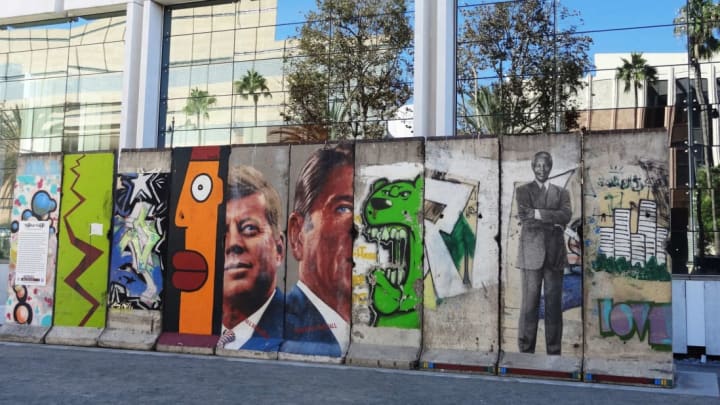
On August 13, 1961, construction began on the Berlin Wall , a roughly 96-mile-long barrier that, when complete, split East and West Germany. The wall stood for 28 years before falling on November 9, 1989. People began chipping away bits of the 54,000 concrete slabs that made up the wall, and pieces became sought-after collectors’ items. Here are 15 surprising places where segments of the Berlin Wall stand today.
1. DiMillo’s on the Water // Portland, Maine, United States
Three pieces of the Berlin Wall were offered to Tony DiMillo, the original owner of this Maine restaurant, though no one remembers who gave them or how that initial gifter got them. They were installed on the Long Wharf promenade just outside the restaurant in 1996.
2. Men’s Bathroom, Main Street Casino, Brewery & Hotel // Las Vegas, Nevada, U.S.

Here's another case of “no one can explain why it’s here.” Perhaps the most unexpected spot to find a piece of the Berlin Wall is in the men’s room at this Las Vegas casino. The wall is encased in glass with urinals mounted on it (so no, despite what many think beforehand, you can’t pee on it, which was illegal to do in East Germany while it was standing). A security guard will take patrons of all genders into the restroom when it’s empty so anyone can view this oddly-placed piece of the wall.
3. The Janco Dada Museum // Tel Aviv, Israel
This isn’t the Dada Museum’s normal art installation, but this piece of the wall was brought to the museum in 1992 as part of an exhibition on the history of life in East Berlin. There were many objections within Tel Aviv to the exhibition, given the fraught history of Germany and the Israeli Jewish settlers, many of whom survived the Holocaust. The museum ’s directors decided that, given the Dadaist movement’s anti-war stance, there was a connection between the two and decided to hold the exhibition. This piece of the wall stands outside the museum and is dedicated to those murdered in the Holocaust.
4. Gangwon DMZ Museum // Gangwon Province, South Korea
Two pieces of the Berlin Wall sit outside the DMZ Museum , which located is in the demilitarized zone between North and South Korea. It seems fitting that pieces of the wall are here, in an area that's been split since 1945 ; they stand as a reminder—and a hope—that these two countries can one day be reunited as the two Germanies were.
5. East Side Gallery // Berlin, Germany
Not all of the Berlin Wall was fully dismantled—in fact, some still remains in the German city. The largest intact piece, eight-tenths of a mile long, sits in its original location at what’s now the longest open-air gallery in the world. It was transformed into a work of art by 118 artists from 21 countries after the wall at large fell. The murals are on the east side of the barrier, which was off limits before reunification. Perhaps the most famous mural , My God, Help Me to Survive This Deadly Love by Soviet artist Dmitri Vrubel, depicts General Secretary of the Soviet Union Leonid Brezhnev embraced in a passionate kiss with Erich Honecker, former leader of East Germany.
6. The Gardens of Vatican City // Rome, Italy
This piece of the wall was a gift from Marco Piccininni, an Italian industrial heir and the finance minister of Monaco, to Pope John Paul II; Piccininni purchased it at an auction in Monte Carlo in 1990, and it was placed in the gardens at Vatican City in 1994. The Polish-born John Paul II was a tireless anti-communism campaigner , and former Soviet leader Mikhail Gorbachev admitted that the fall of communism would not have happened without John Paul II’s influence. Admission starts at $27.
7. The Wende Museum // Los Angeles, California, U.S.
This 10-segment section of the Berlin Wall is the longest piece of the barrier displayed outside Germany, and was installed to commemorate the 20th anniversary of its fall. The mural features original Cold War graffiti plus new murals specially commissioned for the anniversary, including ones by Frenchman Thierry Noir, believed to be the first artist to paint the wall while living in West Berlin. Known and emerging artists were invited to contribute murals to commemorate its function as a place for political and personal expression.
8. Kowsky Plaza // New York, New York, U.S.

Noir used pieces of the wall to change what he saw as its message of war into a message of hope. The giant head seen here is easily identifiable as one of Noir’s oft-repeated Heads paintings. The German consulate gave this slab to the Battery Park City Authority in 2004, on the 15th anniversary of the wall coming down, in recognition of the latter organization's commitment to education through public art.
9. Geraldine Mary Harmsworth Park, Imperial War Museum // London, England
The Imperial War Museum acquired this slab, painted with a large, distorted face, open mouth, and the words “change your life,” in 1991 as part of its collection; it sits outside the building in the Geraldine Mary Harmsworth Park. East German-born artist Jürgen Grosse, who also goes by the name “Indiano,” painted 223 individual sections of the wall after its fall in just seven months. His work can also be seen on the mural on Wilshire Boulevard in Los Angeles.
10. Mandela Rhodes Foundation // Cape Town, South Africa
President Nelson Mandela was given a piece of the wall in 1996 by the city of Berlin while on a state visit to Germany. Mandela was released from prison in February 1990, three months after the wall fell. Both nations tackled decades of division and strife to build new futures through massive social transformation, and the slab of the Berlin Wall standing outside the Mandela Rhodes Foundation reflects this tie between the two countries.
11. National Churchill Museum // Fulton, Missouri. U.S.
Winston Churchill delivered what became known as his “Iron Curtain” speech at Westminster College in 1946 after an invitation from President Harry S. Truman . The college later created the Churchill Museum on its campus. In 1990, Churchill’s granddaughter Edwina Sandys, an artist, presented the museum with Breakthrough , her sculpture made out of eight sections of the wall. It features two tall figures carved out of the graffitied slabs, representing freedom. Admission starts at $12.
12. Kalijodo Park // Jakarta, Indonesia
One of the last places you’d expect to find a piece of the Berlin Wall is a former red-light district in Indonesia. Kalijodo Park features an installation of the Berlin wall by artist Teguh Ostenrik. Titled A Statue Crossing Boundaries , it consists of four pieces of the wall surrounded by steel sculptures representing the human spirit. Ostenrik studied art in West Berlin in the 1980s before the wall fell and knew immediately he wanted to bring pieces of it back to Indonesia. The slabs remained in his studio for many years until a change in government in 2017 meant he finally had permission create his vision.
13. Europos Parkas // Vilnius, Lithuania
A piece of the Berlin Wall stands in Europos Parkas , the Open-Air Museum of the Centre of Europe. The museum, which sits in the geographic center of the European continent, was founded in 1991 by Lithuanian sculptor Gintaras Karosas to highlight the best of Lithuanian and international modern art. The German embassy in Lithuania and the Goethe Institute donated a piece of the Berlin Wall to the city of Vilnius on the 20th anniversary of the fall, and it stands today as a symbol of a united Europe. Admission starts at $13.
14. Dallas Hotel Anatole // Dallas, Texas, U.S.
The hotel, developed by real estate magnate Trammell Crow, features part of the extensive art collection that he and his wife Margaret amassed. Among their treasures are two 12-foot tall, 4-foot wide pieces of the Berlin Wall , which sit in the hotel’s Trinity Corridor . These slabs, like many others around the world, were also painted by Grosse and feature political graffiti and his signature distorted faces, with one of the slabs urging “Act Up! Now.”
15. Höfði House // Reykjavik, Iceland
American president Ronald Reagan and Soviet premiere Mikhail Gorbachev met in Iceland in 1986 for a political summit that many believe marked the beginning of the end of the Cold War . The slab, given to Reykjavik by the German Art Centre Neu West Berlin, was unveiled on German National Day, October 3, 25 years after Germany’s reunification. It was placed in front of Höfði house, where the two men met in what was called the Reykjavik Summit .

Borders Of Adventure
Leading Culture and Adventure Travel Blog by Becki Enright. Looking at the world with a different angle to change perceptions of misunderstood places, for the best in travel.
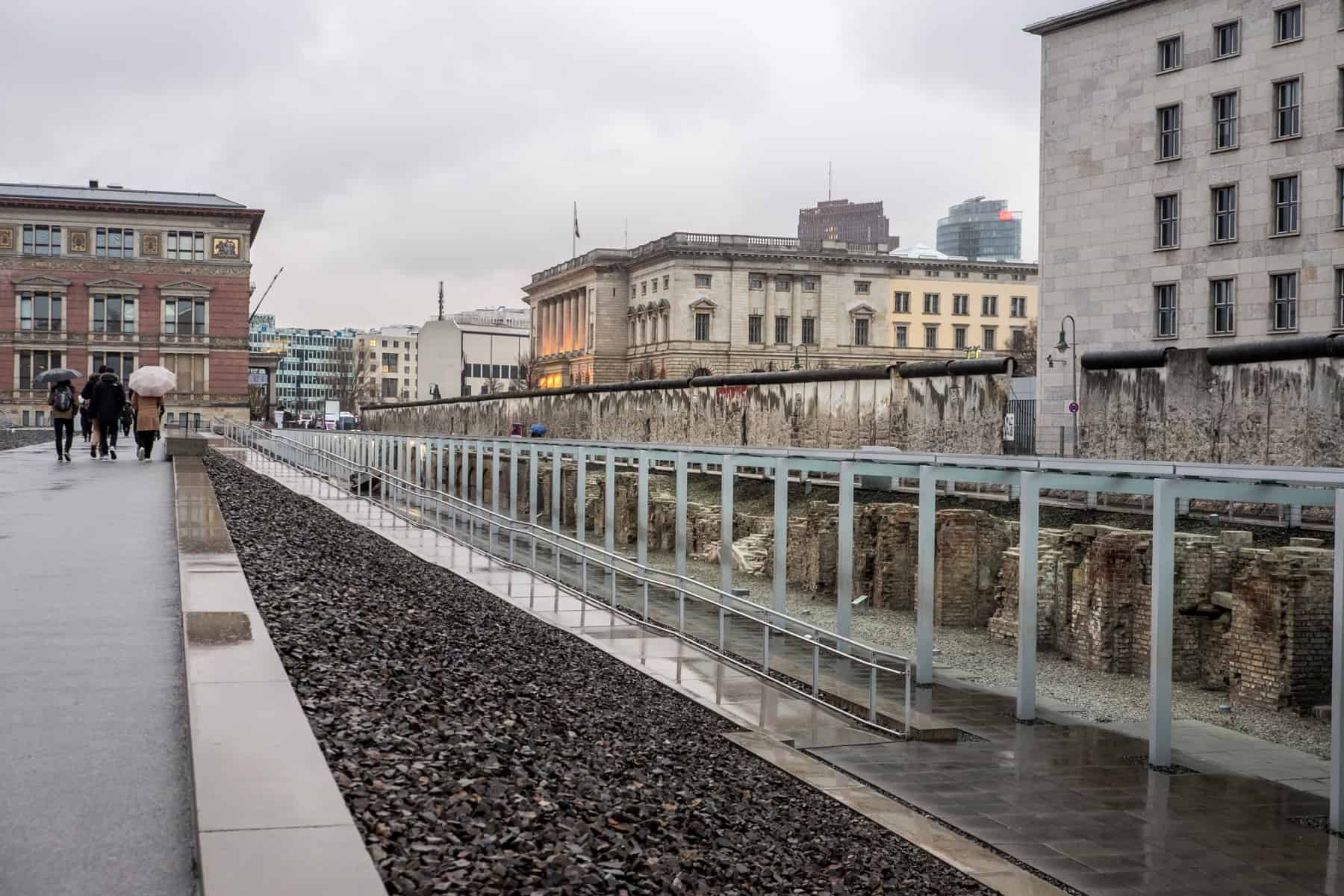
Germany , Misunderstood Destinations
The Best Place to See the Berlin Wall and What to Learn From It
Disclaimer: This post contains affiliate links to handpicked partners, including tours, gear and booking sites. If you click through or buy something via one of them, I may receive a small commission. This is at no extra cost to you and allows this site to keep running.
A 100km concrete wall divided Berlin for 28 years. Here are the best places to see the Berlin Wall viewing locations and what to learn from them.
Alongside its alternative scene, many visitors to Berlin want to know the best place to see the Berlin Wall or, more precisely, where to see what still remains of it. For 28 years, a concrete wall over 100km long divided Berlin and the entire country. Now it’s one of the main go-to sights in Germany’s capital.
On my first trip to Berlin as a 16-year-old history student, I didn’t want to just see the Wall, I tried to absorb every ounce of information I was fed to know why. To find the reason and to understand the consequences. I’d look at people my parent’s age and wonder about their individual stories during the Wall years of 1961 – 1989, and I’d look at people my age and wonder how the ideologies they’ve grown up with shape their outlook today in a unified city.
Years on, and a dozen visits to Berlin later, I am still finding pockets of the city that are windows to the past, of which I share with you here on where to see remaining parts of the Berlin Wall, alongside exhibitions, memorials and museums to gain a deeper perspective.
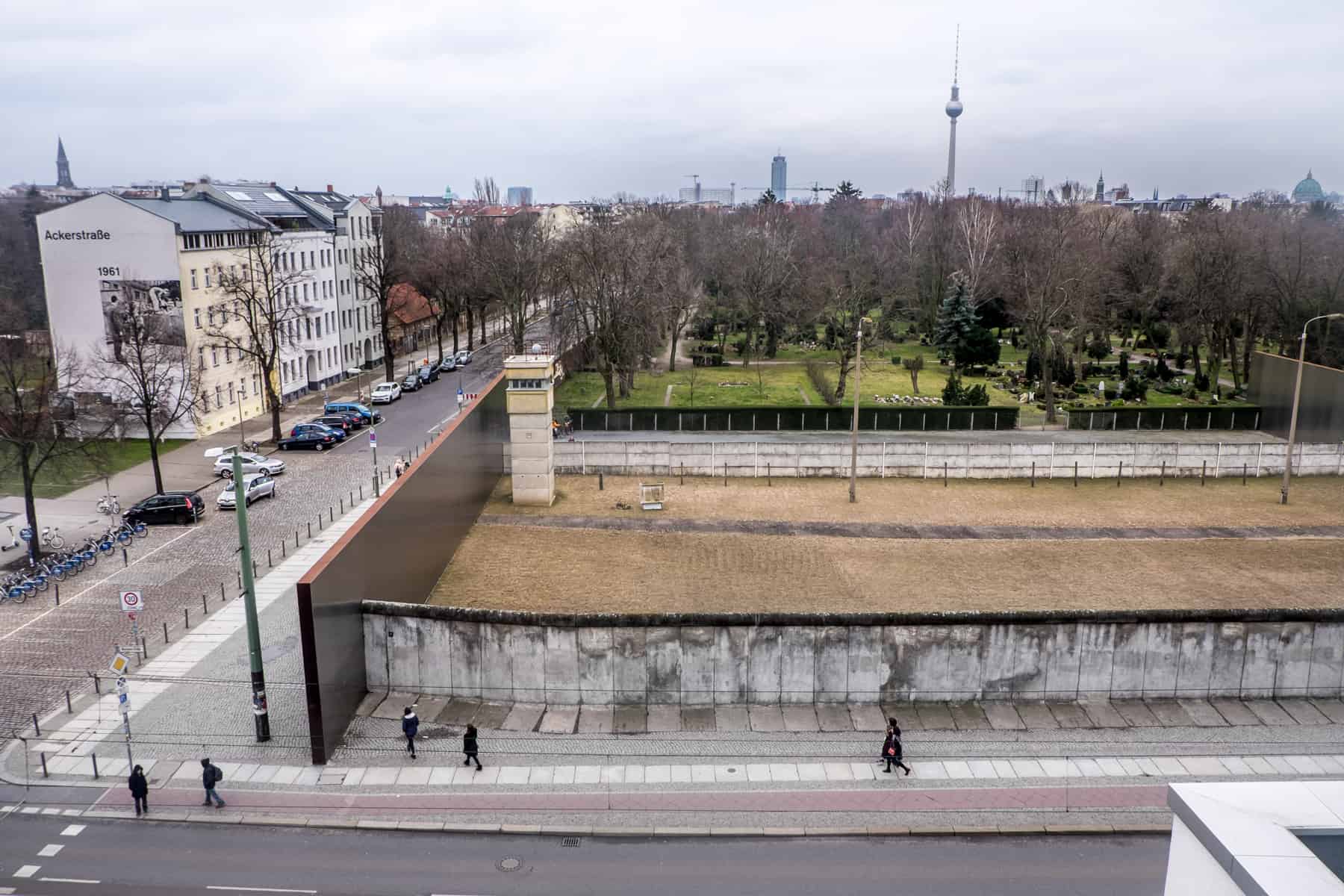
A Brief Timeline of Berlin Wall History
The route of the berlin wall today, the east side gallery – where to see the berlin wall murals, bernauer strasse – the street of the berlin wall memorial, the topography of terror – see the berlin wall near checkpoint charlie, günter litfin memorial – the preserved berlin wall watchtower, segments of the berlin wall at potsdamer platz station, berlin wall tours, the importance of visiting berlin wall sites, history of the berlin wall.
2019 marked 30 years since the fall of the Berlin Wall, a shocking symbol of the division of Berlin, Germany and the Cold War, which finally came down on 9th November 1989.
Visiting Berlin today, it’s hard to think that this thriving, fun and booming European hotspot was once partitioned into East and West (alongside West Berlin’s encirclement by its own Wall), a physical division that began in 1961.
READ MORE: What is Berlin Known For? Understanding the City Since the Fall of the Wall
Germany and Berlin were divided long before 1961, with a division that began at the end of World War II. After Germany’s surrender on 8th May 1945, the Allies divided the country into four military occupation zones at the Potsdam Conference. The United States occupied the southeast, France, the southwest and Britain, the northwest forming the Federal Republic of Germany (FRG). The Soviet Union occupied the northeast, forming the socialist German Democratic Republic (GDR), bordering Poland and Czechoslovakia.
Berlin, in its entirety, was located in the occupied Soviet Zone of Germany. However, because of its importance as the capital of Germany and having been the former seat of the Nazi government, Berlin was also split into a quadripartite.
Over 2.5 million people fled communist East Germany for democratic West Germany between 1946 and 1961. On 26th May 1952, fearing an economic collapse, East Germany closed its border with the West via a five-kilometre-wide exclusion zone to curb the mass exodus.
More dissatisfied East Germans continued to leave, and since the only way through was via West Berlin, the Soviet government completely sealed the border. On 13th August 1961, rapid construction of the Berlin Wall began.
The Berlin Wall fell after Peaceful Revolutions in the country, calling for German Reunification and an end to oppression and then Soviet leader Mikhail Gorbachev’s loosening of Eastern Bloc policies.
This breakdown of power and the subsequent end of the Socialist Unity Party of Germany (SED) culminated in a bureaucratic blunder by an East German party official, Günter Schabowski, who accidentally stated in a press conference on 9th November 1989 that the border at the Berlin Wall was open, effective immediately.
The Reunification of Germany began in October 1990. A year later, the destruction of the Berlin Wall began in November 1991.
As you stroll through Berlin today, you will notice two rows of cobbled stones marking where the Wall once stood – a concrete barrier that cut off West Berlin from East Berlin and East Germany. While the city is reunited, its past is not forgotten. The trail of stones means that this piece of history is firmly in your consciousness as you wander.
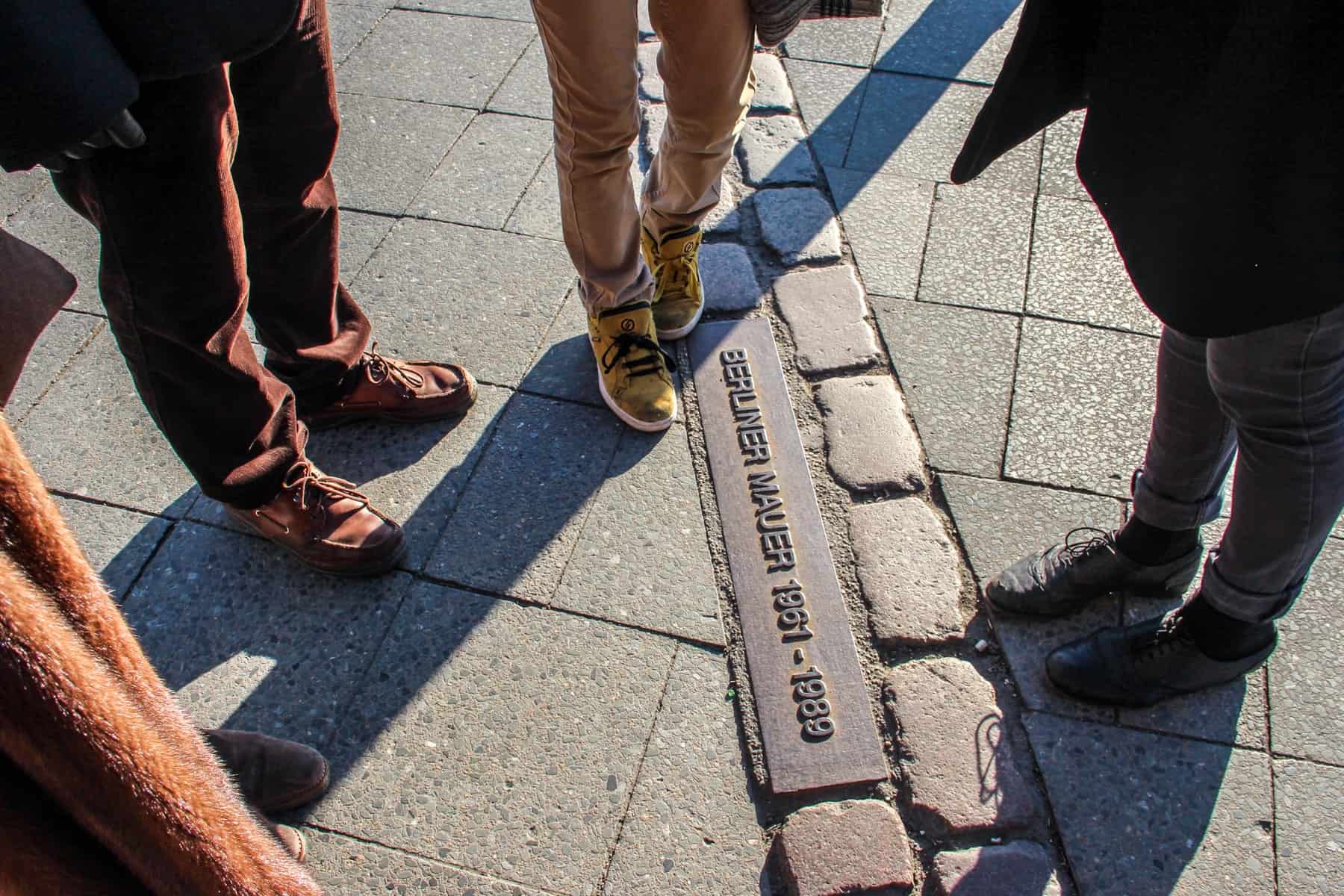
The double row of cobblestones that mark the route of the Berlin Wall.
At times it is hard to define which side is East and which is West due to the rapid and continuous construction (marked by a sea of cranes, scaffolding and overland pipes). I found myself continually pulling out my map and trying to work it out.
But there are still some parts of the city that feel shrouded in the dark past, still trying to catch up with the unified present, still trying to modernise and fit in, still bearing the scars of Soviet influence while its western sibling glistens as new. Or is it just that those districts are still living in and holding on to the past? After all, not everyone wanted the Wall to come down.
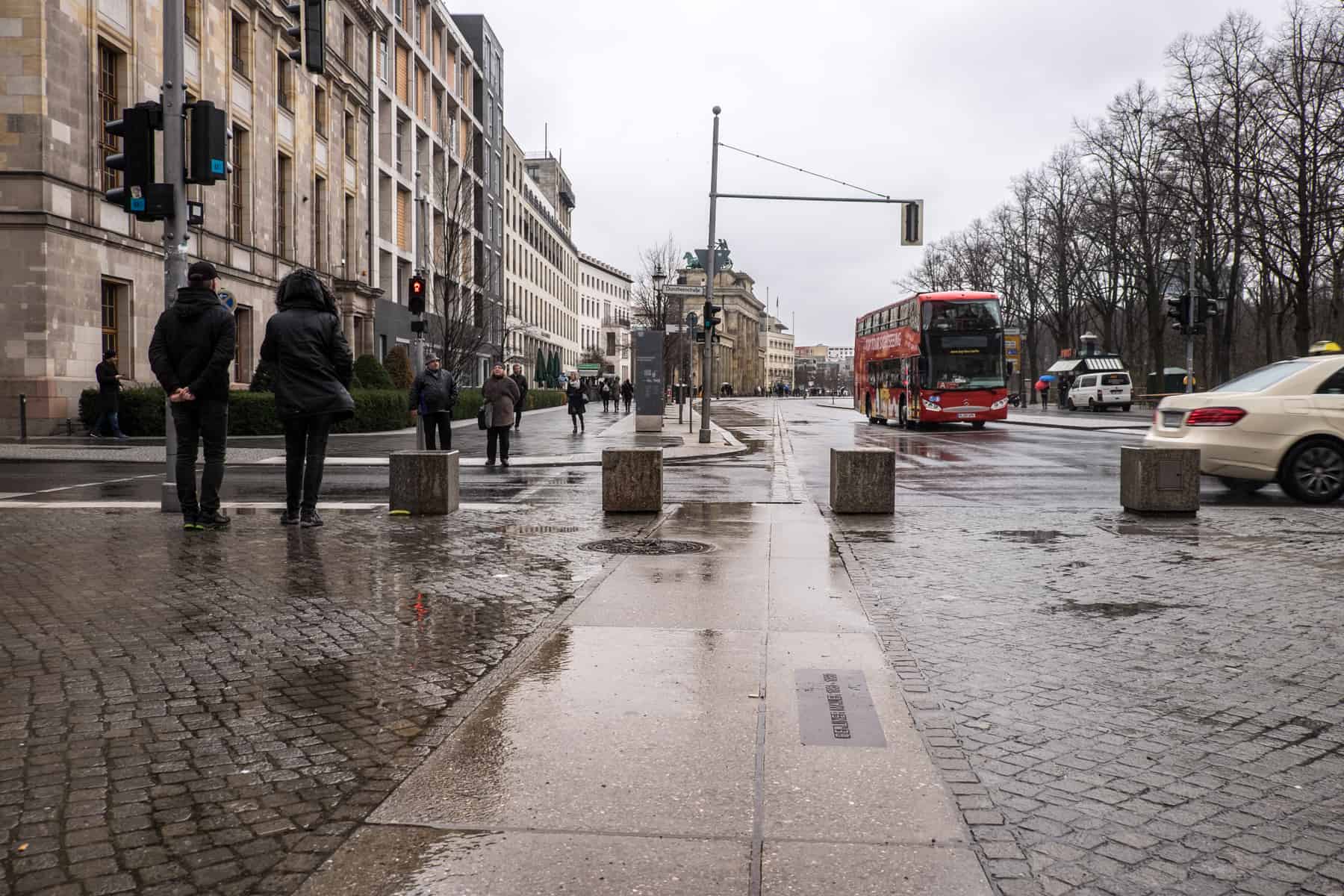
Pathway route of the Berlin Wall through the city today.
It was those moments that made me feel confused about what I felt about Berlin. What should it be? Will it ever be a city as one? Will there always be an East and West divide because the scars run too deep? Has gritty become ‘cool’ because that’s the only way to justify and accept post-war devastation?
Where is the Best Place to See the Berlin Wall – Preserved Sites and Memorials
Today, only a small fraction of the Berlin Wall remains, and those preserved parts of the Wall serve as memorials. Without it there in front of you as a stark realisation, you wouldn’t be able to imagine how imposing a structure it once was. Or how imprisoned it must have made people feel, the desperation it caused among people separated from loved ones, the distinct lack of choice and freedom.
So before you strike a ridiculous pose on it or scribble your name on it, think about what it is, what it means, and what it symbolises. Ultimately, take the time to understand these lessons from a dark period of modern history.
The most famous of Berlin Wall sites, The East Side Gallery is the best-preserved and longest part of the Wall at over 1 kilometre long. It is adorned with colourful murals painted by international artists, which have been there since 1990 – a year after East and West’s borders started to open.
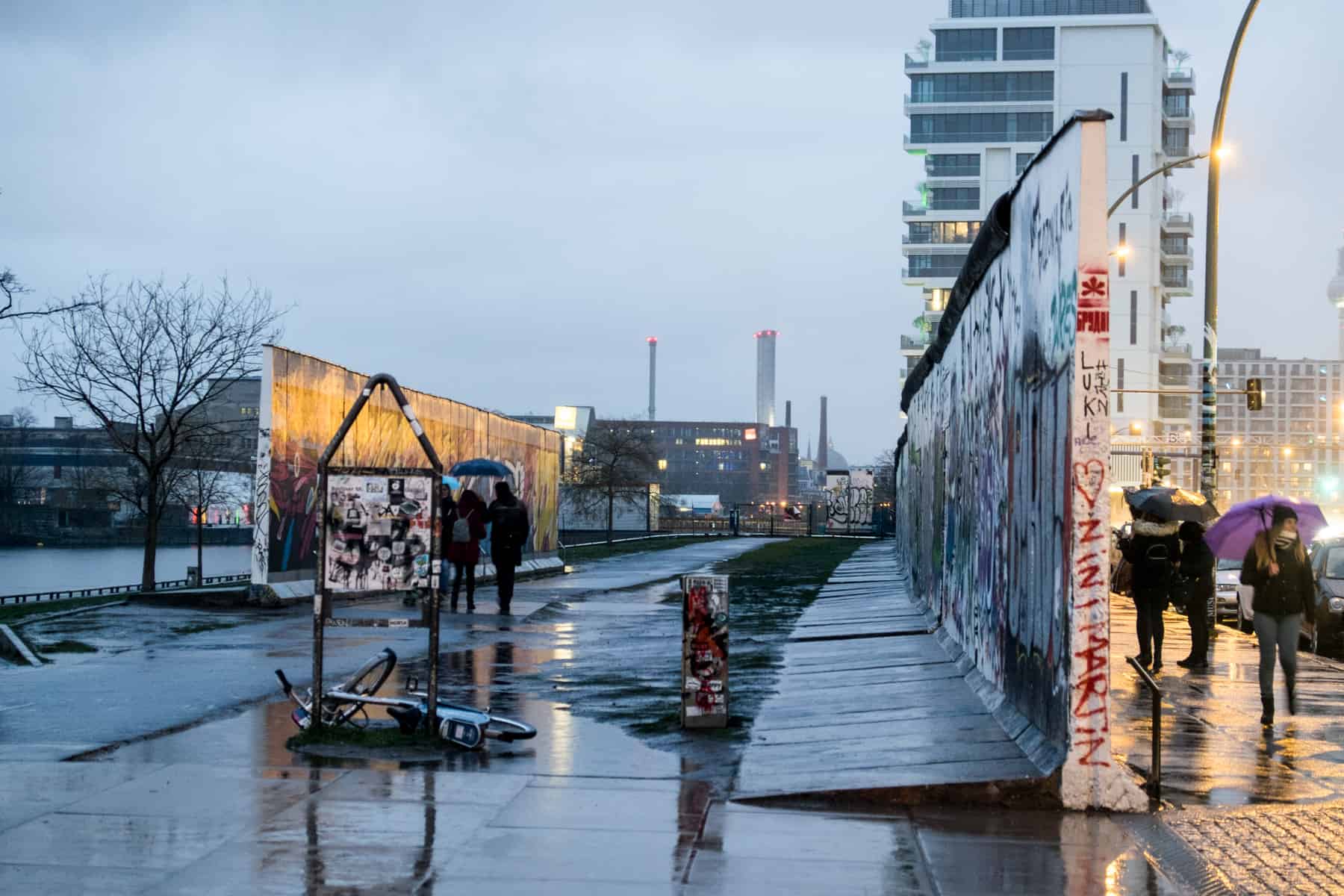
The space between two sections of the Berlin Wall at the East Side Gallery.
It’s an array of spectacular colour and creative vision along the banks of the River Spree, but much of this open-air gallery carries political messages and symbols of peace. It’s humbling and stands as a warning for history not to repeat itself, alongside highlighting current world issues such as Climate Change.
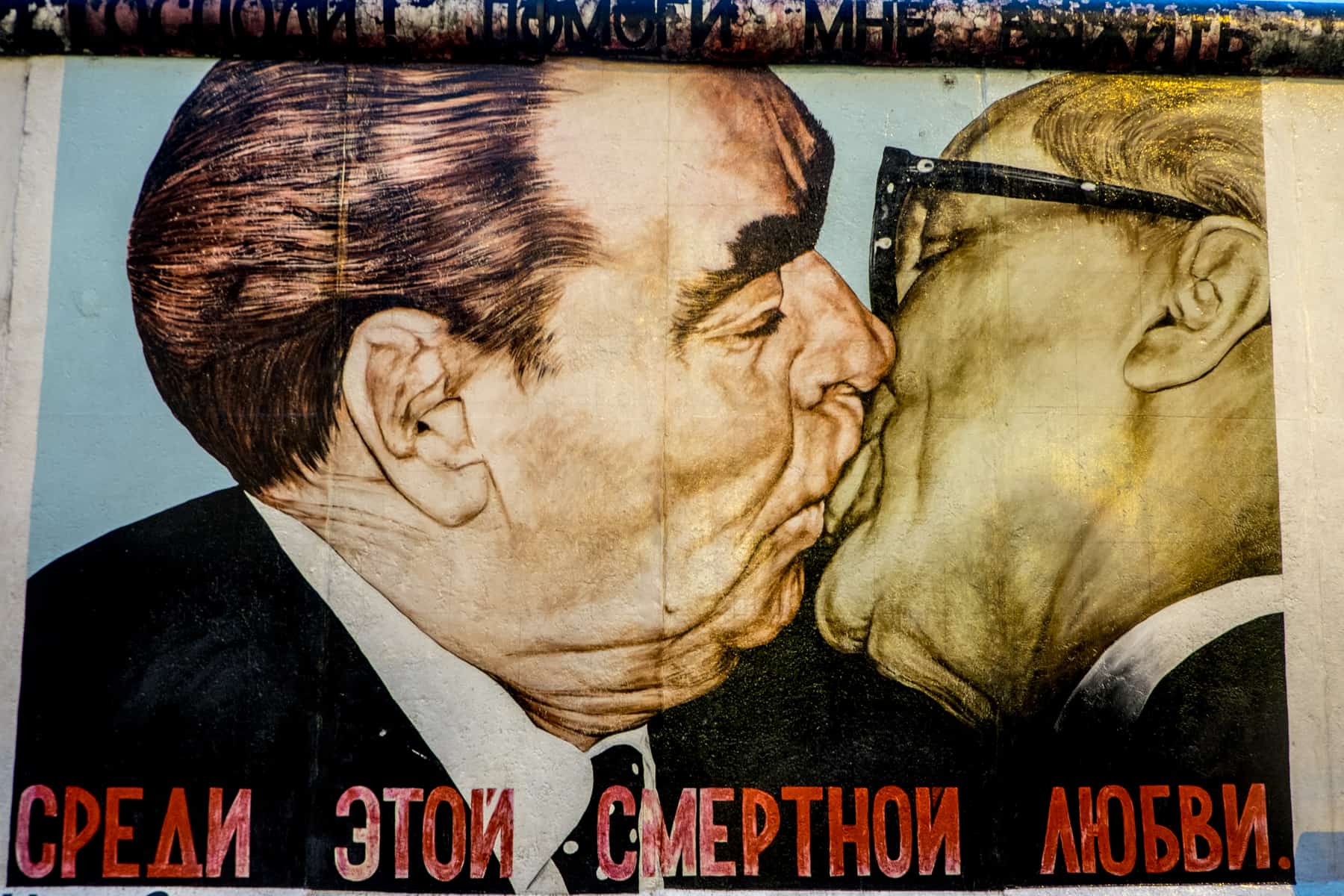
‘The Kiss’ is the most famous artwork on the Berlin Wall East Side Gallery
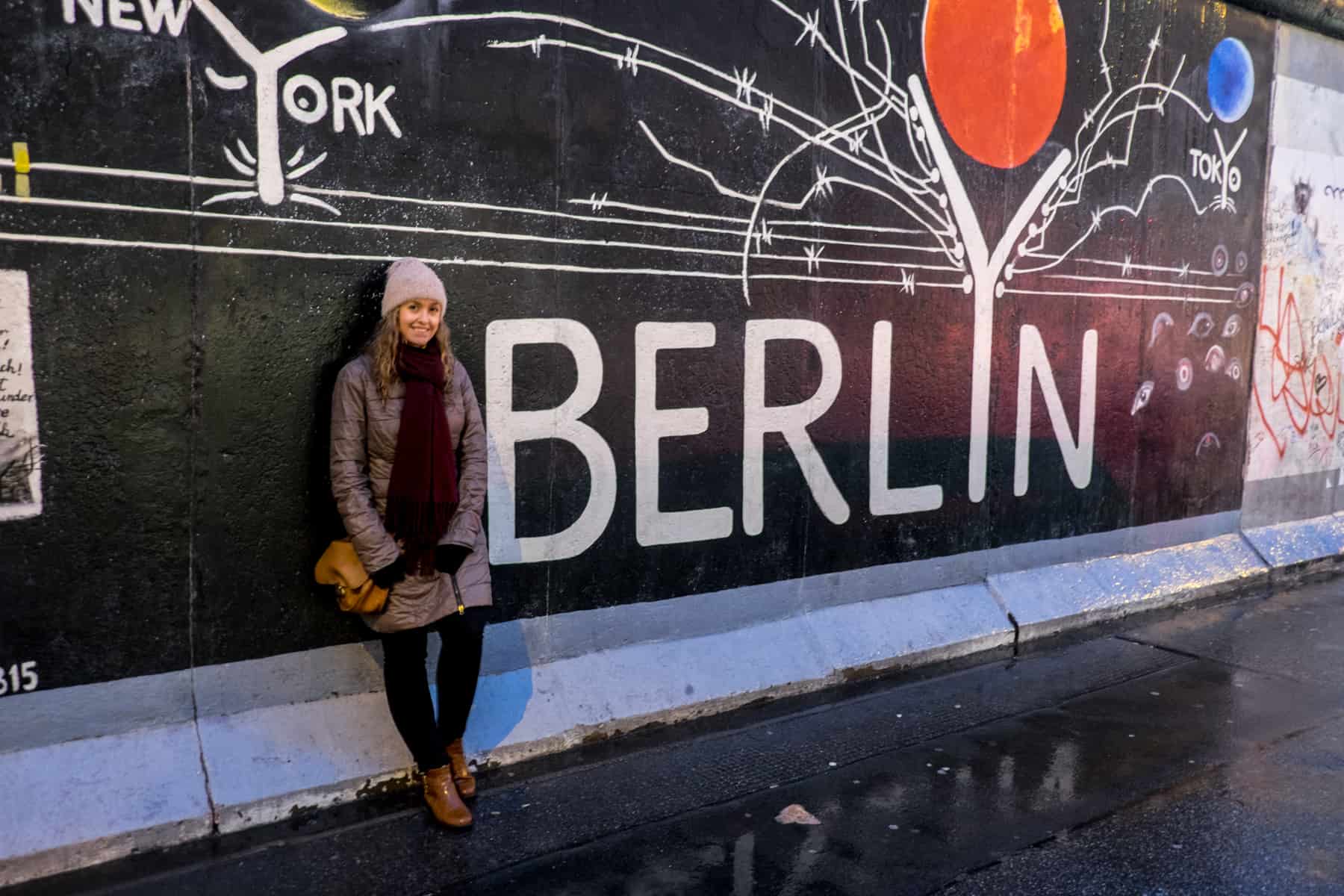
Eastside Gallery ‘Berlyn’ Artwork
It’s an area that also brings people together in the multicultural unison Berlin is known. You will find a few bars behind sections of the Wall, including one on a boat, one with a handcrafted beach and the funky Jamaican-themed bar, Yaam.
How to get to the East Side Gallery: S-Bahn Station Ostbahnhof (and a short walk)
The Berlin Wall Foundation has a dedicated website complete with images and information on guided tours at the East Side Gallery.
The entire stretch of the historical Bernauer Straße (street) is a Berlin Wall Memorial, where you will find yourself walking within the former border strip, also known as the ‘Death Strip’.
The open-air gallery highlights how the border facilities were constructed and controlled and the urban destruction it caused. On one side, you will see preserved sections of the Inner Wall how this particular section of Wall was connected to and built into houses and other prominent buildings – the Wall erected directly in front of the buildings situated on the East Berlin side of the street.
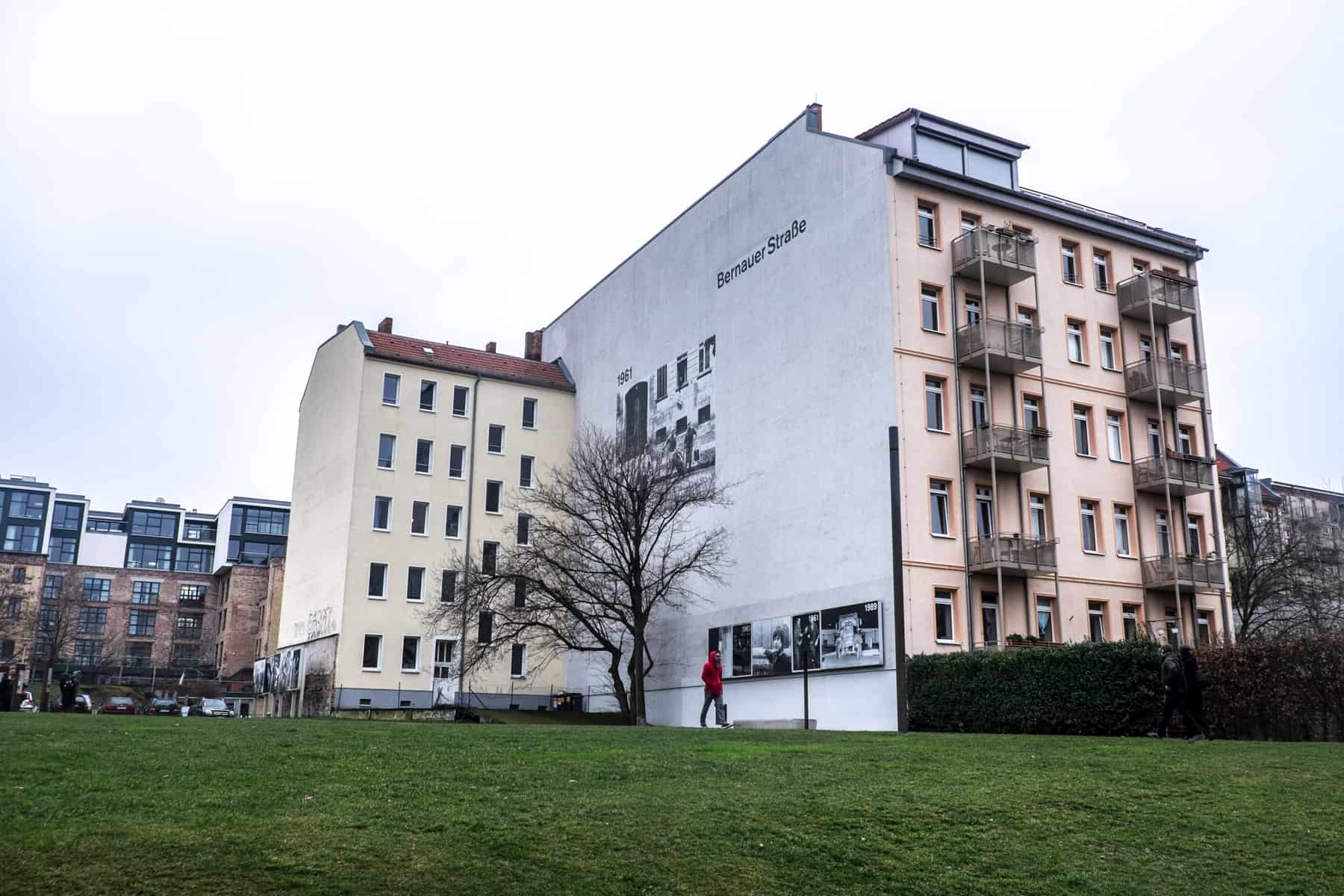
Former Border Strip of the Berlin Wall at Bernauer Strasse.
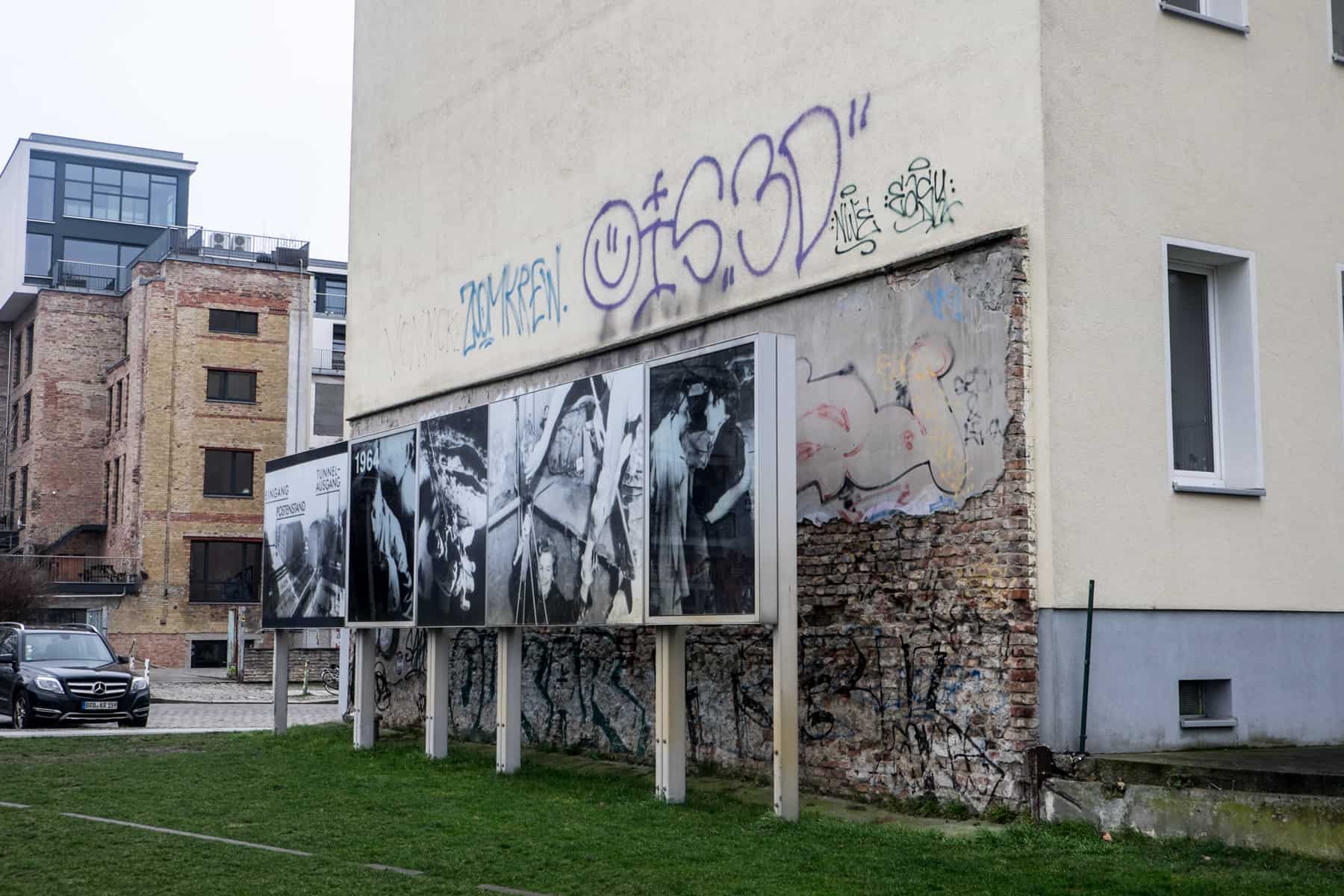
Bernauer Strasse Berlin Wall border house.
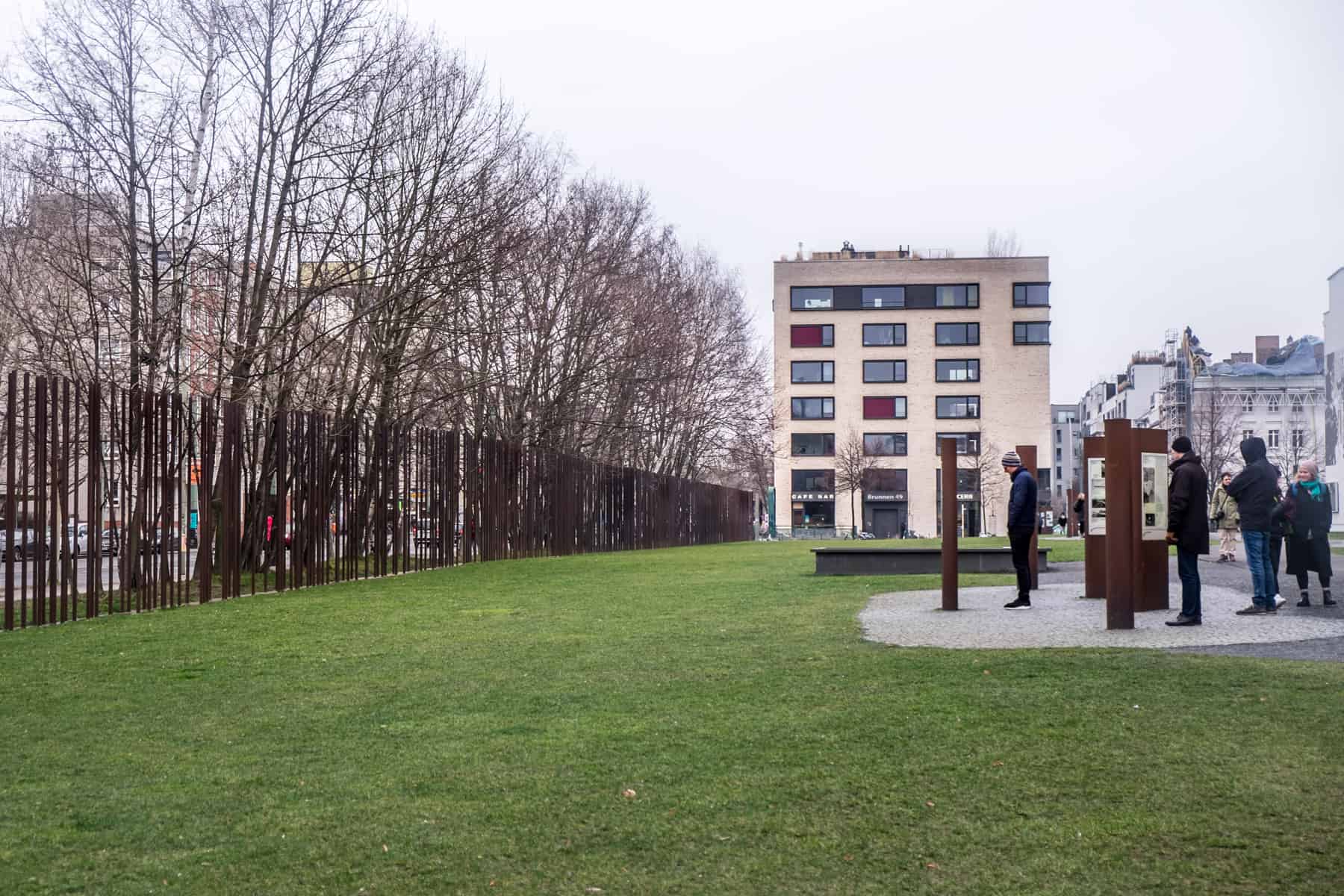
Berlin Wall Memorial site marked by a row of metal poles.
On the other side, you’ll notice the long brown bars where the Outer Wall and a watchtower once stood. The bars symbolise the imprisoned feeling of the Wall. There are also markings in the grass across the former border strip to highlight the route of the most famous and successful tunnels constructed for escape.
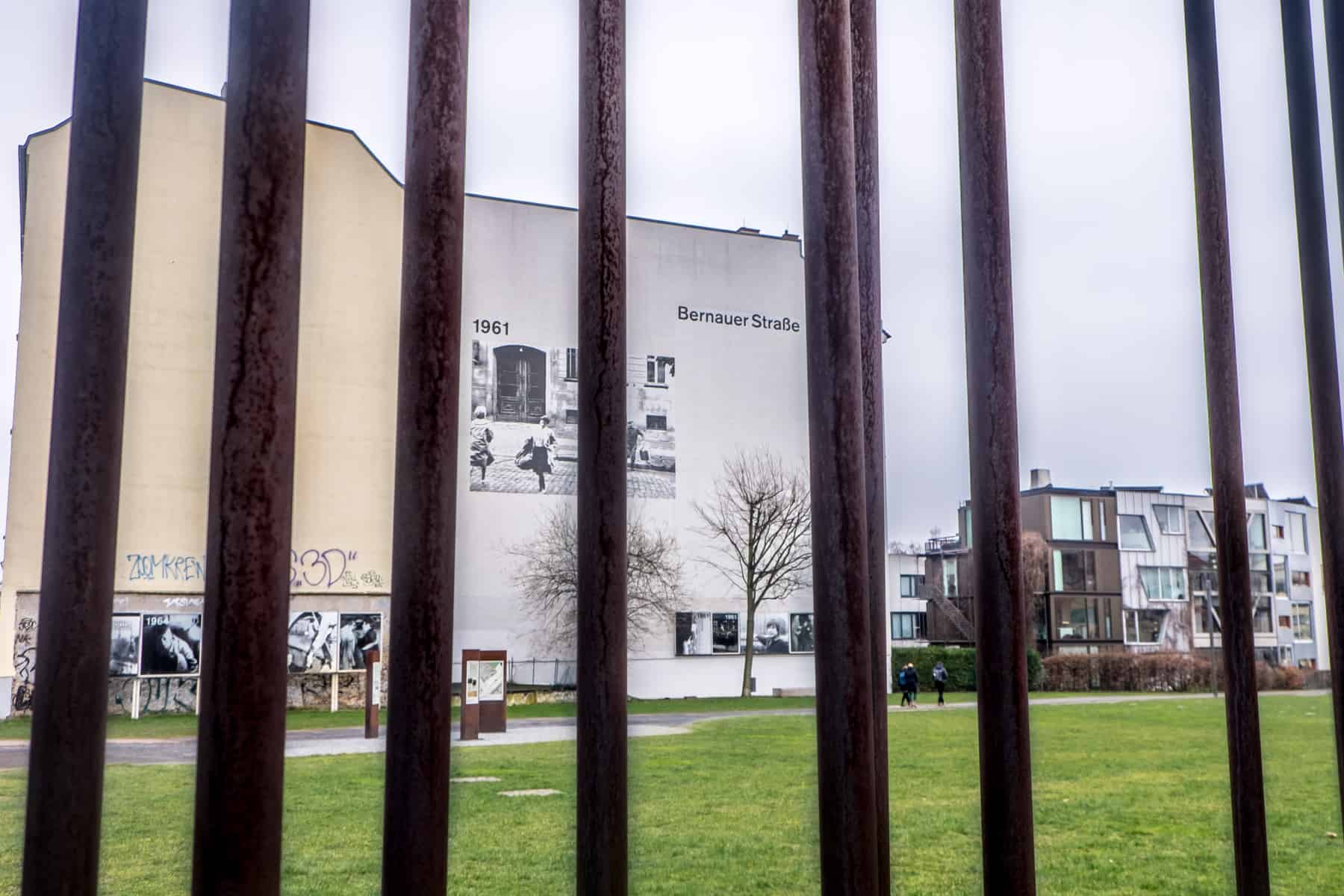
Berlin Wall Memorial at Bernauer Strasse.
In the middle of the grassy strip, enclosed from the rest of the Memorial is a preserved area of the Border Strip, seen from the roof of the adjacent Berlin Wall Documentation Centre that is part of the Memorial grounds.
View from the roof of the Berlin Wall Documentation Centre.
The Berlin Wall site at Bernauer Strasse is also where the first elements of unification took place. On 10th November 1989, the first sections of the Wall were knocked down to create a crossing between East and West Berlin. A year later, in 1990, Bernauer Strasse also marked the place where the border fortifications’ official demolition began.
How to get to the Berlin Wall Memorial: U-Bahn Station Bernauer Strasse.
The Berlin Wall Memorial Website has information on different tours and seminars at the Visitor Centre.
Located in the city’s centre, this section of the Berlin Wall is closest to Checkpoint Charlie – a mere 10-minute walk away. Its chiselled appearance is because this section of the Wall was chipped away for souvenirs, like those pieces of boxed rock that you can find in the stores. When I was in Berlin as a kid the ‘Wall Peckers’, as they came to be known, broke off pieces of the Berlin Wall and sold them as souvenirs on the street.
On the former site of the Gestapo and SS headquarters, The Topography of Terror is a permanent outdoor exhibition, combined with an indoor history museum.

Topography of Terror open air Berlin Wall exhibition.
Outside, lining the front of the Berlin Wall and its foundations, are information boards presented as a timeline of events detailing the history from the rise of the Nazi Party until the end of the war and the Berlin Wall construction.
How to get to the Topography of Terror: U-Bahn Station Kochstrasse
The Topography of Terror website provides information on guided tours and special exhibitions.
A preserved watchtower looming presides in front of a residential apartment block as construction takes place around it to build up a former Border Strip area. As stark as the tower is, it remains a memorial for all Berlin Wall victims killed by GDR border troops. It is also named for and in remembrance of Günter Litfin – the first person to be killed by East German forces and the second known person to die trying to cross the Berlin Wall.
A cross-border worker from the East and working in the West, Günter Litfin, tried to get back to the West via the River Spree and caught when crossing the Railway Bridge that marked the border. At the time, his death was framed as an accident as the GDR government didn’t want to admit people were trying to escape openly.

Günter Litfin Memorial Berlin Wall Watchtower.
How to get to the Günter Litfin Memorial: U-Bahn Station Schwartzkopffstraße
Read more here about the story of Günter Litfin and how the Memorial came to be.
It wasn’t until 2008 that the Berlin Wall’s last sections at Potsdamer Platz and Stresemannstraße were torn down. As a form of memorial, six Wall segments were kept and put on display outside of the entrance to the Potsdamer Platz station with accompanying information boards.
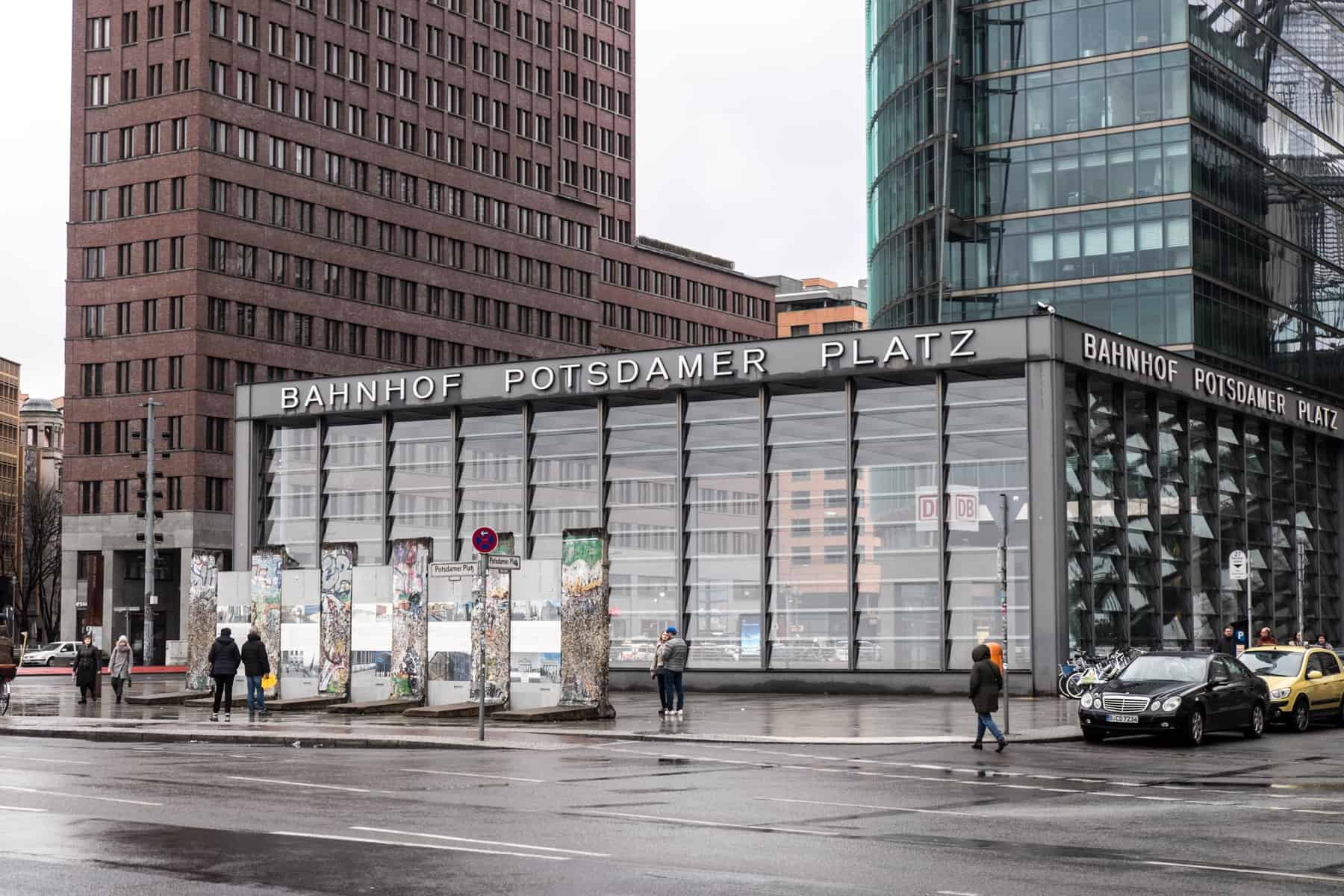
Six sections of the Berlin Wall outside the rail station of Potsdamer Platz.
How to get to Potsdamer Platz: S-Bahn and U-Bahn Potsdamer Platz.
Learn about the history of the Berlin Wall with a local guide. A 2.5-hour walking tour takes you to the former borders, bridges and tunnel spots of the once-divided city. This 3.5-hour bike tour covers 15 kilometres of the city, from border landmarks to watch towers.
Berlin has changed dramatically since the fall of the Wall and German Reunification. Architectural remains of the former East remain, historic buildings restored, and grand new buildings rising, yet the two halves of the city are now one. A city once divided but which now thrives in unison.
Importantly, the city’s dark history is always at the fore, with plenty of museums, memorials, and tours from which we can all learn when visiting.
READ MORE: Berlin Wall Museums and Exhibitions to Understand the Cold War Era.
READ MORE: Day Trip to Potsdam from Berlin – Cold War Closure on the West Berlin / East Germany Borderline.
What are your thoughts upon seeing the Berlin Wall? And how did it make you feel?
About Becki
Becki Enright is a British Travel Press Award-winning writer whose work focuses on changing perceptions about misunderstood aspects of destinations. Her writing combines storytelling with insight into the social, historical, political and economic factors that shape the country or place in relation to tourism. Becki has appeared live on Sky News and CNN and has contributed to high profile media including National Geographic, Time.com, Guardian online, New York Times, Grazia and Buzzfeed.
Aliese Kuykendall says
18 May 2015 at 5:13 pm
This is an excellent way to explain the feel of Berlin. I had the same thoughts when I looked at the remaining pieces of the wall. Such a unique place and I would love to visit again.
I love reading your posts–you have great thoughts about all of the different places and great advice for travellers. Also, amazing photos! 🙂
Rachel Leigh says
27 February 2015 at 9:44 pm
Your post is brilliant. I love how you took the time to understand the history instead of just doing the “touristy thing.” Excited to visit Berlin!
Leave a Reply Cancel reply
Your email address will not be published. Required fields are marked *
- Article Archives
- Work with me
- Privacy Policy


- Attractions
- Berlin TV Tower
- Alexanderplatz
- Museum Island
- Checkpoint Charlie
- Reichstag Building
- Arrival in Berlin
- Public Transport
- Best City Pass
- Lifestyle Guide
- Shopping Guide
- Restaurant Guide
- Nightlife Guide
- Central Station
- Districts in Berlin
- 3 Days Itinerary
- Conference Hotels
- Central Hotels
- Wellness Hotels
- Trade Fair Hotels
- City Guides
- Executive Transfers
- Conference Rooms
- Plastic & Aesthetic Surgery
- Wrinkle Treatment
- Injectable Dermal Fillers
- Plasma Therapy
- Mesotherapy
- Skin Renewal
- Non Surgery Operations
- Tours & Tickets
Guide to the Berlin Wall: Things to Do, Construction, History

This is our complete guide to the Berlin Wall, one of the city's most popular landmarks.
People from all over the world come to Berlin to explore the remains of the world-famous wall that divided the city in two for decades. In the process, they also go in search of traces of the former German Democratic Republic, GDR.
In this article, you will find our itinerary for a day at the Berlin Wall . We give you explanations and directions to the remains of the Wall as well as the most important sights, museums and memorials located along the former course of the Wall.
Also read about the history, facts and construction of the Berlin Wall, as well as answers to frequently asked questions.
What is the Berlin Wall?
The Berlin Wall is not, as its name suggests, a single wall. It is a border fortification system that the GDR government had built in August 1961 to prevent GDR citizens from fleeing to West Berlin.
The 156.4-kilometer-long wall separated East and West Berlin for 28 years until it finally fell on the evening of November 9, 1989.

Things to Do at Berlin Wall
On your way along the former course of the Berlin Wall, you will discover many important sights of the city that shed light on this tragic chapter of the German capital.
These include remains of the Berlin Wall, impressive buildings , and important museums and memorials .
Wall Remains & Places of Interest: A day at the Berlin Wall
This is our itinerary for a day exploring the Berlin Wall, which will take you to the most important remnants and sights along the former course of the Wall.
We have laid out the route so that you can walk them in the given order. In addition, you will find short directions under each sight, which will lead you to the next location.
To get a first, comprehensive picture of the Berlin Wall, the search for traces begins at the Berlin Wall Memorial on Bernauer Strasse .
- How to get to the first sight: To get to the memorial, it makes the most sense to drive or walk to Nordbahnhof. You can get there by S-Bahn lines S1, S2, S25 and S26, streetcar lines 12, M5, M8 and M10, or bus line 247. It takes half an hour to walk from the Brandenburg Gate or Museum Island.
1. Berlin Wall Memorial

This is the central memorial to the division of Germany and the victims of the Wall. It is spread over several sites along the road, all of which you can visit free of charge.
During the time of the inner-German division, the Berlin Wall ran along Bernauer Strasse. Over time, the former border strip was the scene of numerous escape attempts and dramatic events. Until the fall of the Wall, many escape tunnels were dug here, some of which were successfully used.
The Berlin Wall Memorial stretches over a length of 1400 meters. Below you will find in chronological order, starting with the North Station, what to expect at the memorial:
- Permanent exhibition : The Nordbahnhof is home to the permanent exhibition Grenz- und Geisterbahnhöfe im geteilten Berlin (Border and Ghost Stations in Divided Berlin), which shows the absurdity of Berlin's division using three subway and commuter rail lines as examples.
- Visitor Center: When you leave the station building, you will find the memorial's visitor center, where you can get information about what the memorial provides as well as orientation about the entire memorial grounds. Videos about the history of the Berlin Wall and the border system are shown on the upper floor.
- Documentation Center: About 250 meters further along Bernauer Strasse is the Documentation Center, a multimedia exhibition with numerous objects, biographical documents and audiovisual media that takes a historical look back at the events on Bernauer Strasse.
- Lookout Tower: There is also a five-story lookout tower here. As soon as you climb it, a clear view of the preserved wall segments on the opposite side of the street opens up, as well as a view of the Vorderland Wall, known worldwide as the Berlin Wall, a sandy area, a column road illuminated with lanterns, a signal fence and finally the Hinterland Wall. The barbed wire elements are no longer included. The border fortification has been listed since 1990 and cannot be entered.
- Tower: The original watchtower was removed when the wall was dismantled. A tower in its original condition was subsequently erected in its place.
- Wall segment: The approximately 70-meter-long wall segment has been almost completely preserved in its depth gradation. It is enclosed on both sides by two 70-meter-high steel walls. They are the memorial to the victims of the construction of the Wall and the division of Germany. The inscription "In memory of the division of the city from August 13, 1961 to November 9, 1989 and in memory of the victims of communist tyranny" is embedded in the steel.
- How to get to the next sight: After your sightseeing tour, return to Nordbahnhof and take the S-Bahn lines S1, S2, S25 or S26 in the direction of Berlin-Mitte just one stop to Bahnhof Friedrichstraße. Your destination is right there.

2. Palace of Tears
The check-in hall at Friedrichstraße station, built in 1962, was used for departures from East to West Berlin. This meant saying goodbye to friends and family, and many tears were shed. The place of painful separations was soon christened the Palace of Tears (Tränenpalast) in the vernacular.
The permanent exhibition "Place of German Division" documents the history and fates at the Palace of Tears through interviews, biographies and 570 original objects. Admission is free.
- Read more details about this sight in our article Palace of Tears.
- How to get to the next sight: The fastest way to reach the next sights is all on foot. Now walk along the left bank of the Spree for ten minutes to your next destination. This bank belonged to West Berlin at that time, the Spree itself was already East Berlin territory.
3. White Crosses Memorial
There are different figures about the number of deaths at the Berlin Wall. Most likely they amount to 139.
The memorial features eight places for crosses, seven of which are occupied. The crosses are inscribed on both sides with the names of Wall victims and the corresponding dates of death. The empty place, also in the shape of a cross, is dedicated to the unknown victims of the Wall.
- How to get to the next sight: The GDR border fortifications continued from here behind the east portal of the Reichstag building, which you can see on the right. Just walk straight ahead, you are on the former course of the Wall.
4. Reichstag Building

The magnificent Reichstag building, built between 1884 and 1894 in the neo-Renaissance style, is one of the most important sights of Berlin and the most significant landmark of Germany.
During the German division, however, it was meaningless and degenerated into a warehouse, among other things.
- Tip: Even though the Reichstag building doesn't have much to do with our topic, you might want to take a closer look at this beautiful building. You can take a guided tour of the plenary hall and visit the glass dome, from which you have a breathtaking view of Berlin. At the very least, you should go to the front of the building to experience all of its splendor.
- Read more details about this landmark in our guide to the Reichstag building.
- How to get to the next sight : Just stay on the path you took to get to the Reichstag building. In just five minutes of walking you will come across the next sight.
5. Brandenburg Gate

"Mr. Gorbachev, open this gate! Mr. Gorbachev, tear down this wall!". This is how U.S. President Ronald Reagan put into words what Germany and the world ardently wished for in his famous speech in front of the Brandenburg Gate on June 12, 1987.
After the Berlin Wall was built in 1961, the landmark stood on the restricted area and could not be crossed. On the evening of November 9, 1989, the day the Wall came down, moving scenes took place here. People tried to climb the Wall from the west. Many carried sparkling wine bottles or hammers and chisels and shouted, "The Wall must go!"
- Read more details about this sight in our main article Brandenburg Gate.
- How to get to the next sight: Follow Ebertstrasse in a southerly direction. Passing the Memorial to the Murdered Jews of Europe, you will reach your next destination in ten minutes.
- Tip : Take a short break at the Memorial to the Murdered Jews of Europe , the so-called Holocaust Memorial. 2711 cuboid concrete stelae on an area of around 19,000 square meters commemorate the six million European Jews murdered by the Nazis.
6. Potsdamer Platz

After the end of World War II and the occupation of the city by the Allies, the demarcation lines between the Soviet, British and American sectors met at Potsdamer Platz.
The Berlin Wall ran through Potsdamer Platz. An inner-city wasteland, a no man's land, was created. From a high stand at the Wall, curious West tourists could catch a glimpse across to East Berlin.
After reunification, the largest construction site in Europe was built here. You can see the result with your own eyes here.
The wall segments on the square were subsequently rebuilt here and are a very popular photo motif, as the background with the modern buildings is a stark contrast. On the ground you can see the former course of the wall.
Tip: Directly on the square, in the Kollhoff Tower, is the Panoramapunkt Potsdamer Platz viewing platform at a height of 100 meters. Ride up in Europe's fastest elevator and enjoy the spectacular view over the rooftops of Berlin. Here you can also visit an exhibition on the history of Potsdamer Platz.
- Read more details about this sight in our main article Potsdamer Platz .
- How to get to the next sight: Your next destination is only 300 meters away. Just walk to the neighboring Leipziger Platz.
7. German Spy Museum

KGB, Stasi, CIA, MI6 and MAD! At the German Spy Museum on the former death strip, you will get an insight into the world of East-West spies in Berlin.
This is where you will discover the traces of the international spies whose activities ranged from exchanging agents to tapping enemy communications.
- Read more details about this sight in our main article German Spy Museum.
- How to get to the next sight : When you leave the museum, go left and immediately turn left again into the passage. On its other side, turn right until you reach Stresemanstraße and then turn left again into Niederkirchnerstraße. Your destination is a little further on, on the right side of the street. The walk takes about eight minutes.
8. Wall Remains in Niederkirchnerstraße

You can see here a piece of the Berlin Wall about 200 meters long. The wall segment suffered significant damage. This is mainly due to souvenir hunters, so-called "Mauerspechte" ( wall woodpeckers ), who worked the concrete wall with hammers or similar after the fall of the Wall in 1989 in order to get hold of crushed parts of the Wall as souvenirs.
In some places, only the steel reinforcement of the Wall is still visible.
- Tip: Behind the Wall is Berlin's most visited museum, the Topography of Terror . The documentation does not have anything to do directly with the Berlin Wall, but indirectly it does. This is because the division of the German capital was a consequence of events following World War II, which was sparked by the Nazis under the leadership of Adolf Hitler. In the museum, the horror period under the Nazis is reviewed, especially between 1933 and 1945. The entrance is free.
- How to get to the next sight: Walk straight ahead for four minutes on Zimmerstraße. The next sight is on the left side of the street.
9. The Wall - Asisi Panorama Berlin
The Asisi Panorama is a monumental 360-degree circular image showing the Berlin Wall on a scale of 1:1. Look from West Berlin to East Berlin on a fictional autumn day in the 1980s and get a glimpse of what everyday life was like for Berliners.
- Read more details about this sight in our main article The Wall - Asisi Panorama Berlin.
- How to get to the next sight: The next destination is just across the street from the Asisi Panorama, on the corner of Zimmerstraße and Friedrichstraße.
10. Black Box - Cold War
The Black Box is the only exhibition in Germany on the subject of the Cold War and provides information at a historical location about the so-called tank confrontation of 1961 at the Checkpoint Charlie border crossing in the context of world politics from 1947 to 1989, the period of the so-called Cold War. Admission is free.
- Read more details about this sight in our main article Black Box - Cold War.
- How to get to the next sight: Walk just a few meters south into Friedrichstraße. The next sight is already in your field of vision.
11. Checkpoint Charlie

The military checkpoint Checkpoint Charlie is the most famous and most photographed former border crossing at the Berlin Wall.
Checkpoint Charlie became world famous on October 27, 1961, when, after the construction of the Wall, American and Soviet tanks took up positions here and faced each other with live ammunition. However, it did not come to open confrontation.
- Read more details about this sight in our main article Checkpoint Charlie .
- How to get to the next sight: The next sight is further south, diagonally opposite the checkpoint on the left side of the street.
12. Wall Museum - House at Checkpoint Charlie
At the Haus am Checkpoint Charlie , you can take a closer look at the countless escape attempts from the GDR and the prevailing injustice during the time of the SED regime. See extremely inventive escape objects as well as many props from nearly 30 years of Wall and escape history.
- Read more details about this sight in our main article Mauermuseum - Haus am Checkpoint Charlie.
- How to get to the next sight: Now we continue by public transport again. The Kochstraße subway stop is just to the left of the museum. Take the U6 in the direction of Alt-Tegel to Friedrichstraße station. There you change to one of the S-Bahn lines S3, S5, S7 or S9 and travel to Ostbahnhof. The next sight is a three-minute walk from there.
13. East Side Gallery
The 1300 meter long East Side Gallery is the most famous, still preserved part of the Berlin Wall. 118 artists from 21 countries painted and spray-painted 106 works on this section in the months following the fall of the Wall.
The socialist brotherly kiss of Honecker and Brezhnev and the Trabant seemingly breaking through the concrete are among the most photographed paintings.
- Read more details about this sight in our main article East Side Gallery .
- How to get to the next sight: Your next destination is at the end of the East Side Gallery.
14. The Wall Museum

Located in the former death strip , The Wall Museum spans an audiovisual arc from the division of Germany after World War II and the construction of the Berlin Wall to the memorable events that finally brought about the fall of the Wall.
- Read more details about this attraction in our main article The Wall Museum.
- How to get to the next sight: After you leave the museum, turn right. Then look towards the Spree River and spot the next attraction.
15. Oberbaum Bridge

The Oberbaum Bridge ( Oberbaumbrücke ) played an important role as a border crossing point during the division of Berlin. After the sector borders were drawn, it connected the Soviet sector with the American sector.
After the division of the city into East and West Berlin, the first fatal border incident occurred here in 1948, during the Berlin Blockade . After the wall was built, it was only allowed to be used by pedestrians.
- Read more details about this sight in our main article Oberbaum Bridge.
- How to get to the next sight: With the bridge behind you, walk down Warschauer Strasse for about eight minutes to the train station of the same name. There you take one of the S-Bahn lines S3, S, S7 or S9 into the city until Hackescher Markt. From there it will take you about six minutes to your final destination.
16. DDR Museum

The last attraction is not located on the former course of the Berlin Wall. However, it is of particular importance in the context of the topic, because here you can go on a journey through time to the former GDR .
In this museum you will learn everything about life in the German Democratic Republic. You are encouraged to expand your knowledge in an entertaining way and to experience history up close. Authentic originals and worldwide unique interactive installations are waiting to be touched and tried out.
- Read more details about this attraction in our main article DDR Museum .
History of the Berlin Wall

Why was the Berlin Wall built?
In 1952, the GDR began to secure the inner-German border with fences and alarm devices. However, the almost 44-kilometer-long sector border between West and East Berlin as well as the border to the Berlin environs could not be completely controlled.
From 1945 until the construction of the Wall in 1961, approximately 3.5 million people fled the Soviet occupation zone, later the GDR, and East Berlin. More than half of the refugees were under 25 years of age, including well-educated people. Even one day before the Wall was built, more than 3,000 refugees were counted.
The resulting labor shortage significantly threatened the economic strength of the GDR and ultimately the continued existence of the state. During the night of August 12-13, 1961, the National People's Army began to seal off the roads and railroads at a depth of about 1,000 meters behind the border to West Berlin. Construction of the Berlin Wall began during the night of August 17-18, 1961.
Structure of the Berlin Wall

The Berlin Wall is not, as the name suggests, a single wall. Rather, the Wall is only the part of an enormously fortified border installation, which was not visible from the former West Berlin.
In front of this wall ran the demarcation line between the occupation zones of West and East Berlin. The border fortification itself was located on the territory of East Berlin. Seen from there, it had the following structure:
- The border area, which could only be entered with a special permit.
- The so-called Hinterland wall as the first barrier.
- The border signal fence, which triggered an alarm when touched.
- The hump barriers.
- The area barrier called " Stalin lawn " with steel needles and running facilities for dogs.
- The command posts and observation towers.
- The so-called " Kolonnenweg " with patrolling border guards.
- The light line for daylight illumination of the entire "death strip".
- The evidence protection strip.
- The motor vehicle barrier for vehicles coming from the GDR.
- The Vorderland wall , the part of the border fortifications known worldwide as the Berlin Wall.

The Fall of the Berlin Wall
"We live on Bornholmer Strasse in the East. I was already in bed, the old lady was still walking the dog, came up and said, "Hey, they're all going west! I' m like pulled up and went over." That's how it read in issue 46/1989 of the news magazine Spiegel. What had happened?
On the evening of November 9, 1989, at around 7 p.m., Günter Schabowski, the GDR's secretary for information, declared in front of running cameras that GDR citizens would be given the freedom to travel. When asked, he adds that this is valid with immediate effect.
GDR citizens quickly gather at the border crossings to get to West Berlin. The head of the Bornholmer Strasse border crossing, Lieutenant Colonel of the passport control unit, Harald Jäger, repeatedly asks his superiors what is to be done, but receives no or meaningless instructions.
Only at 9:20 p.m. is he ordered to allow "the biggest screamers" to leave the country, but more and more GDR citizens crowd in front of the border crossing and demand to leave. The situation intensifies.
At 11:29 p.m., Harald Jäger, acting on his own authority and contrary to orders, orders the border crossing to be opened and all passport controls to be suspended. Nearly 1,000 GDR citizens storm across the Bösebrücke bridge to the West.
The lieutenant colonel reports the situation to the Ministry for State Security. As a result, the other border crossings also receive instructions to open the barriers at around midnight. Citizens from West Berlin also crossed into East Berlin "just like that" without a pass.
Facts about the Berlin Wall
- During the night of August 12 to 13, 1961, the GDR government had the sector border in the inner city area of Berlin and the border around West Berlin sealed off with barbed wire. Construction of the Berlin Wall began on the night of August 17-18, 1961.
The Berlin Wall was 156.4 kilometers long.
The Berlin Wall ran around West Berlin. 43.7 kilometers of the Berlin Wall ran along the sector border between West and East Berlin.
- The Berlin Wall was called the "anti-fascist protective wall" by the leadership of the GDR.
- The construction of the Berlin Wall probably cost 120 million East Marks.
- It is not known what the extension and repair of the Berlin Wall cost until 1989.
At least 5,075 GDR citizens managed to escape over the Berlin Wall to West Berlin.
- The number of failed escape attempts over the Berlin Wall is not known.
At least 136 people were killed at the Berlin Wall.
- The Berlin Wall was opened after 28 years, two months and 28 days, on November 9, 1989 at 11:29 p.m. at the Bornholmer Strasse border crossing at the Bösebrücke.
- The demolition of the Berlin Wall lasted only a little more than a year and officially ended on November 30, 1990.
- There were two main reasons for the rapid demolition of the Berlin Wall: On the one hand, Berliners hated the monstrous structure very much, and on the other hand, there was great interest in selling vacated land in prime locations for a profit.
- After its demolition, most of the Berlin Wall was broken up in concrete plants and used as a substructure for new roads.
- Selected segments of the Berlin Wall were sold all over the world, for example to the US secret service CIA for its new building in Langley, Virginia, or to the Vatican Gardens.

FAQ about the Berlin Wall
WHEN WAS THE BERLIN WALL BUILT?
During the night of August 12-13, 1961, the GDR government had the sector border in downtown Berlin and the border around West Berlin sealed off with barbed wire. Construction of the Berlin Wall began during the night of August 17-18, 1961.
WHY WAS THE BERLIN WALL BUILT?
From 1945 until the construction of the Wall in 1961, approximately 3.5 million people fled the Soviet occupation zone, later the GDR, and East Berlin. More than half of the refugees were under 25 years of age, including well-educated people. Even one day before the Wall began to be built, more than 3,000 refugees were counted.
HOW LONG WAS THE BERLIN WALL?
WHERE DID THE BERLIN WALL RUN?
HOW MUCH DID THE BERLIN WALL COST?
The construction of the Berlin Wall probably cost 120 million East Marks. It is not known what the expansion and repair of the Wall cost until 1989.
HOW WAS THE BERLIN WALL CONSTRUCTED?
The Berlin Wall is not, as its name suggests, a single wall. Rather, the Wall is only the part of an enormously fortified border installation that was not visible from the former West Berlin.
In front of this wall ran the demarcation line between the occupation zones of West and East Berlin. The border fortification itself was located on the territory of East Berlin and the GDR, respectively. Viewed from the eastern part of the city, it had the following structure:
Border area, hinterland wall, border signal fence, hump barriers, area barrier, dog runs, command posts, observation towers, column route, light route, lane security strip, motor vehicle barrier, front land wall (the wall known worldwide as the Berlin Wall).
WHAT WAS THE BERLIN WALL CALLED BY THE GDR LEADERSHIP?
The Berlin Wall was called the "antifascist wall" by the GDR leadership.
WHERE AND WHEN WAS THE BERLIN WALL FIRST OPENED?
The Berlin Wall was first opened on November 9, 1989, at 11:29 p.m. at the Bornholmer Strasse border crossing at the Bösebrücke bridge.
HOW DID THE BERLIN WALL FALL?
Hundreds of thousands of GDR citizens demonstrated in the fall of 1989 for free elections, the admission of political opposition groups and the lifting of restricted freedom of travel.
As the state leadership came under increasing pressure, Günter Schabowski, the GDR's secretary for information, declared in front of running cameras on the evening of November 9, 1989, at around 7 p.m., that GDR citizens would be granted freedom to travel with immediate effect.
This led to a mass rush to the Berlin border crossings. As a result, the controls were discontinued and the Wall fell.
HOW LONG DID THE BERLIN WALL STAND?
The Berlin Wall stood for 28 years, two months and 28 days, from August 13, 1961 to November 9, 1989.
WHERE IN Berlin ARE REMAINS OF THE BERLIN WALL AND HOW LONG ARE THEY?
Remnants of the Berlin Wall are located in the following locations in Berlin:
- Mühlenstraße "East Side Gallery," 1360 meters
- Wall Park on Gleimstrasse, 300 meters
- Bernauer Street, 300 meters
- Niederkirchnerstraße, 200 meters
- Bornholmer Street, 130 meters
- Province Street, 80 meters
- Am Bürgerpark, 50 meters
- St. Hedwig Cemetery, 15 meters
- Potsdamer Square, 9 meters
- Wall Museum - House at Checkpoint Charlie, 1 meter
The 800-meter-long Wall on Gartenstrasse and the 350-meter-long Wall on Norwegianstrasse stood at their respective locations before the Berlin Wall was built and were integrated into it as the Vorderland Wall.
WHAT HAPPENED TO THE DEMOLISHED BERLIN WALL?
After its demolition, most of the Berlin Wall was crushed in concrete factories and used as a substructure for new roads. Selected segments of the Wall were sold all over the world,
Some wall segments of the Berlin Wall can be found today in various places around the world, for example in the new building of the US secret service CIA in Langley, Virginia or in the Vatican Gardens.
WHY DID THE BERLIN WALL DISAPPEAR SO QUICKLY?
There were two main reasons for the rapid demolition of the Berlin Wall: On the one hand, Berliners hated the monstrous structure very much; on the other hand, there was great interest in selling vacated land in prime locations at a profit.
HOW MANY PEOPLE DIED AT THE BERLIN WALL?
HOW MANY PEOPLE MANAGED TO ESCAPE OVER THE BERLIN WALL?
HOW MANY ESCAPE ATTEMPTS OVER THE BERLIN WALL FAILED?
The number of failed escape attempts is not known.
Guide to Checkpoint Charlie: Tips, History & More
Guide to the ddr museum in berlin: exhibition, tickets & more, hitler in berlin: 17 imposing remnants of the “third reich”, top 50 things to do in berlin [+ tickets].
- teilen
- teilen
- merken
Berlin Travel Stories

Aug 7, 2023 • 5 min read
In Berlin, 24/7 spätis are a centerpiece of big nights out: here’s how to hang out, shop, pre-drink and party at them.

Jul 31, 2023 • 10 min read
It can seem intimidating at first, but getting around Berlin is quick, efficient and relatively cheap. Here's our guide to transport in the German capital.
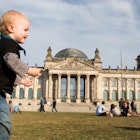
Jul 31, 2023 • 5 min read
From street festivals to beer gardens, Berlin’s bohemian attitude makes traveling with family and kids incredibly fun and stress-free.

Jul 29, 2023 • 7 min read
From panoramic vistas and sinister museums to hidden street art, here are all the excellent free things to do and places to go in Berlin.
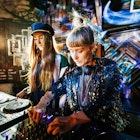
Jul 28, 2023 • 5 min read
Make the most of your time in Berlin, a city with much to see and do, with our ultimate guide to the best time to visit.
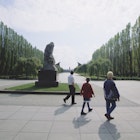
Jul 24, 2023 • 6 min read
Forest walks, cycling routes, dips in the lake, historic sites and much more are all within easy reach of Berlin – and sometimes even within the city limits.
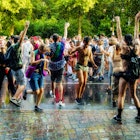
Jul 14, 2023 • 7 min read
Berlin is one of the most vibrant, fun and welcoming cities in Europe. These insider tips will make your first visit the best it can be.

Jul 9, 2023 • 7 min read
Even though Berlin is an incredible city with lots to offer, its attractions don't cost the earth. Here's how to visit Berlin on a budget.
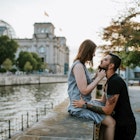
Jul 8, 2023 • 7 min read
With one of the top nightlife scenes in the world and fascinating historic sites to explore, here are Berlin's best experiences.
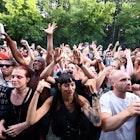
Aug 24, 2022 • 7 min read
Forget Berlin's nightlife, the daytime parties are where you want to be. Here’s an insider’s guide to afternoon raves.
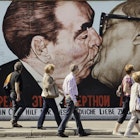
Feb 11, 2022 • 6 min read
Berlin is a vibrant hub for freedom of expression, and more street art is appearing all the time. Here are the best places to see street art in the city.

Jan 28, 2022 • 7 min read
Read on for our guide to the best of Berlin’s over 200 museums, including our picks for art museums, history museums, contemporary-art galleries and more.
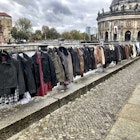
Jan 17, 2022 • 5 min read
From vintage postcards to secondhand clothing, Berlin's flea markets have everything a bargain hunter needs, plus atmosphere, live music and beers.
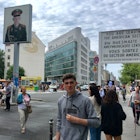
Oct 20, 2021 • 5 min read
Choosing the right destination for a holiday with teens is tough, but Rhonda Carrier found Berlin to be the ideal place.

Nov 19, 2020 • 6 min read
Lorna Cannon, founder of Refugee Voices Tours, explains how her guides share their stories of coming to Berlin as refugees.
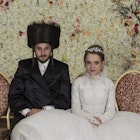
Apr 29, 2020 • 5 min read
The show's filming locations set the scene for a story of repression and self-discovery.
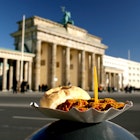
Mar 13, 2020 • 7 min read
Berlin’s gastro landscape now tastier than ever before. Here are our recommendations for budget, fine and uniquely Berlin dining.
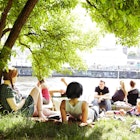
Mar 1, 2020 • 4 min read
Writer Ryan Barrell was drawn to Germany's capital for its unparalleled art scene and vibrant culture. Here's his guide to exploring Berlin like a local.
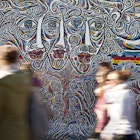
Feb 7, 2020 • 4 min read
World famous for its divisive wall, lively nightlife and street art, there’s a lot to like about Berlin. But its darker side of its history might be the most…
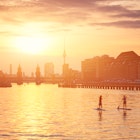
Oct 4, 2019 • 6 min read
Their independence is growing, so when you travel with tweens and teens be sure to think outside the box. Here are our suggestions to get the plan rolling.
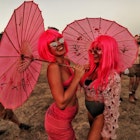
Sep 18, 2019 • 8 min read
We’ve picked out ten of the best music festivals happening across the world between the months of September and March.

Aug 16, 2019 • 6 min read
From a smoky jazz club in Paris to the throbbing beats of Berghain in Berlin, we've got the perfect round up of dream destinations for your musical tastes.
- History Classics
- Your Profile
- Find History on Facebook (Opens in a new window)
- Find History on Twitter (Opens in a new window)
- Find History on YouTube (Opens in a new window)
- Find History on Instagram (Opens in a new window)
- Find History on TikTok (Opens in a new window)
- This Day In History
- History Podcasts
- History Vault
Berlin Wall
By: History.com Editors
Updated: November 16, 2023 | Original: December 15, 2009

On August 13, 1961, the Communist government of the German Democratic Republic (GDR, or East Germany) began to build a barbed wire and concrete “Antifascistischer Schutzwall,” or “antifascist bulwark,” between East and West Berlin. The official purpose of this Berlin Wall was to keep so-called Western “fascists” from entering East Germany and undermining the socialist state, but it primarily served the objective of stemming mass defections from East to West. The Berlin Wall stood until November 9, 1989, when the head of the East German Communist Party announced that citizens of the GDR could cross the border whenever they pleased. That night, ecstatic crowds swarmed the wall. Some crossed freely into West Berlin, while others brought hammers and picks and began to chip away at the wall itself. To this day, the Berlin Wall remains one of the most powerful and enduring symbols of the Cold War.
The Berlin Wall: The Partitioning of Berlin
As World War II came to an end in 1945, a pair of Allied peace conferences at Yalta and Potsdam determined the fate of Germany’s territories. They split the defeated nation into four “allied occupation zones”: The eastern part of the country went to the Soviet Union , while the western part went to the United States, Great Britain and (eventually) France.
Even though Berlin was located entirely within the Soviet part of the country (it sat about 100 miles from the border between the eastern and western occupation zones), the Yalta and Potsdam agreements split the city into similar sectors. The Soviets took the eastern half, while the other Allies took the western. This four-way occupation of Berlin began in June 1945.
The Berlin Wall: Blockade and Crisis
The existence of West Berlin, a conspicuously capitalist city deep within communist East Germany, “stuck like a bone in the Soviet throat,” as Soviet leader Nikita Khrushchev put it. The Russians began maneuvering to drive the United States, Britain and France out of the city for good. In 1948, a Soviet blockade of West Berlin aimed to starve the western Allies out of the city. Instead of retreating, however, the United States and its allies supplied their sectors of the city from the air. This effort, known as the Berlin Airlift , lasted for more than a year and delivered more than 2.3 million tons of food, fuel and other goods to West Berlin. The Soviets called off the blockade in 1949.
Did you know? On October 22, 1961, a quarrel between an East German border guard and an American official on his way to the opera in East Berlin very nearly led to what one observer called "a nuclear-age equivalent of the Wild West Showdown at the O.K. Corral." That day, American and Soviet tanks faced off at Checkpoint Charlie for 16 hours. Photographs of the confrontation are some of the most familiar and memorable images of the Cold War.
After a decade of relative calm, tensions flared again in 1958. For the next three years, the Soviets–emboldened by the successful launch of the Sputnik satellite the year before during the “ Space Race ” and embarrassed by the seemingly endless flow of refugees from east to west (nearly 3 million since the end of the blockade, many of them young skilled workers such as doctors, teachers and engineers)–blustered and made threats, while the Allies resisted. Summits, conferences and other negotiations came and went without resolution.
Meanwhile, the flood of refugees continued. In June 1961, some 19,000 people left the GDR through Berlin. The following month, 30,000 fled. In the first 11 days of August, 16,000 East Germans crossed the border into West Berlin, and on August 12 some 2,400 followed—the largest number of defectors ever to leave East Germany in a single day.
The Berlin Wall: Building the Wall

That night, Premier Khrushchev gave the East German government permission to stop the flow of emigrants by closing its border for good. In just two weeks, the East German army, police force and volunteer construction workers had completed a makeshift barbed wire and concrete block wall –the Berlin Wall–that divided one side of the city from the other.
Before the wall was built, Berliners on both sides of the city could move around fairly freely: They crossed the East-West border to work, to shop, to go to the theater and the movies. Trains and subway lines carried passengers back and forth. After the wall was built, it became impossible to get from East to West Berlin except through one of three checkpoints: at Helmstedt (“Checkpoint Alpha” in American military parlance), at Dreilinden (“Checkpoint Bravo”) and in the center of Berlin at Friedrichstrasse (“Checkpoint Charlie”). (Eventually, the GDR built 12 checkpoints along the wall.) At each of the checkpoints, East German soldiers screened diplomats and other officials before they were allowed to enter or leave. Except under special circumstances, travelers from East and West Berlin were rarely allowed across the border.
The Berlin Wall: 1961-1989
The construction of the Berlin Wall did stop the flood of refugees from East to West, and it did defuse the crisis over Berlin. (Though he was not happy about it, President John F. Kennedy conceded that “a wall is a hell of a lot better than a war.”) Almost two years after the Berlin Wall was erected, John F. Kennedy delivered one of the most famous addresses of his presidency to a crowd of more than 120,000 gathered outside West Berlin’s city hall, just steps from the Brandenburg Gate . Kennedy’s speech has been largely remembered for one particular phrase. “I am a Berliner.”
In all, at least 171 people were killed trying to get over, under or around the Berlin Wall. Escape from East Germany was not impossible, however: From 1961 until the wall came down in 1989, more than 5,000 East Germans (including some 600 border guards) managed to cross the border by jumping out of windows adjacent to the wall, climbing over the barbed wire, flying in hot air balloons, crawling through the sewers and driving through unfortified parts of the wall at high speeds.
The Berlin Wall: The Fall of the Wall
On November 9, 1989, as the Cold War began to thaw across Eastern Europe, an East German Communist Party spokesman announced a series of new policies regarding border crossings. When pressed on when the changes would take place, he said “As far as I know... effective immediately, without delay.” East Berliners flocked to border checkpoints, some chanting “Tor auf!” (“Open the gate!”). Within hours, the guards were letting the crowds through, where West Berliners greeted them with flowers and champagne.
More than 2 million people from East Berlin visited West Berlin that weekend to participate in a celebration that was, one journalist wrote, “the greatest street party in the history of the world.” People used hammers and picks to knock away chunks of the wall–they became known as “mauerspechte,” or “wall woodpeckers”—while cranes and bulldozers pulled down section after section. Soon the wall was gone and Berlin was united for the first time since 1945. “Only today,” one Berliner spray-painted on a piece of the wall, “is the war really over.”
The reunification of East and West Germany was made official on October 3, 1990, almost one year after the fall of the Berlin Wall.

HISTORY Vault: Declassified: Rise and Fall of the Wall
Mine formerly guarded vaults and archives around the world to reveal untold stories about the brutal life and catastrophic death of the Berlin Wall, a central symbol of the 20th century's longest and deadliest war.

Sign up for Inside History
Get HISTORY’s most fascinating stories delivered to your inbox three times a week.
By submitting your information, you agree to receive emails from HISTORY and A+E Networks. You can opt out at any time. You must be 16 years or older and a resident of the United States.
More details : Privacy Notice | Terms of Use | Contact Us
This website uses cookies to improve your browsing experience and analyze the use of the website. Learn More

Berlin Wall Memorial Guide

This post is a guide to the Berlin Wall Memorial ( Gedenkstätte Berliner Mauer) .
We include tips on how to get here, and planning your visit, as well as a self-guided tour of this large memorial.
- Why Come Here?
- Plan Your Visit
- Main Features
- East Berlin Sights + Tours
- Free Tours by Foot
Stretching over 1.4 kilometers (roughly 1 mile) of the Berlin Wall’s foundations, this entirely free memorial is the first stop anyone interested in Berlin’s separated past should visit .
It boasts a variety of fascinating exhibitions along with an opportunity to experience the Wall as it would have felt for those living on both sides of Bernauer Strasse (and Berlin).
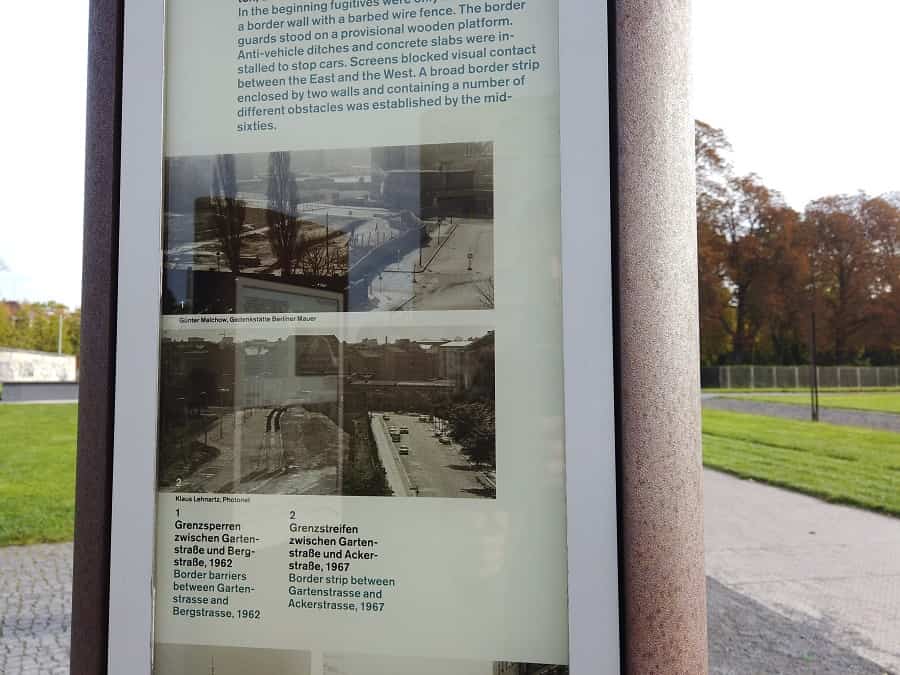
This moving memorial honors the victims of the GDR regime.
It also explains the many ways that its citizens tried to escape, including tunnels, and particularly for Bernauer Strasse, jumping from windows and roofs.
The memorial also explains the varied methods that the GDR regime cruelly used to keep its citizens from escaping.
The memorial is also the location of one of the most famous escape attempts.

It was captured for posterity when a photographer zoomed in on a young East German Soldier named Conrad Shuman as he lept over barbed wire and into the freedom of West Berlin.
In comparison to the East Side Gallery, the Berlin Wall Memorial is far more educational, and for most visitors, in our opinion, far more interesting.
With its documentation center, lookout tower , preserved death strip, and content stations, this memorial provides more details and context than the singular (though long) piece of the wall.
PLAN YOUR VISIT
The memorial consists of 3 main parts, a visitor center, a large outdoor exhibit, and a documentation center with a lookout tower.
The outdoor exhibit is the largest part and it is divided into 4 sections. We detail all of the exterior components in our main features section .
We recommend starting your visit at the Nordbanhof S-Bahn Station.
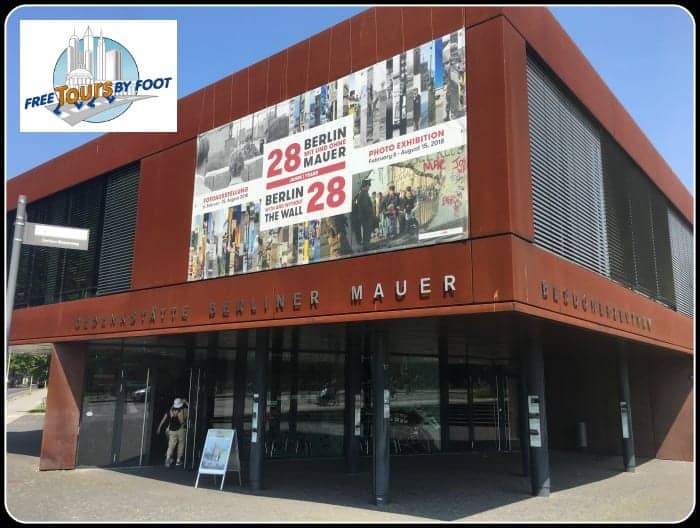
This is where the Berlin Wall Memorial starts and where the visitor center is located.
There is an exhibit inside of the Nordbahnhof S-Bahn Station titled "Ghost Stations".
Admission is free and you do not need a ticket to visit any parts of the Memorial.
Both the visitor and documentation centers offer free toilets and there is a small cafe located next to the Documentation Center.
The visitor center has a help desk, a small bookshop, an introductory film, and interactive guides that cover all Berlin Wall sights throughout the city.
There is no security check, but eating and drinking are prohibited in the Documentation Center.
When stepping inside the Church of Reconciliation you are also asked by signs to be quiet and respectful.
We summarize what you will see in our Main Features section, and t here are 3 audio tours that you can take with your smartphone: a 30-minute, 75-minute, and a 2-hour tour .
Hours of Operation
Outdoor Exhibit
- Daily from 8:00 am until 22:00 (10 pm)
Visitor and Documentation Centers
- Tues - Sun from 6:00 am until 18:00 (6 pm)
- Closed on Mondays
Nordbahnhof S-Bahn Station (Ghost Station Exhibit)
- Daily from 4:00 am until 1:00 am (the next day)
Best Times To Visit
Online reviews contain scant mentions of overcrowding or queuing, and we rarely notice any overcrowding when our tours come through.
You should consider avoiding Mondays, particularly if you would like the entire experience.
Another issue that visitors should be wary of is the weather, as most of the memorial is outdoors (all of it, if you visit on a Monday).
How Long Does a Visit Take?
Even a casual walk from end to end of the main outdoor exhibit can last at least 1 hour .
Add at least an additional 30 min to visit the visitor and documentation centers .
If one wishes to experience both the open-air gallery and the documentation center, then a visit may easily stretch to 2 hours in length.
How To Get To The Berlin Wall Memorial
The Berlin Wall Memorial is located on Bernauer Strasse between the S-Bahn Nordbanhof Station and the Bernauer Strasse U-Bahn Station, 2 stops north of Friedrich Strasse Station on the S-Bahn.
However you choose to come, we recommend using this Google Map link for directions to the visitor center.
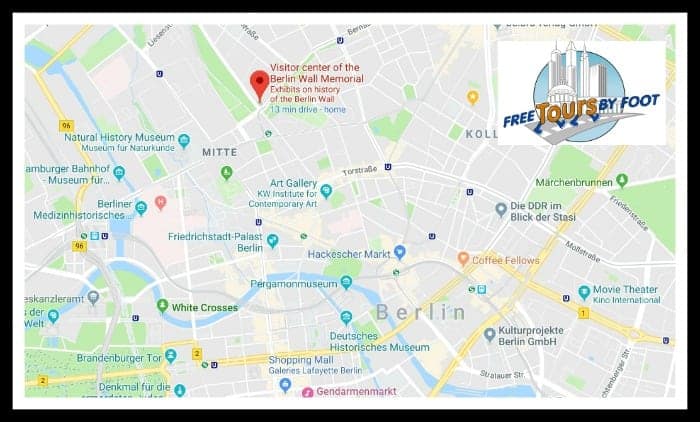
Nordbahnhof is an ideal station to start at due to its historical significance; it had exits in both West and East Berlin and thus became one of Berlin’s ghost stations, about which it now contains an interesting exhibition.
It is served by the S-Bahn (S1, S2, S25 & S26), trams (M10, M8, 12) and buses (247, N40).
If traveling by S-Bahn, just follow the signs for the Berlin Wall Memorial ( Gedenkstätte Berliner Mauer) , though we recommend spending some time at the exhibit on the ghost stations .
If you want further explanations for tackling Berlin’s public transportation system, check out our post about Navigating Berlin’s public transportation system .
WHAT YOU WILL SEE AND EXPERIENCE
In this section, we summarize what you will see and experience if you complete a walk of the memorial.
The outdoor memorial is split up into 4 main sections (A, B, C, D).
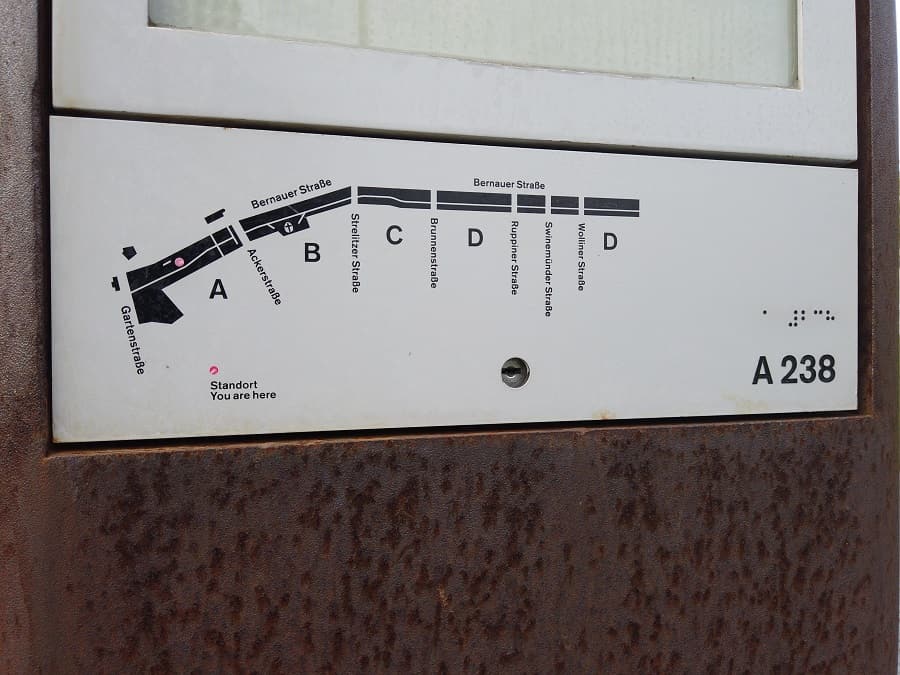
Each section has its own particular focus, but the content certainly overlaps from one section to another.
Area A - The Wall and Death Strip
- Area B - Destruction of the City
Area C - Building the Wall
Area D - Everyday Life at the Wall
If you don't have enough time to give this memorial your full attention, then Area A is where you should come.
Titled "The Wall and Death Strip", the overall focus of this section covers how the wall operated, how it changed the physical landscape, as well as its brutality.
This area has 4 subject stations , small areas where you have audio, visual, and text displays with stories, interviews, and eyewitness accounts.

The first station is called " The Wall and Border Strip ". This station covers why and how the Wall was built and reinforced.
It's in this area that you can start to envision the scale and scope of the border defense. Present in this area is both the outer and inner walls. You are walking on the death strip.
Station 2 is called " Blocking off Bergstrasse ". It's in this area that you will see the excavated remains of the part of Bergstrasse that was sacrificed to the Wall.
The Wall would ultimately create 300 dead-ends streets, cutting off communities and families from one another.

The 3rd station is titled " The Wall at Sophia Parish Cemetery ". Bergstrasse ran alongside the Sophia Parish Cemetery.
Today, the cemetery ends on the other side of the inner wall, but it used to reach Bernauer Strasse.
Many graves and tombs were uprooted and relocated deeper into the cemetery. Here is an audio clip with images.
The last station in Area A, " Window of Remembrance ", is arguably the most powerful.
There are no audio, visual, or text clips here. The wall contains photos of 130 individuals who had died at the Wall.
Most were killed attempting to escape East Berlin, but some were accidents, such as an 8-year-old boy from West Berlin who fell into the Spree and drowned.
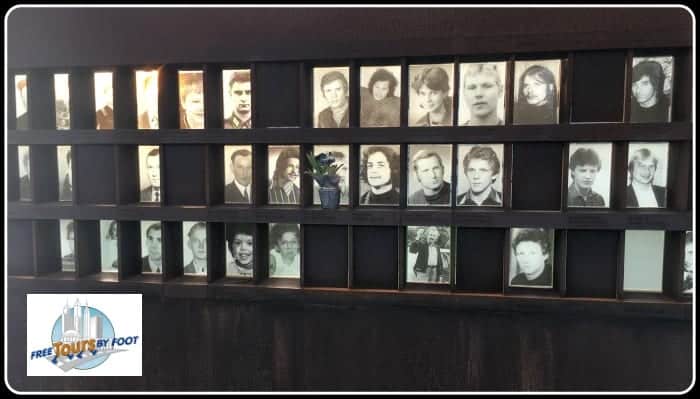
Each picture is accompanied by a name, a date of birth, and a date of death. Currently, there are 130 people documented here.
Additionally, there were 8 East German border guards who also died at the Wall and their names are inscribed on a column.
You may notice that some of the squares are empty. This was done on purpose to allow space for those who may be determined to have been victims of research proving that this was the case.
Although it's random, you may notice candles or flowers in front of the photographs. These are usually left here by family members or friends and are a stark reminder of how recent their deaths really were.
Area A has two additional and important components, the Documentation Center, with its lookout tower, and the Monument , a relatively well-preserved section of the intact border wall system, containing both an inner and outer wall, the death strip, and a watchtower.

You can get a great view of the Monument from the lookout tower across the street. There is an elevator, but most people should be able to handle the stairs.
In addition to the view of the Monument, the lookout tower also affords you great views of the entire memorial and part of the cityscape, including the TV Tower and the Berliner Dom.
Just a quick note, there are restrooms and a small cafe, and a souvenir stand at the Documentation Center.
Documentation Center
You can choose to visit the Documentation Center now or come back once you are done walking the memorial till its end.
Unlike the outdoor exhibits, it is only open from 10:00 am until 18:00 (6 pm) every day but Mondays.
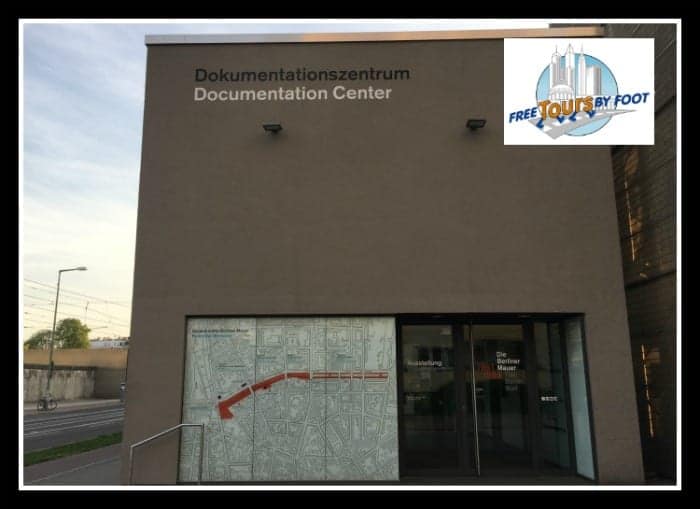
The center is dedicated to telling the story of the Wall, why it was built, maintained, and eventually destroyed, using multimedia displays, maps, documents, interviews, etc.
It's even more in-depth than the outdoor memorial itself. You could easily spend an hour here browsing the exhibits.
And check out our post on the best 60 museums in Berlin , many of which are free like the Documentation Center.
Area B - Destruction of the City
Area B moves the focus of the memorial to the people who lived here on Bernauer Strasse and the surrounding area, particularly those in East Berlin.
This section of the Memorial has 4 subject stations.
The first station is " Blocking Off of Ackerstrasse ".
Unlike the previous station dealing with the closing off of Bergstrasse, this station focuses more on the people who lived in the buildings that were taken down when the Wall was expanded.
Station 2, titled " The Reconciliation Church " covers the fate of one Protestant congregation, most of whose members lived in West Berlin.
Unfortunately, the gothic church was located on East Berlin land and would only be used for two more services after Aug 13, 1961, and ultimately was destroyed in the 1980s .
One other significant feature is the Chapel of Reconciliation , which is built upon the foundations of the Church of Reconciliation, which was trapped within the Berlin Wall upon erection, and ultimately destroyed.
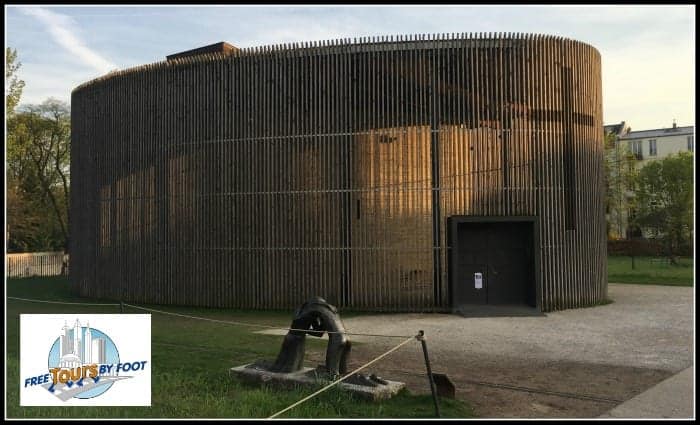
The chapel’s inner room is a quiet, respectful space that occasionally hosts services, whilst the outer space features exhibits discussing the church.
Station 3 is titled " The Suffering of the People " and its focus is on the apartment buildings that bordered Bernauerstrasse and West Berlin.
These buildings were used for early escapes, including the deaths of a few locals who jumped from the buildings' upper floors and roofs.
It was for this reason that the East German government evacuated their residents and eventually destroyed the buildings.
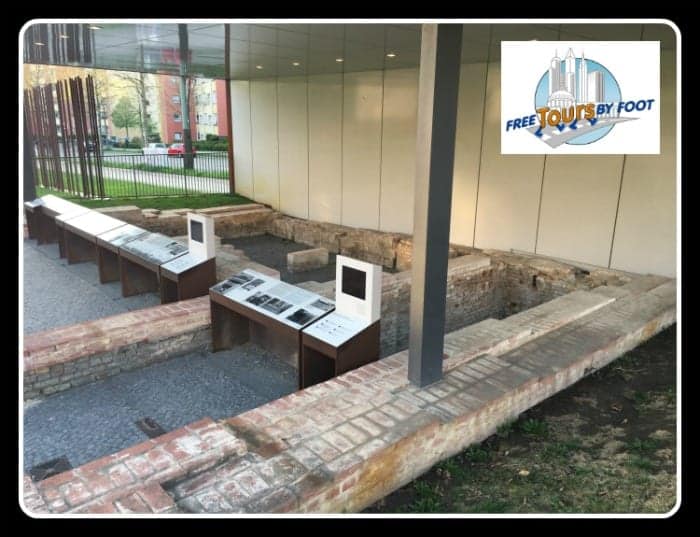
The main exhibit here is the excavated foundation of one of these buildings, Bernauerstrasse 10a .
Here you will find audio and visual aids that tell you the story of the residents of these border buildings, many of whom were cut off from family and close friends in West Berlin.
The final station on Area B is called "Escaping to the West", which chronicles some of the daring escape attempts that took place here on Bernauerstrasse.
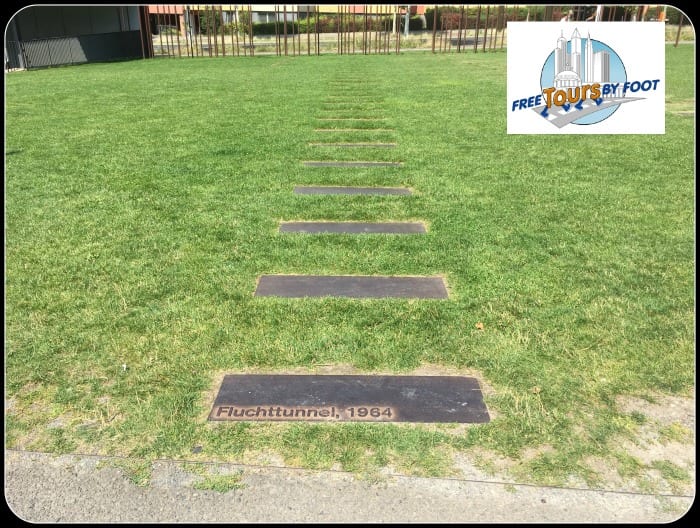
Most of these escape attempts were via tunnels . In all, there were 10 tunnels under the Wall here at Bernauerstrasse, though only 3 successfully freed any East Berliners.
There are many tunnel markers in this area, such as the one in the photo above.
This area of the memorial covers the evolution of the border wall's construction, reinforcement as well as how the East German government enforced security in the area just behind the border.
The subject station, " Rebuilding the Border Fortification ", covers the evolution of the Wall.
It covers how its builders analyzed escape attempts to make improvements to the border system, starting from a simple concrete wall with barbed wire to the more elaborate and impenetrable system that you have now probably come to understand better.
It's here more than anywhere that you can get a good sense of this evolution through photos, audio, and text.
The second subject station here is " Surveillance of the Border Area ".
Here you will learn how the GDR government spied on its citizens who lived just beyond the wall and how local residents were recruited to aid the government, mostly as informants, all in order to reduce the chances of successful escapes.
The last subject station here is called "the Wall at Brunnenstrasse", where you will find a large mural of one of the most iconic images of the wall.
It's the escape of Conrad Schumann, an East German border guard, who just a few days after the start of the Wall's construction made a daring leap over the border.
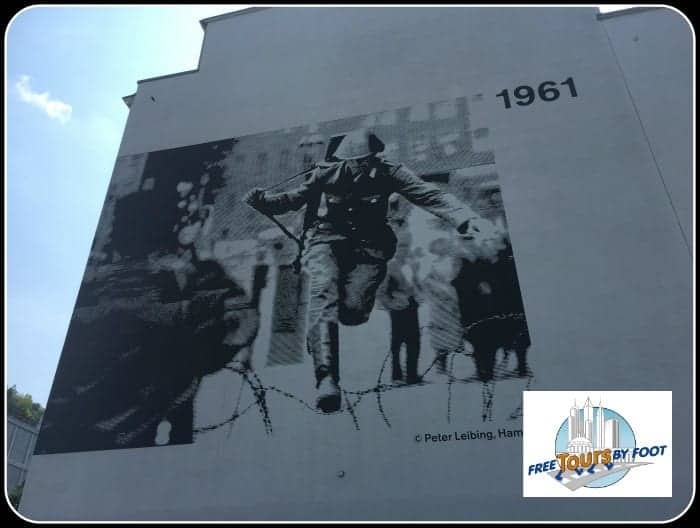
His jump was actually one street further on.
As with the other areas of the memorial, you will find several subject stations.
The first is titled " The Wall and West Berlin " and covers how the Wall affected those who lived in West Berlin, particularly those in the Wedding District, which lies on the West Berlin side of the Wall.
Station 2, " Escape Agents and Tunnel Builders " details several of the escape tunnels that were built from West Berlin under the Wall into East Berlin and those who dug and financed them.
Station 3, " The Border Soldiers ", covers the daily life of border guards and what their surveillance responsibilities were in keeping East Berlin citizens from fleeing the East.
The next station, " The Wall in Politics ", explains how West Berlin and West Germany portrayed the city and East Berlin in domestic and local politics and foreign diplomacy.
Choose a Destination... I want them all PLUS general travel tips. Amsterdam Berlin Boston Charleston Chicago Dubai Lisbon London Los Angeles Miami Nashville New York City New Orleans Paris Philadelphia Prague Rome San Francisco Washington DC
About The Author
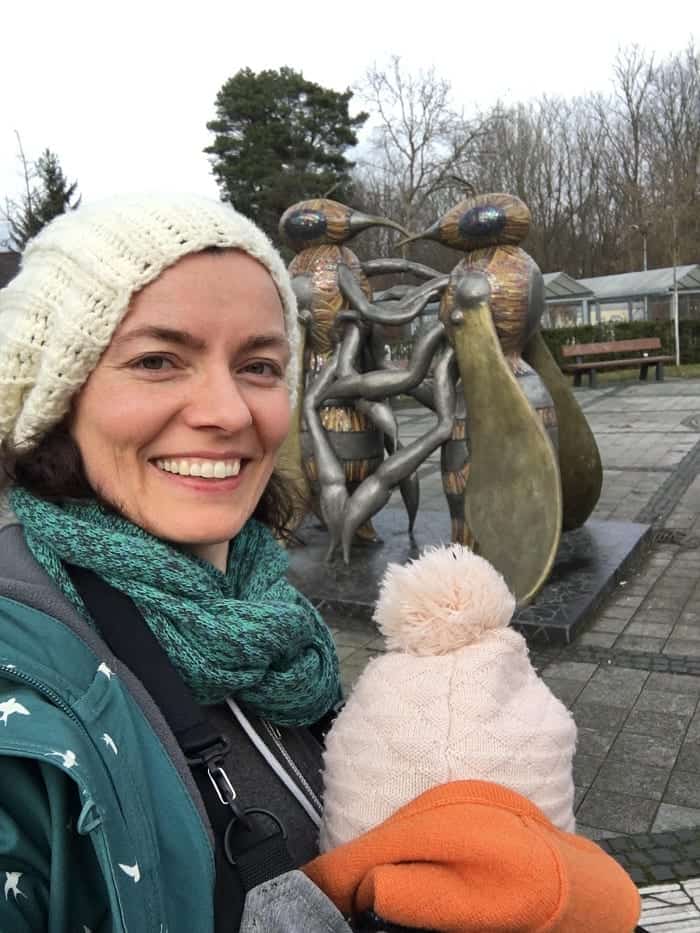
Anne Wittig
North america, united kingdom & ireland, middle east & india, asia & oceania.
ABOUT CONTACT WORK WITH ME
– A Malaysian Solo Traveler –
A Guide to the Berlin Wall for First Time Visitors
You might have heard of the Berlin Wall, or you might not. As for me, European history was not part of my school syllabus, and unfortunately, I was not one to seek history lessons outside of my school textbooks. So, while I might have come across the name in passing, I didn’t have the faintest idea what it was.
But the Berlin Wall is one of the main attractions in Berlin and in the whole of Germany. Your trip to Germany would not be complete without paying it a visit.
If you’re not sure what the Berlin Wall is and why you must include it on your itinerary, don’t worry — this article will tell you all you need to know.
Table of Contents
What is the Berlin Wall?
The Berlin Wall was a guarded concrete barrier that was erected to divide Berlin from 1961 to 1989.
After the end of World War II and the defeat of Hitler, Germany was occupied by the Allied powers. They divided the capital city Berlin into four sections, each to be governed by one of the main Allied countries that were responsible for liberating Germany, namely France, the UK, USA, and the Soviet Union.
However, the political differences between the Soviet Union and the other Allied powers soon became apparent. The Soviets imposed harsh restrictions on the people in their section (East Germany), causing millions of them to flee to the West.
At least 3.5 million people (20% of the total population), many of whom were young, educated professionals left East Germany. Following this, the Soviet Union resorted to drastic measures.
So, one morning, the East Germans woke up to find that they were closed in by barbed wires and fences, and could no longer cross freely to the other side. The first concrete blocks were laid on 17th August 1961 to form the Berlin Wall.
To make it harder for people to cross, the Soviet built two walls running parallel to each other. These were separated by a no man’s land. What that means is that even if someone made it over one wall, they would often be shot down in the no man’s land before they reached the second wall.
During the three decades of the wall’s existence, over 100,000 people attempted to cross it by climbing over, jumping out of windows adjacent to the wall, flying in hot air balloons, crawling through sewers, and driving at high speeds through unfortified parts of the wall.
Of this number, 5,000 (including some 600 border guards) were successful, while at least 171 people were killed.
The Fall of the Berlin Wall
As the Cold War between the Soviet Union and the US began to thaw in 1989, the borders between East Germany and West Germany became more relaxed. On 9th November 1989, the East German government announced a change in their regulations. Starting at midnight the same day, citizens would be allowed to cross the country’s borders.
Following this announcement, throngs of people from East and West Berlin congregated at the wall, drinking and dancing in celebratory mood, all the while chanting, “Tor auf!” (“Open the gate!”). At midnight, they flooded through the checkpoints and long-separated families were reunited.
More than 2 million East Berliners visited West Berlin that weekend, in what was later known as “the greatest street party in the history of the world.”
People used hammers and picks to chip away at the wall, while cranes and bulldozers demolished section after section. On 3rd October 1990, almost one year after the fall of the Berlin Wall, the reunification of East and West Germany was made official.
Berlin Wall Today
Today, you can still see evidence of the Berlin Wall, marked by metal poles, lines on the floor, replicas, and even parts of the original wall.
The East-Side Gallery
Located close to the River Spree, the East-Side Gallery is a real section of the East’s inner wall and is undoubtedly the most famous remains of the Berlin Wall.
In 1990, artists from all over the world came to paint murals on the 1,300-metre (1 mile) long section. Most of the artworks carry messages of change, hope, and history, as a reminder of what had been and should never be again.
The gallery is now a heritage-protected landmark, and any act of vandalism done on the paintings is considered an offence. However, this has not stopped some people from leaving their marks. There is an ongoing project to restore and preserve the paintings.
The Brandenburg Gate
Constructed between 1788 and 1791, the Brandenburg Gate was not actually part of the Berlin Wall, but became one of the barriers separating East Germany from the West. Now, this 26-metre tall structure remains standing as a symbol of the country’s tumultuous history, as well as the peace and unity it later achieved.
Checkpoint Charlie
Along the Berlin Wall, there were several checkpoints, named alphabetically, from A, B, C, and so on. Checkpoint Charlie (Checkpoint C), which was guarded by the US Army, is now a must-visit tourist attraction where you can take photographs and see the replica of the original sign saying, “You are now entering West Berlin”.
Checkpoint Charlie is linked to a museum that not only provides general information, but also reveals the means and attempts made by the people to escape East Germany.
Berlin Wall Memorial
On Bernauer Straße , a strip of the wall and a former watchtower were rebuilt especially for a memorial. This open-air museum offers historical audio and video materials about the Berlin Wall. There is also a viewing tower at the visitor center where you can see the wall from a different perspective.
How to Tour the Berlin Wall
- Self-Guided Tour – Touring all these remnants of the Berlin Wall is easily doable on your own. You can either walk from one place to another or use public transports. To get a better understanding of the things that you see, you can also rent a multimedia guide at any one of the collection points (Checkpoint Charlie, Brandenburg Gate, and the Berlin Wall Memorial). Once you’re done, simply return it at any of the collection points.
- Guided Walking Tour – To get the most out of your visit, it’s best to go on a guided tour with a knowledgeable local guide. You might also get to hear some personal anecdotes from them. There are many walking tours to choose from depending on your budget and preference. This one , for example, combines the wall tour with Berlin Communist Tour.
- Underground Tour – Between 1961 – 1982, there had been more than 70 self-dug tunnels in attempts to escape East Germany, of which only 19 were successful. Learn all about them on this Berlin Underground Tour .
- Bike Tour – Another alternative is to tour the walls on two wheels. This bike tour takes you to all the important sites of the Berlin Wall and the Cold War. You can book it on Klook . If you have never heard of Klook before, click here to find out more about this travel app and whether it is legit.
Final Thoughts on the Berlin Wall
For a city that is famed for its vibrant art scene and thriving nightlife, Berlin sure has a dark past. It’s hard to imagine that a mere 30 years ago, the country was divided into two, and hundreds of lives were lost trying to cross from one side to the other.
Visiting the Berlin Wall can help you understand what such divisions can do to the people affected by them. It’s an inspiring thing to see how Berlin and Germany bounced back from this tragedy and became a stronger nation because of it.
Instead of being afraid to face their horrible past, they gallantly use it as a reminder to themselves and others of what should never happen again in the history of the world.
Have you been to any place with a dark past? How did it affect you? Share your experience in the comments below.
Sharing is caring!
- Click to share on Facebook (Opens in new window)
- Click to share on Twitter (Opens in new window)
- Click to share on Pinterest (Opens in new window)
You May Also Like:
56 comments.
Wowww banyaknya kenangan Ummi di sana, best betul Sis nengok.. kira kalau b]ke Berlin Wall ni boleh sekali masuk museum laa ya..
Terima kasih, sis. Bike tour ni tak termasuk tiket ke muzium, tapi dia akan bawa kita tengok tinggalan2 tembok Berlin ni. Sambil tu, guide akan bagi penerangan tentang sejarah tempat tersebut. Banyak juga yang kita boleh belajar.
Cantik betullah pemandangan sekitar bandar berlin ni, berangan nak pergi satu hari nanti, suka tengok senibina bangunan lama tu penuh sejarah
Ya, Zaidalifah. Bandar Berlin ni banyak sejarah pahit manis. Walaupun senibinanya mungkin tak secantik bandar2 lama lain di Eropah. Semoga angan2 anda itu akan jadi kenyataan suatu hari nanti.
Wow the history of Berlin Wall kinda dark. Never knew such story before. It must be nice to stand in front of one of a great history there
Yes, it was an extraordinary feeling, Farhana. To see something that is so historically significant. Makes you feel poignant about the past but also hopeful for the future.
Look at that street art now. True – a mere 30 years ago the wall hold people from meeting but now it becomes the meeting place for everyone.
Such is history. People learn from it.
Well said, Rawlins. What an irony, isn’t it, that the wall they built to divide actually ends up uniting people now, and making them stronger as a nation. It’s a good thing that they left part of the wall standing, lest we forget.
I byk kali juga tgk movie barat yg memaparkan berlin wall. Tapi bc entri you br tahu apa ug boleh kita buat disana
Terima kasih, Ayu. Semoga info ini bermanfaat sekiranya Ayu melancong ke Berlin nanti.
Wowww.. Panjang betul wall di.. Siap ada macam2 lukisan. Vandalisme kat mana2 ada. Haishh.. Setiap luisan ada cerita dia
Ya, Nadia. Setiap lukisan pada Berlin Wall ni ada cerita untuk menyedarkan dan mengingatkan kita pada sejarah lampau. Semoga tak berulang lagi.
Thanks Ummi share info yang oadat tentang Berlin Wall. Sesiapa yang nak pergi ke sana mesti baca article ni dulu
You’re welcome, Nur. Happy to share the knowledge. Rasanya sejarah Jerman ni tak diajar dalam sukatan pelajaran sekolah kat sini kan, jadi mungkin ramai yang tak tahu.
thanks for this sharing, now I am adding this Berlin wall in my places to visit in Berlin planning file 😀 Berlin is 1 of my to travel destination. cheers, siennylovesdrawing
Oh that’s good to know, Sienny. Berlin Wall is a must-visit if you go to Berlin.
nice sharing Ummi its my first time know about the dark past of Berlin Wall. lucky you got chance to travel there..
Thank you, Huda. Glad to share the information.
Pernah dgr tapi tak tahu apa sejarah dibelakangnya. Barulah tahu sekarang. Bila dah ke merata tempat barulah lebih ngerti sejarahnya kan.
Ya, kak Bell. Walaupun saya tak berapa minat sejarah, tapi travel memaksa saya untuk belajar. 🙂
ah, another destination that i must visit after the lockdown. love reading about its historical significance that you shared in this article!
Thank you, Grace. Glad you enjoyed the article and I hope it will be useful for you.
Wow.. tak sangka Berlin ada sejarah yang agak pilu suatu ketika dulu..
Ya, Moha. Banyak sebenarnya sejarah pahit yang melibatkan negara Jerman ni, terutama pada zaman Perang Dunia ke-2 sehinggalah jatuhnya tembok Berlin. Cuma dalam sukatan mata pelajaran sekolah kita tak banyak menekankan tentang sejarah Eropah, jadi kita kurang pendedahan.
Another beautiful blog of yours! Love reading them! Hopefully one day you will send me postcards! Too beautiful.
Thanks, Jen! I don’t send postcards anymore, unfortunately.
This is interesting and informative read. Thanks for sharing .I am going to visit Berlin Wall when in Berlin .
You definitely should, Madhu. I hope this article will be useful for your future visit 🙂
This is a great guide to the Berlin Wall! We were fortunate enough to visit in November 2018. I knew of the wall but I definitely learned so much more of its significance from visiting. It really surprised me how ‘recent’ the history of the wall actually is! Being born in the 90s, it is almost during my lifetime! The Berlin Wall Memorial was a fascinating place to learn about the history and the view was spectacular! I’m gutted we didn’t make it to the East Side Gallery but I’ve got an excuse to go back! Thanks for the great guide!
You’re welcome, Hannah! I think that’s an excellent excuse to go back. I can totally relate to what you said; I was born in 1989, 2 months after the wall fell down. Can’t believe it has only been that long.
I love the Berlin Wall! I went there 3 years ago and I still use some if the pictures as my wallpaper😊
I can totally understand why, Jade. The murals are so beautiful, aren’t they? And each one of them carries an important message.
Berlin is such a fab city, so full of history and so vibrant too. We actually have a piece of wall at my parents house. My dad used to work in East Germany a lot back in the day.
That’s so amazing, Deborah! What a meaningful souvenir to keep. Your dad must have a lot of stories about his time working in East Germany.
Very informative post! I’ve visited Berlin a few times over the years and never tire of seeing the wall. My dad has a piece of it from the day it fell.
Oh wow, that’s amazing! It must carry a significant meaning to your dad and maybe the whole family.
This is such an incredible part of Germany’s history. Thank you for sharing all the informative tips especially on the different ways to tour it – it’s great to have many options!
You’re welcome, Jennifer! Happy to share the tips 🙂
This is an awesome site in Berlin, thanks a lot for sharing its history!
You’re welcome, Val! The Berlin Wall is indeed an important site in Berlin and all of Germany.
Very interesting post! Thanks for sharing. 🙂 I was in Berlin just for one day and I loved it.
You’re welcome, Isabella. Glad that you enjoyed Berlin!
Fascinating! I remember watching the wall come down on TV in 1989. Would love to visit here someday.
Wow, that must have been amazing to see it on TV when it happened, and would be even more so if you get to see it in person now. I was only 2 months old when the Berlin Wall fell.
I bet that’s so interesting getting to see it in person and learn more about it. This is high on my list of things to visit in Berlin.
Yes, Krista. The Berlin Wall is a must-visit if you go to Germany. It’s very interesting to see it in person.
Berlin is an incredible city and it shaped 20th century Europe for better and worse. Thanks for sharing this and its history.
You’re welcome, Arrivals Hall. I’m glad that I got to learn about Berlin through my travels. Traveling has taught me so many things that I didn’t learn in school.
To see something historical is always an amazing feeling. I have read about the Berlin Wall history.
Then you must visit this place if you ever go to Berlin, Suvarna. It’s a sobering experience.
What a piece of history to see in person! Happy to hear they are preserving the murals and sharing the story.
Yes, they are, Laurel! It’s an eye-opening experience to visit the Berlin Wall.
I’ve always been fascinated by Soviet-era history in this part of the world (it was the focus of my studies in university) but I’ve somehow never been to the Berlin Wall in person! This definitely made me want to visit as soon as COVID is over. Seems like such an interesting destination.
You definitely should, Carrie! It must be interesting to see in real life what you have been studying for so long. 😃
Wow!! I’ve always planned on visiting the Berlin Wall when I go to Germany. I also took AP European history and learned about this, but naturally over time slowly forgot. This post was a refreshing reminder of its history!
Ah, I barely remember what I learned in school, Kylie. Haha. I hope you’ll get to see the Berlin Wall when you visit Germany. It surely will be meaningful when you already have a good understanding of its history.
Leave a Reply Cancel reply
Your email address will not be published. Required fields are marked *
Save my name, email, and website in this browser for the next time I comment.
Notify me of follow-up comments by email.
Notify me of new posts by email.
- Top Destinations
- Mexico City, Mexico
- Tokyo, Japan
- Paris, France
- Rome, Italy
- London, United Kingdom
- All Destinations
- Upcoming Experiences
- Walking Tours
- Small-Group Tours
- Tours for Kids
- Museum Tours
- Food, Wine and Market Tours
- Newly Added Tours
- Audio Guides
- Pre-Trip Lectures
- Admin Dashboard
- My Favorites
- Cookies Preferences
- Client Orders
- Monthly Commissions
- My Advisor Profile
- Advisor Toolkit
- Guide Dashboard
Credit Balance
Transactions are based on current exchange rates and performed in USD. There maybe slight variations in the price estimates.
Beyond the Brandenburg: An Expert’s Guide to Berlin's Unseen History

An aerial view of Tiergarten in Berlin
By: John Owen
Berlin is a city famous for its history. Almost to a fault.
For visitors to the German capital, the city’s most famous sights–the Brandenburg Gate, the Reichstag and the Holocaust Memorial–are “must sees.” But all three of these most famous sights sit within around 300 metres of each other. What makes Berlin such a fascinating place to visit is the ubiquity of its history even in the most unexpected places.
Today, I’ll show you around–virtually, of course–some of the sites that a lot of visitors miss, including an extremely important part of history that lies just beyond my very own doorstep. Let’s explore, shall we?
The Tiergarten's Hidden History
Within the centre, and around famous sights, the layers of history reveal themselves if you look hard enough. Take Berlin’s biggest park, the Tiergarten, for example. It sits just to the west of the Brandenburg Gate and is bordered by lots of the city’s other most famous landmarks.
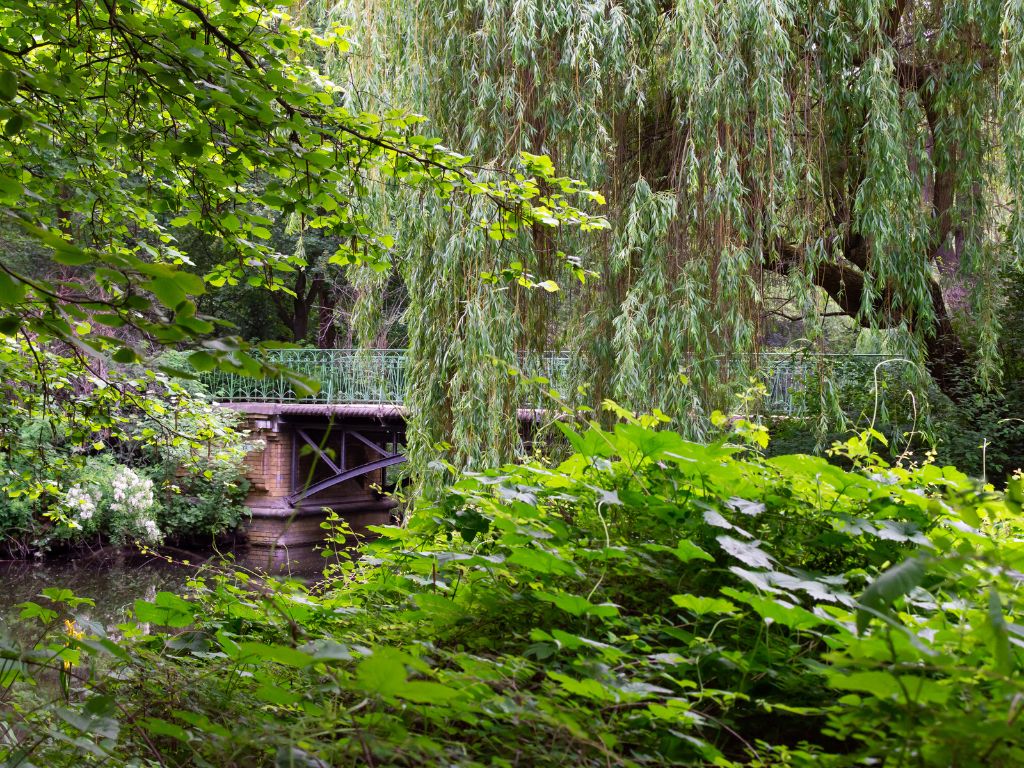
The park’s usage has changed over time from being the Prussian royal family’s hunting grounds to becoming a public park just outside the city walls in the 18th century. It was very late in history–1920 to be exact–that the Brandenburg Gate ceased to mark the formal limit of Berlin. Within 30 years, it would return to sitting on the edge of a city, this time in East Berlin with the Tiergarten acting like a kind of buffer zone on the edge of West Berlin.
If you walk around the Tiergarten today, you are likely to be impressed by its bucolic beauty. Heavily forested, it is a habitat for a vast number of rabbits and the goshawks that prey on them, while in spring every year its small copses emanate the distinctive call of nightingales. It is in many ways a surprisingly natural place amidst the artificiality of a modern city. However, should you look closer, you will see that there are essentially no old trees across the park. You will be able to wrap your arms around the vast majority. For a park that has existed for close to 500 years in a country with a deep romantic attachment to forests, this is somewhat surprising.
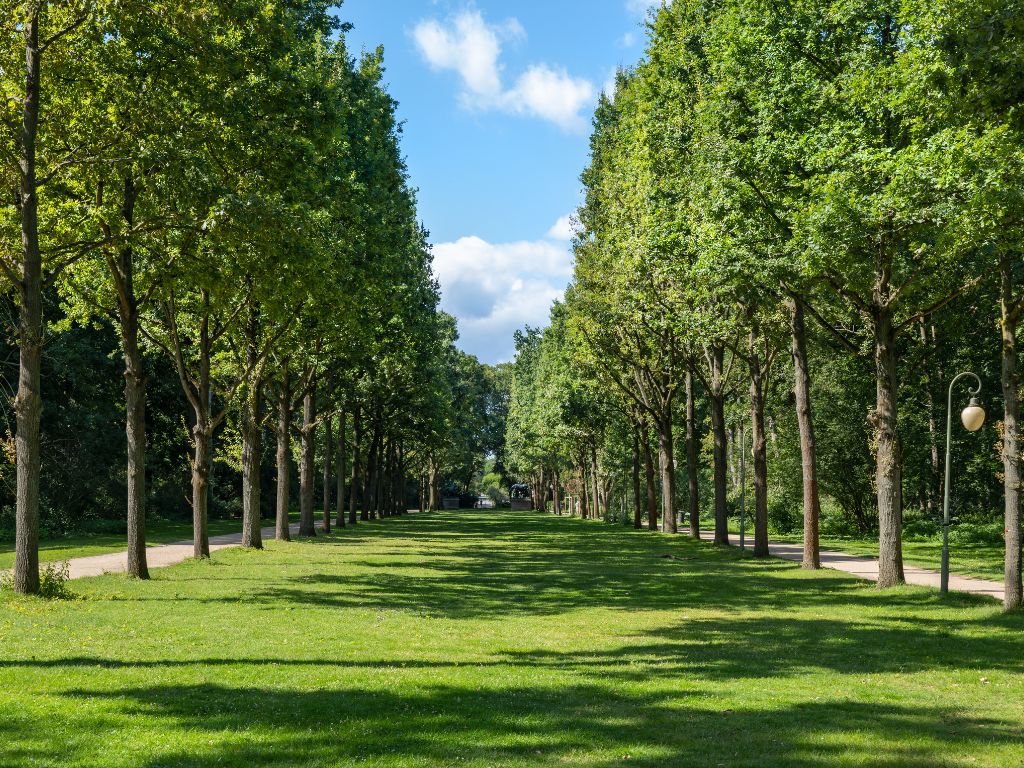
But as it so often happens in Berlin, there is an answer in the city’s traumatic 20th-century history. Allied bombing and the felling of trees for firewood during the war and its immediate aftermath led to the deforestation of the park. Indeed the park was so devoid of trees for a while that the British (in whose occupation zone it fell) turned large tracts of it into farms for Berliners to grow food. As a result, it was only really “reforested” in the late 1940s with different sections taken on by different West German cities. Without looking at the trees, it would be easy to miss these additional layers of Berlin’s history.
History on the Wannsee
Almost every corner of Berlin has an interesting history. Sometimes this can be jarring. Out on Berlin’s western edge, the huge Wannsee lake stretches out with sailors and swimmers enjoying its waters in the summer. Tucked away in the forest surrounding it is the shooting club which housed the 1936 Olympics shooting events.
But the name of this lake is generally known for a much darker event that happened here. On 20 January 1942, a group of senior Nazi functionaries and civil servants met in a villa on the lake where, over the course of just 90 minutes, they discussed the logistics for the genocide of Europe’s Jewish population. This was cryptically referred to as the “Final Solution to the Jewish Question.” This lakeside villa is now a memorial museum, which you can visit.
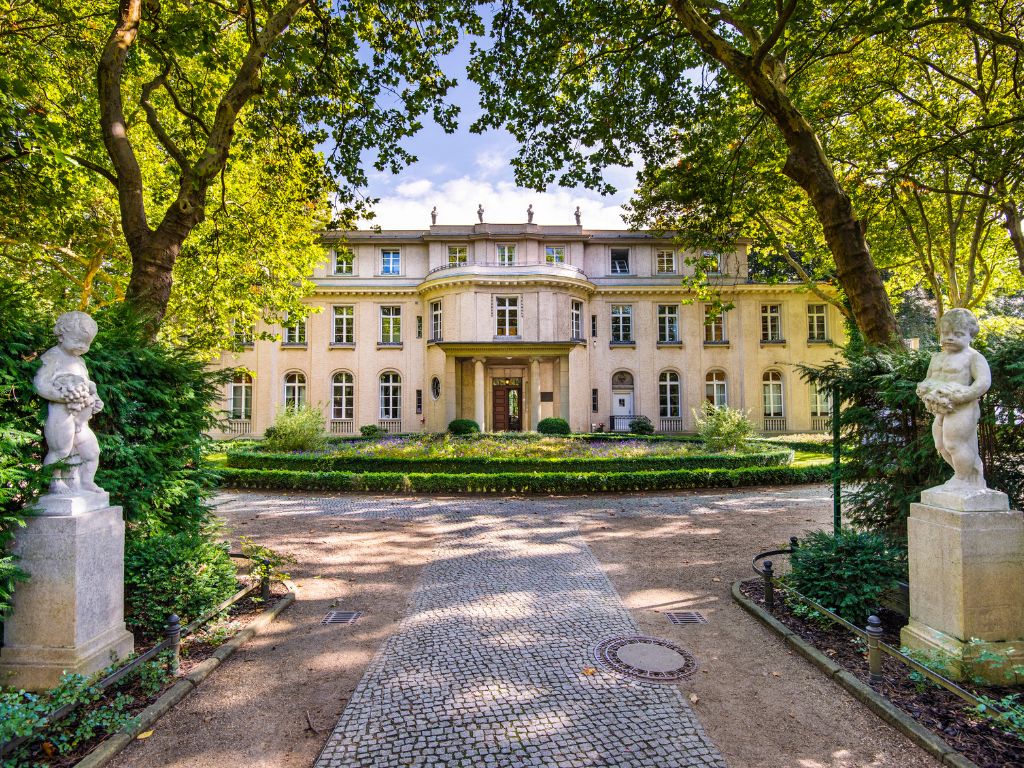
Just a few hundred metres down from the villa, there is a grim reminder of the consequences of this genocide. In the very same row of villas on the lakeshore sits a house that once belonged to the great German Jewish painter Max Liebermann. He was so successful by the early 1930s that he lived in a building right next to the Brandenburg Gate. Liebermann died of natural causes in 1933, but his wife Marthe committed suicide in 1943 once the threat of deportation to Theresienstadt concentration camp became concrete. A couple of plots further down, two oars stand outside a rowing club in memorial to the Jewish members murdered during the Shoah.
Divisions on the Glienicker
There are not many cities which have these kinds of jarring juxtapositions as part of their normal life, and it is one of the reasons Berlin is so compelling. Just a short distance from Wannsee is another, less well-known, Berlin lake–the Glienicker See. It and its near neighbour, the Sacrower See, are two of the best lakes to swim in in the whole city. Swimming in lakes is very much part of life in Berlin, and (although the vast majority of tourists don’t do it) should be seen as an essential part of any trip to the city.
If they live near enough today, Berliners will make weekly - even daily - trips out to lakes in the summer. However, for 27 years, families on the western side of the Glienicker See (which confusingly was part of East Germany while the eastern side belonged to West Berlin) could not access its water. The Berlin Wall ran along its shore, and the second “internal” wall coursed through their gardens.They would hear the shouts of West Berliners enjoying the water but could not partake themselves.

For some years, I worked as a historian and guide at a house on the Glienicker See. Built by a German-Jewish family in 1927, it has recently been restored by their descendants (now largely Brits). Over my time working there, I was lucky enough to conduct interviews with people who had experienced the lake from both sides.
One West Berliner told me he had learned to windsurf on the lake using the border buoys (the border actually ran through the middle of the lake) as a good way to train his skills in straight-line surfing. If he made a mistake, he would occasionally hear a warning shot from the border guards.

Another insisted (although I barely believe him) that his yearning to enjoy the water became so great that he once succeeded in scaling the Wall, swimming across to the western side, having a beer and returning. For people like this the Wall was not just the obviously geopolitical boundary between two political systems - it was a part of their daily life; and one that was ripe to be mocked or played with.
Explore the History Hiding in Wedding
On another level, little places in Berlin can often tell big stories. I live in an area of Berlin called Wedding, often referred to as “red Wedding” for its leftist politics. You are unlikely to come here as a tourist on your first visit, but were you to do so, you could tell a good part of the story of twentieth socialist politics in Berlin within about a 20-minute walk of my front door.
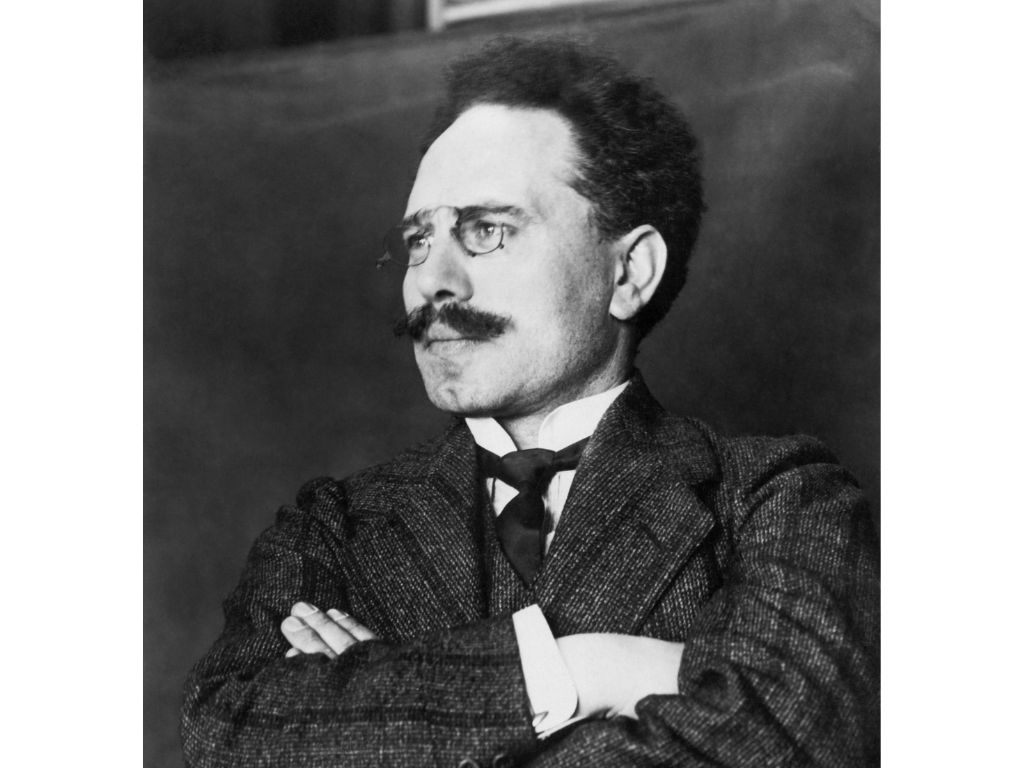
Just a few hundred metres away sits a building previously donated to the great German socialist thinker Karl Liebknecht. (Members of Parliament were previously required to own land to hold their government position.) Liebknecht was an idealist and revolutionary who was murdered in the aftermath of World War One. He never lived to see a socialist state be attempted in Berlin, but someone who grew up very near his former house did.
The man who would go on to be head of East Germany’s repressive secret police, Erich Mielke, grew up just a short walk from Liebknecht’s house. His Berlin was a violent one where political ideas clashed in street fights around the streets of northern Berlin. A few years later, when socialism had won at least part of the fight for the city, the Wall he and his colleagues planned cut him off from the very streets where he had come of age, both literally and politically. .
The Start of the Fall of the Berlin Wall
Not only did two of the most important figures in its history live in this area, but on 9 November 1989 at a border crossing between Wedding and an area in the east called Prenzlauer Berg, the same Wall opened for the first time - just a few minutes walk from where Mielke grew up. East Germans began swarming across into the West in a party mood, greeting an end to the reign of terror his secret police had held over their lives.
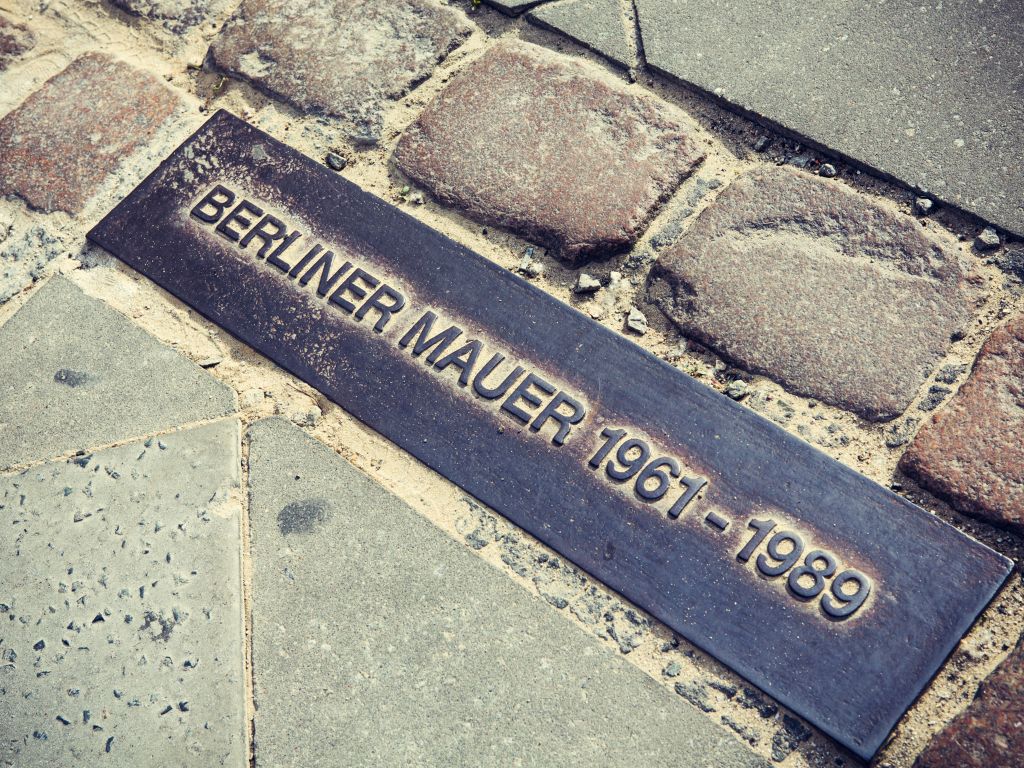
Today, little marks the spot where one of the most momentous events in the twentieth century happened. If you did not know, you would probably pass by without a glance. There are a few placards, but most of what was once the border crossing point is taken up by a Lidl supermarket–an example of where history in Berlin sometimes has to give way to the practicalities of modern life.
Surprising Ties to Japan
If you were to walk down the steps by this supermarket, you’d find yourself on a path lined with cherry trees. Again, trees in Berlin can act as a relatively tacit key to the history. This grove of cherry trees comes alive in the spring with beautiful pink blossoms.
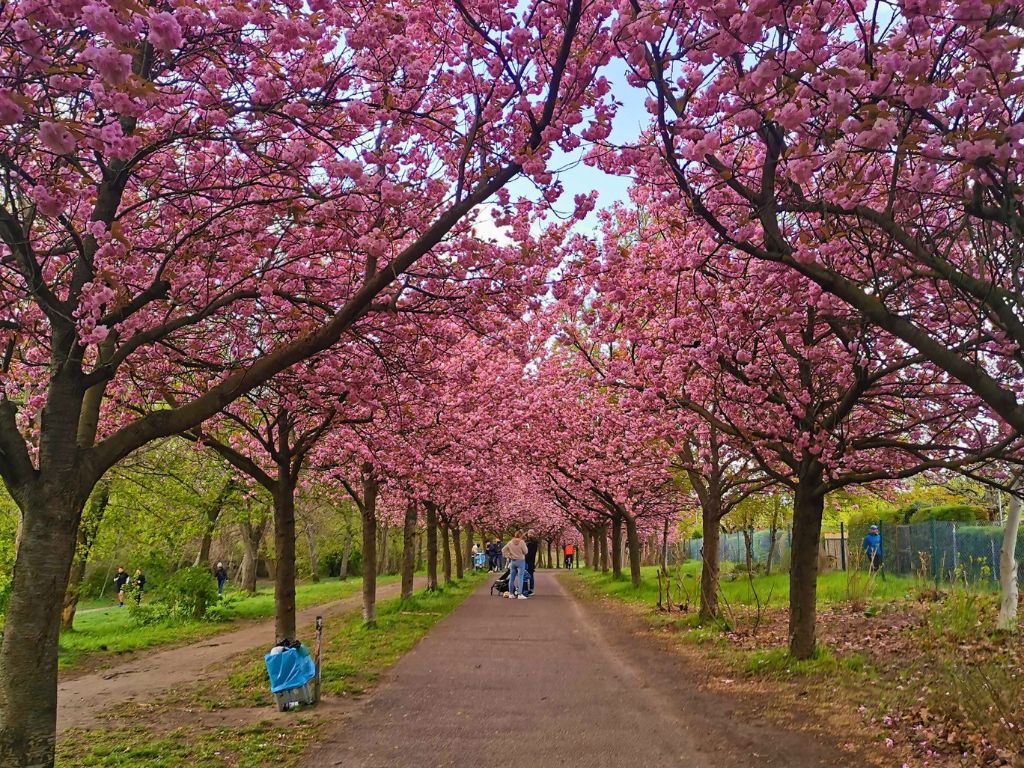
It is about as close to getting to the Japanese sakura season that you will get in Berlin. And the connection to Japan is real–these trees were donated by viewers of a Japanese TV programme who wanted to give Berlin something to celebrate the fall of the Wall.
Discover Berlin’s Layered History
Berlin is a place dripping in history, much of it very recent and extremely traumatic. At the same time, it is simultaneously a great fun, liberal, cheap, and buzzy modern city. This stark contrast is something Berliners get used to, but it makes it a fascinating place to visit.

And if you stop to look around, almost every feature on the map has a story to tell. So I invite you to come and experience this complex and constantly confounding city. Enjoy its famous corners but make sure to explore and find some of the city’s hidden trauma and hidden treasures. Sometimes you have to turn on your radar to find the myriad of ways that history appears in even the most unlikely places.
About John: John studied History and German at the University of Oxford, eventually specializing in German-Jewish history and the history of the Third Reich. He started visiting Berlin as a teenager and eventually moved to the city permanently. He now resides in Wedding, a suburb of Berlin. The tangibility of history in Berlin and Germany, especially that of the twentieth century, never ceases to thrill him.
Read More Stories

Even More from Context
Subscribe to our Newsletter
Keep Exploring

Explore Tours
Join walking tours with top experts all over the globe.
Browse Our Cities
- Our Experts
- Working with Context
- View All Cities
- Sustainable Tourism
- Refer a Friend for $50
- Travel Updates
- Advisor Login
- Expert Portal
- Privacy Statement & Security
- Cancellation Policy

UEFA EURO 2024
All about the European Football Championship in Berlin
- Menu Berlin Welcome Card
- Menu Event calendar
- Menu Newsletter
- Contrast Contrast
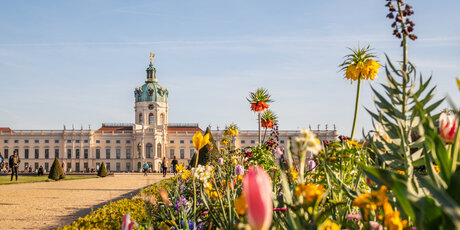
Berlin's Top 10 Attractions
Are you on a whistle-stop tour of the capital or just looking for the Berlin Top 10 ? Well look no further, because we've picked the top ten things to see and do in Berlin so you don't have to. The choice of the top 10 Berlin attractions was by no means easy - this city has so much to offer! But here are the top 10 attractions and places you do have to visit in Berlin.
Top pick 1: Reichstag & glass dome

When the decision was made to move the Federal Government to Berlin, it was time to reawaken the Reichstag building from its long years of slumber on the Mauerstreifen, the military zone between the two sides of the Wall. The building has since been completely modernised, and today's visitors to the Reichstag can look out from the building's glass dome to get a bird's eye view of the hustle and bustle in the city. There are also a number of government buildings in the vicinity of the Reichstag, for example the Bundeskanzleramt ( Federal Chancellery ) and the Brandenburg Gate .
Experience the government district and many other highlights from the water with a boat tour:
Tickets for boat tours
Top pick 2: Brandenburg Gate - Berlin's signature attraction
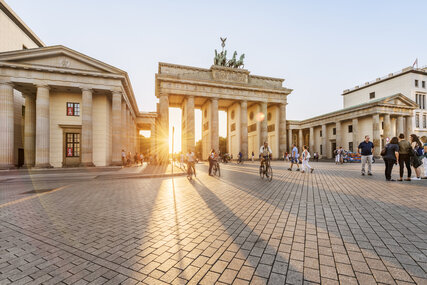
Without a doubt, the Brandenburg Gate is Berlin's signature attraction. Built in 1791, it was just one of many old city gates around the city of Berlin which, at that time, was still a manageable size. The decorative Pariser Platz was laid at the foot of the gate and is now home to many of the city's important buildings, for example, the Hotel Adlon with its wealth of history and the Akademie der Künste (Academy of the Arts).

Kraftwerk Berlin: Home of F4 FanZone
Live basketball vibes and celebrate the EuroLeague Final Four at the FanZone! Meet basketball players, take photos with the EuroLeague Trophy, get your official merchandise and enjoy games, tournaments, food and fun, all at the trendy spot in the German capital on May 23-26.
Mehr erfahren
Top pick 3: Berlin Television Tower (Fernsehturm) - Berlin's highest attraction
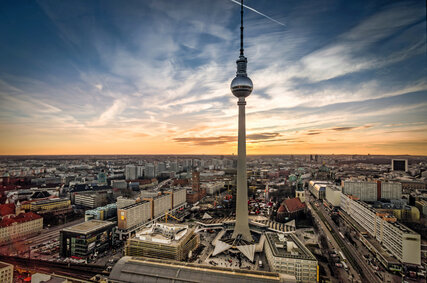
The Berlin Television Tower , which is known to locals as the Fernsehturm , and is instantly recognisable from the distance, stand outs of the skyline at 368m, making it the tallest building and by far highest tourist attraction in Berlin. Built in the 1960s, visitors to the tower can enjoy a unique 360° panorama of the city. Tip: Visit the TV Tower with the Berlin Welcome Card and save up to 25 per cent. The Berlin WelcomeCard enables free travelling with all public transport services to the Berlin visitors. With over 200 partners and outstanding discounts the Berlin WelcomeCard offers you a complete „carefree“ package.
Tickets for TV-Tower & Restaurant Sphere
Berlin Welcome Card
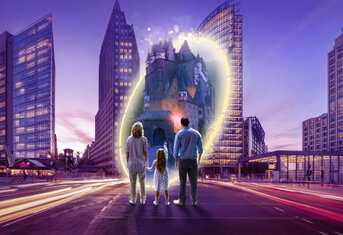
Deutschlandmuseum
The immersive history experience! Travel through 2000 years of German history: sneak round a castle, operate Gutenberg’s printing press, dance in the roaring 20s and see the ruins of Berlin after WW2. Finish in the 1990s on a Berlin S-Bahn.
Top pick 4: Humboldt Forum - always a great place to visit

Directly opposite Berlin's Museum Island , a new cosmopolitan forum for culture, art and science is located: the Humboldt Forum . Visible from afar, it covers an area of around 30,000 square metres. The reconstructed baroque palace facades shine in bright quince yellow. State-of-the-art interactive exhibitions await you under one roof and spread over five floors. The world-famous collections of the Ethnological Museum and the Museum of Asian Art are also on display here.
Also take a look around the corner from the Humboldt Forum: The Friedrichswerder Church , built by Schinkel, is now a very special museum, displaying sculptures of classicism in the high neo-Gothic church hall.
Top pick 5: Gendarmenmarkt - Berlin's most beautiful attraction
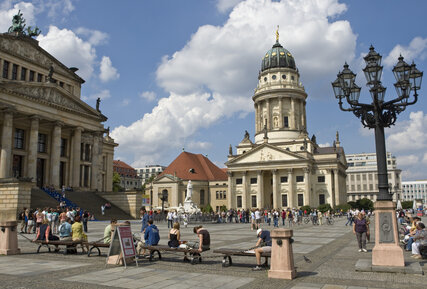
The Gendarmenmarkt is one of the most stunning squares in the city, located close to Friedrichstraße , Berlin's exclusive shopping street in the central Mitte district. Three of the most impressive examples of architecture in the capital city are to be found here: the Concert House designed by Schinkel and the German and French Cathedrals (the Deutscher Dom and the Französischer Dom ).
Combine your visit to Gendarmenmarkt with a city tour and discover other top sights:
Tickets for Hop-On Hop-Off Bus Tours
Top pick 6: Kurfürstendamm - Berlin's most famous shopping street

Extending all the way from the ruins of the Kaiser Wilhelm Memorial Church on Breitscheidplatz to Berlin's elegant Halensee neighbourhood, the affectionately termed Kurfürstendamm is the most expensive address in the capital city and home to the most exclusive brands. Europe's biggest department store KaDeWe is also situated on the extension of the Ku'damm, on the street known to locals as the Tauentzien (short for Tauentzienstrasse). You will find many sights and top attractions along this famous shopping street. The little ones will just love the Zoo Berlin , Germany's oldest zoo.
Day-Tickets for Zoo Berlin
Top pick 7: Charlottenburg Palace
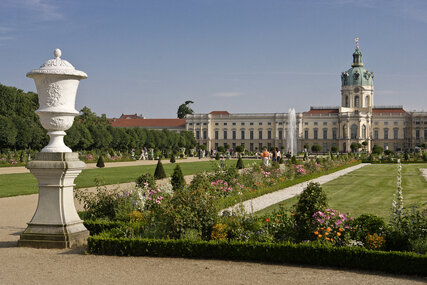
The magnificent Charlottenburg Palace is located just outside the city centre. Built by the Prussian head of state Frederick I around 1700 for his beloved and much-admired wife, Queen Sophie Charlotte, it lies in the middle of a picturesque palace park directly on the River Spree. If you don't fancy a stroll in the park, you can also visit first-class museums and a collection of casts of ancient sculptures directly opposite on Schloßstraße.
Top pick 8: Museum Island
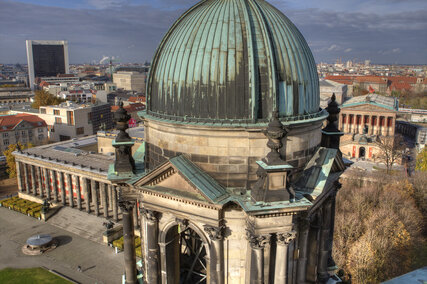
Berlin's Museum Island is one of the UNESCO world heritage sites and home to the city's most important exhibition centres: the Altes Museum ( Old Museum ), the Neues Museum ( New Museum ) the Bode Museum , the Pergamon Museum and the Alte Nationalgalerie ( Old National Gallery ). The collections in these buildings encompass over 6,000 years of art and cultural history. Unfortunately, the Pergamon Museum is closed for extensive renovation work.
Just opposite Berlin's Museum Island, the magnificent monumental Berlin Cathedral, an important landmark of Berlin whose history dates back to the 15th century, is also located on the Museum Island.
Tip: Visit Berlin's museums with the 3-day Berlin Museum Pass . For €32 (reduced €16), the museum pass guarantees free admission for all Berlin visitors on three consecutive days to many museums. Order now in the visitBerlin-Shop
Tickets for the Museum Pass
Top pick 9: The Berlin Wall Memorial and Documentation Centre
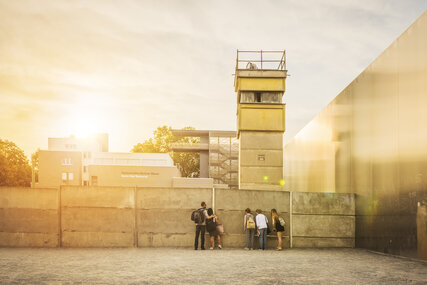
The Gedenkstätte Berliner Mauer ( Berlin Wall Memorial ) is located between the districts of Wedding and Mitte on Bernauer Straße. The large area houses an outdoor exhibition, a documentation centre, the memorial to the victims of the division and the Chapel of Reconciliation. The surviving section of the wall and watchtower enable visitors to get a real feel for the reality of the border facilities. A must see Berlin attraction, not only for visitors interested in Beriln's history.
Get to know more about the Berlin wall at the East Side Gallery .
Top pick 10: Victory Column - magnificent view on Berlin
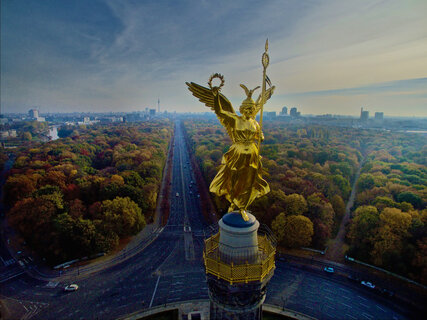
The Berlin Victory Column is one of the most famous landmarks of the German capital. The 67-metre-high column, crowned by the golden Berlin Peace Angel visible from afar, stands in the middle of the Tiergarten. From the platform you have a magnificent view over the parklands of the Tiergarten and over the whole of Berlin. The Victory Column was erected in the 19th century and originally commemorated Germany's wars of unity. Today it has become a symbol of peace.
From the Victory Column you can walk in the Tiergarten but also walk to the nearby Brandenburg Gate , Potsdamer Platz or the Berlin Reichstag .
More about sights in Berlin:
Sightseeing in berlin.
- All sights in Berlin
Museums in Berlin
Do you know what is planned in the historic centre of Berlin and which new openings are coming up? Find out on our infographic:
Berlin's new cultural centre
- Share on Facebook Share on Facebook
- Share on X Share on X
- Share by email Share by email
- Print page Print page
You might find this also interesting
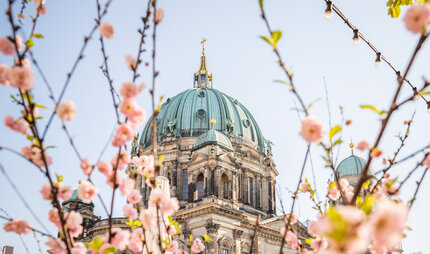
Your Berlin guide with insider tips
The top sights, the best exhibitions and tickets for city tours – your must-do list for sightseeing in Berlin!
Show details

From Museum Island to the DDR Museum
From great masterpieces to unusual exhibits – Berlin’s museums are home to stunning works of art and fascinating worlds.
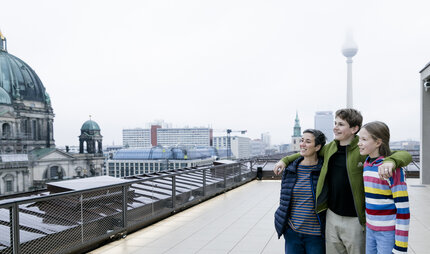
Experience Berlin (almost) for free.
Low Budget Sightseeing in Berlin
Berlin is exciting, Berlin is diverse and surprising for a capital city, Berlin isn't expensive. For visitors on a low budget the city is a

StarsInsider
Incredible images of the building of the Berlin Wall
Posted: May 24, 2024 | Last updated: May 24, 2024
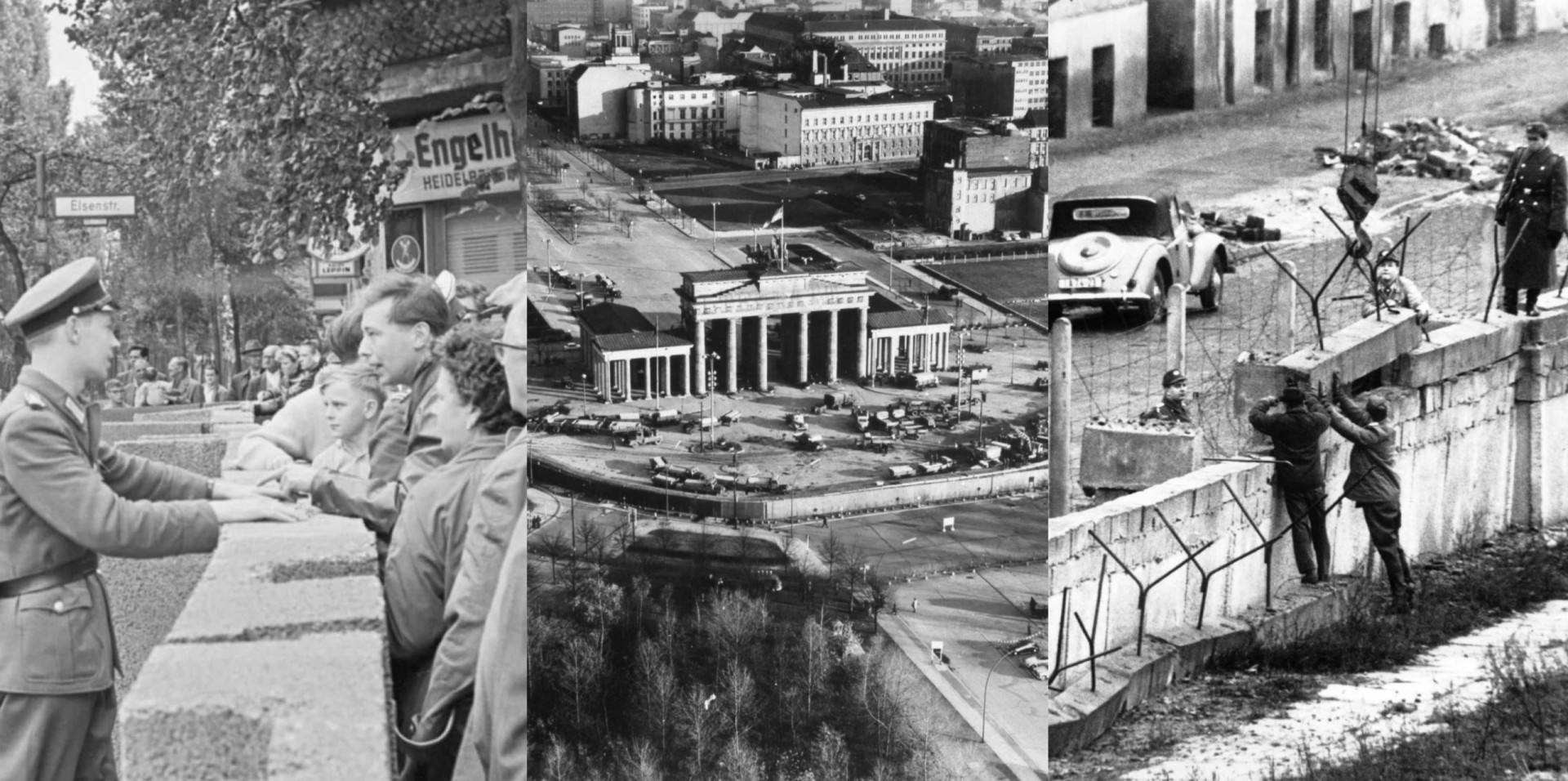
Built on the orders of East German communist politician Erich Honecker to stem the mass emigration of Germans from East Berlin to West Berlin, the Berlin Wall was a heavily guarded barrier that physically and ideologically divided the city from 1961 to 1989. In a wider context, the wall came to symbolize the "Iron Curtain" that separated Western Europe and the Eastern Bloc during the Cold War. It was constructed in just two weeks, initially as a makeshift barbed wire and concrete block wall. But it was soon strengthened and reinforced to serve as a deadly obstacle to anyone seeking freedom in the West.
In this gallery, click through and be reminded of how quickly the Berlin Wall went up, and the way it cut an entire city in two.
You may also like: You won't believe these celebrity couples met on blind dates
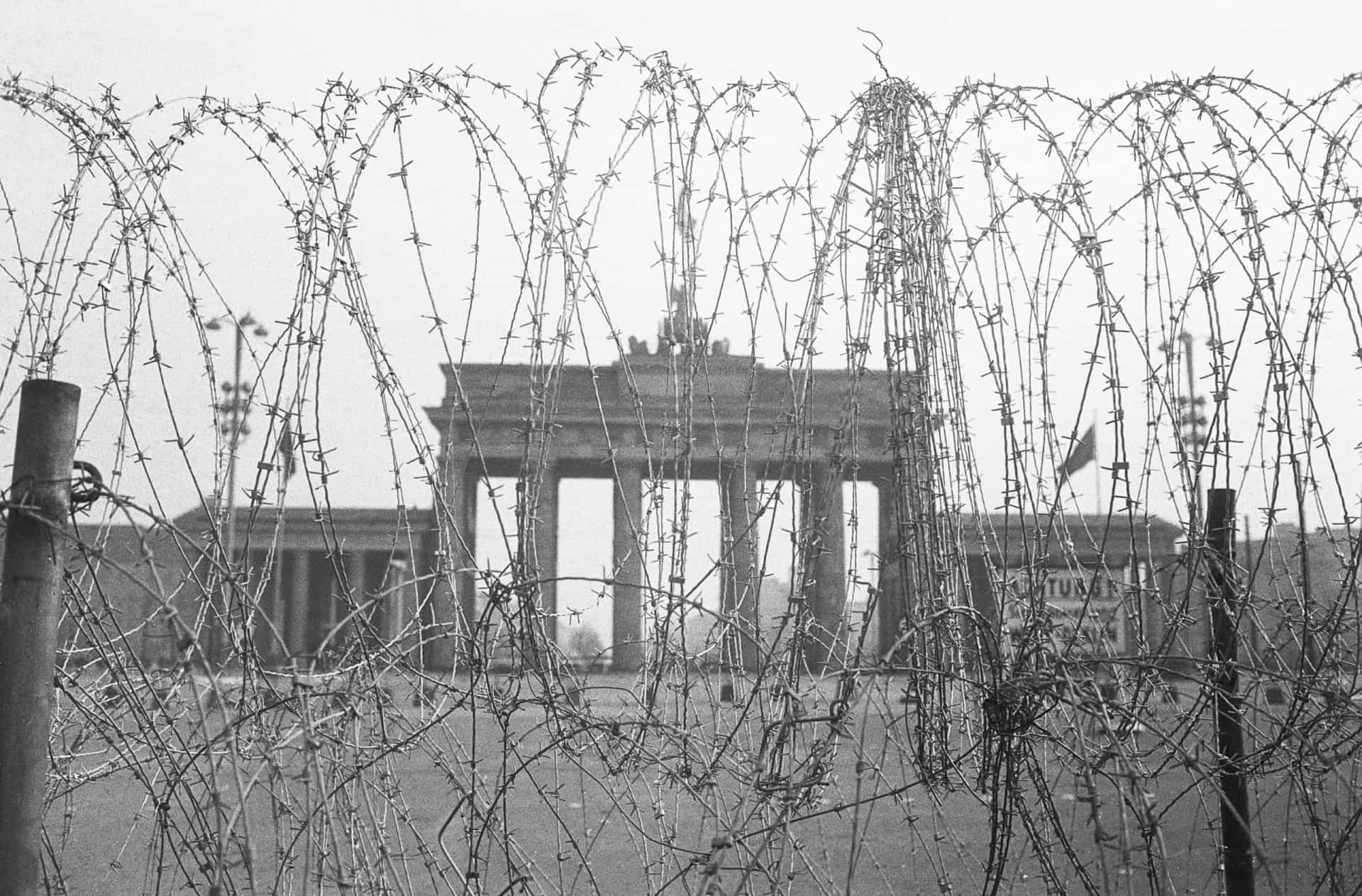
Pre-August 13, 1961
This June 1, 1961 photograph shows the Brandenburg Gate wired shut, but before building of the wall had commenced. The monumental city gate stood on the dividing line between East and West Berlin.
Follow us and access great exclusive content every day
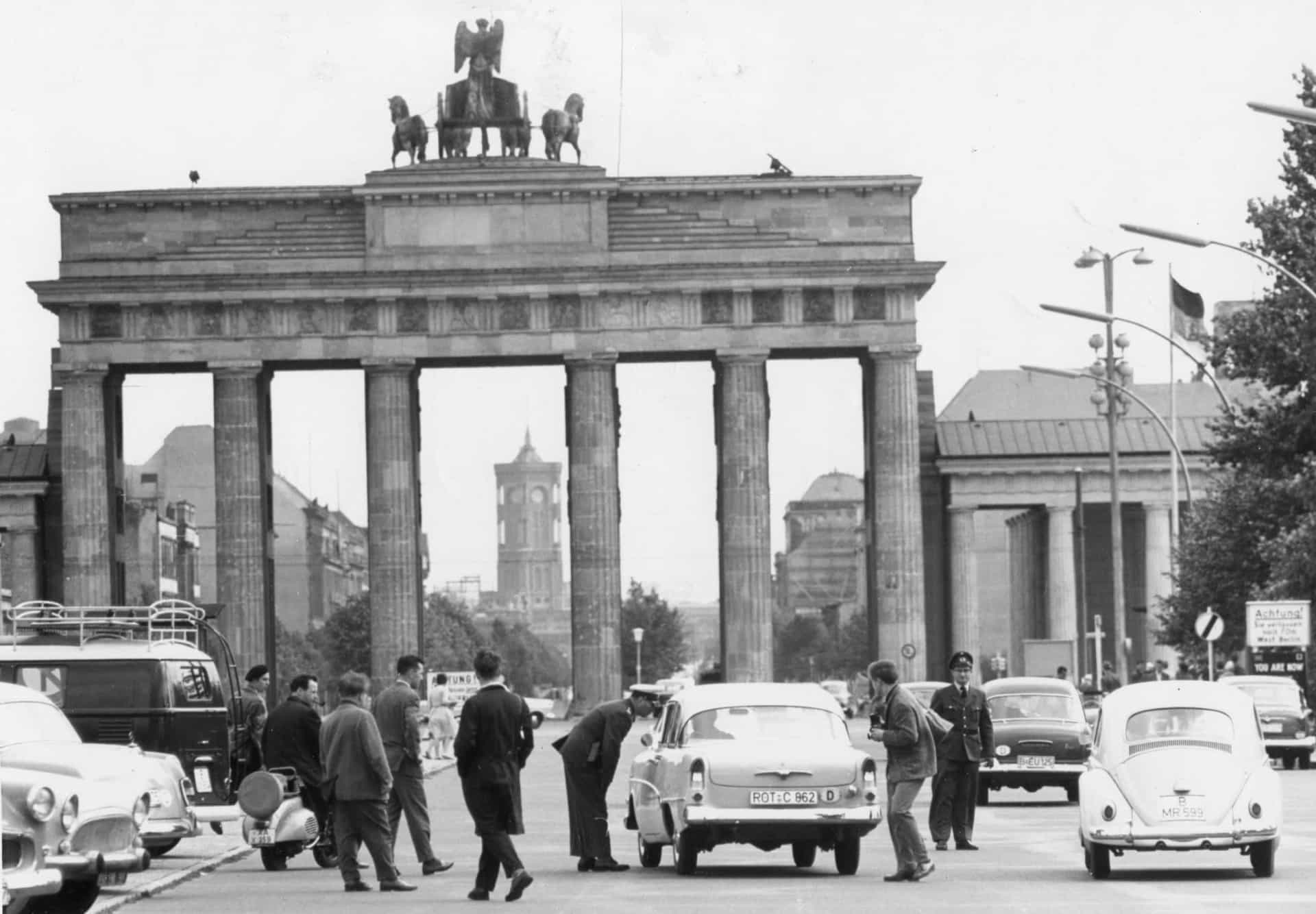
Cross-border access
Pictured: West Berlin police officers, pictured here on August 21, 1960, speak to motorists before they cross under the Brandenburg Gate into East Berlin. Approximately one year later, the landmark gate, which was to form part of the Berlin Wall, was closed by the East.
You may also like: Celebrities you didn't know have LGBTQ parents
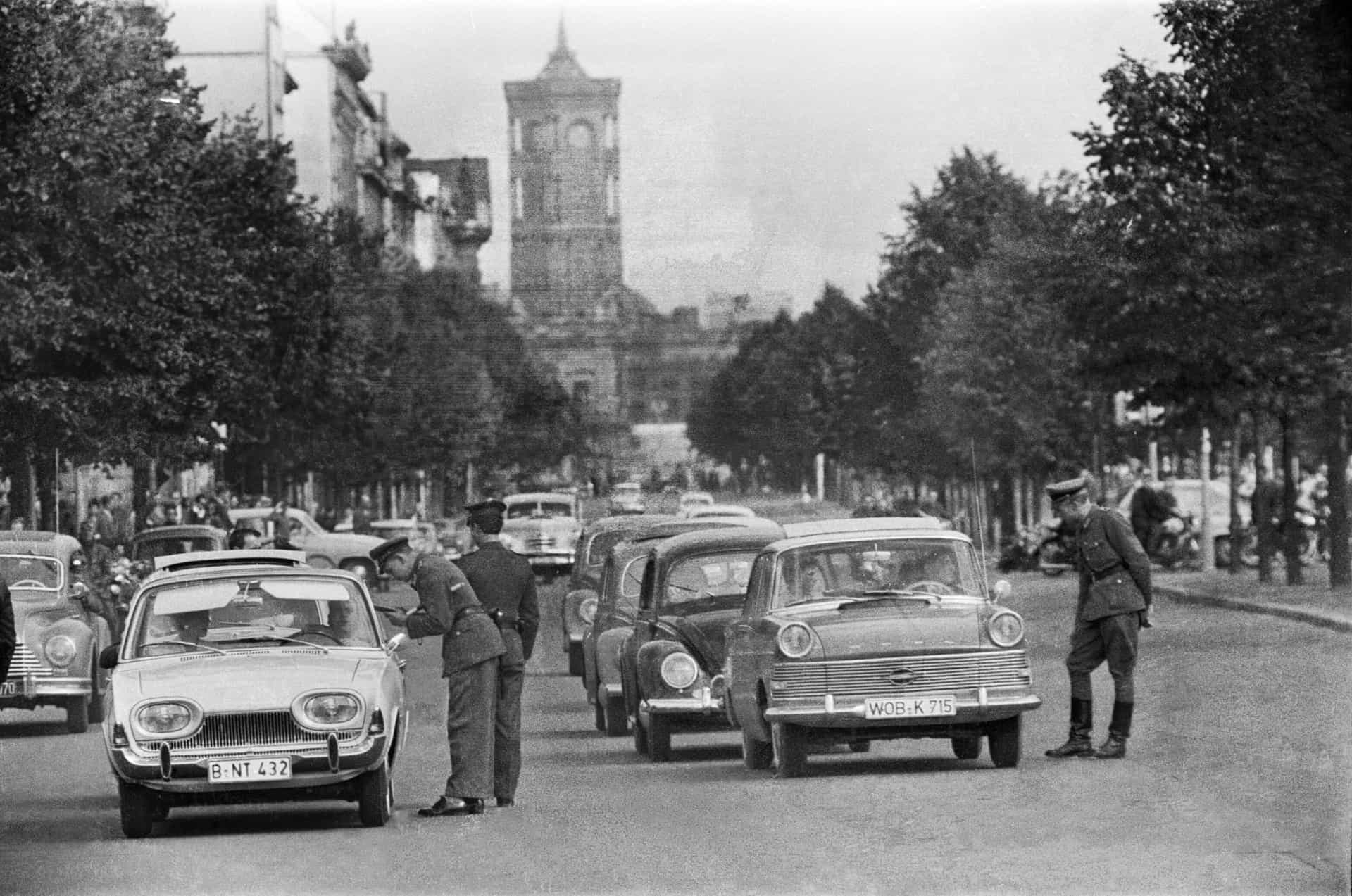
Traffic flow checked
Pictured: East German police checking drivers' documentation on the streets of Berlin early August 1961 after the East-West border was closed in preparation for the wall's construction.
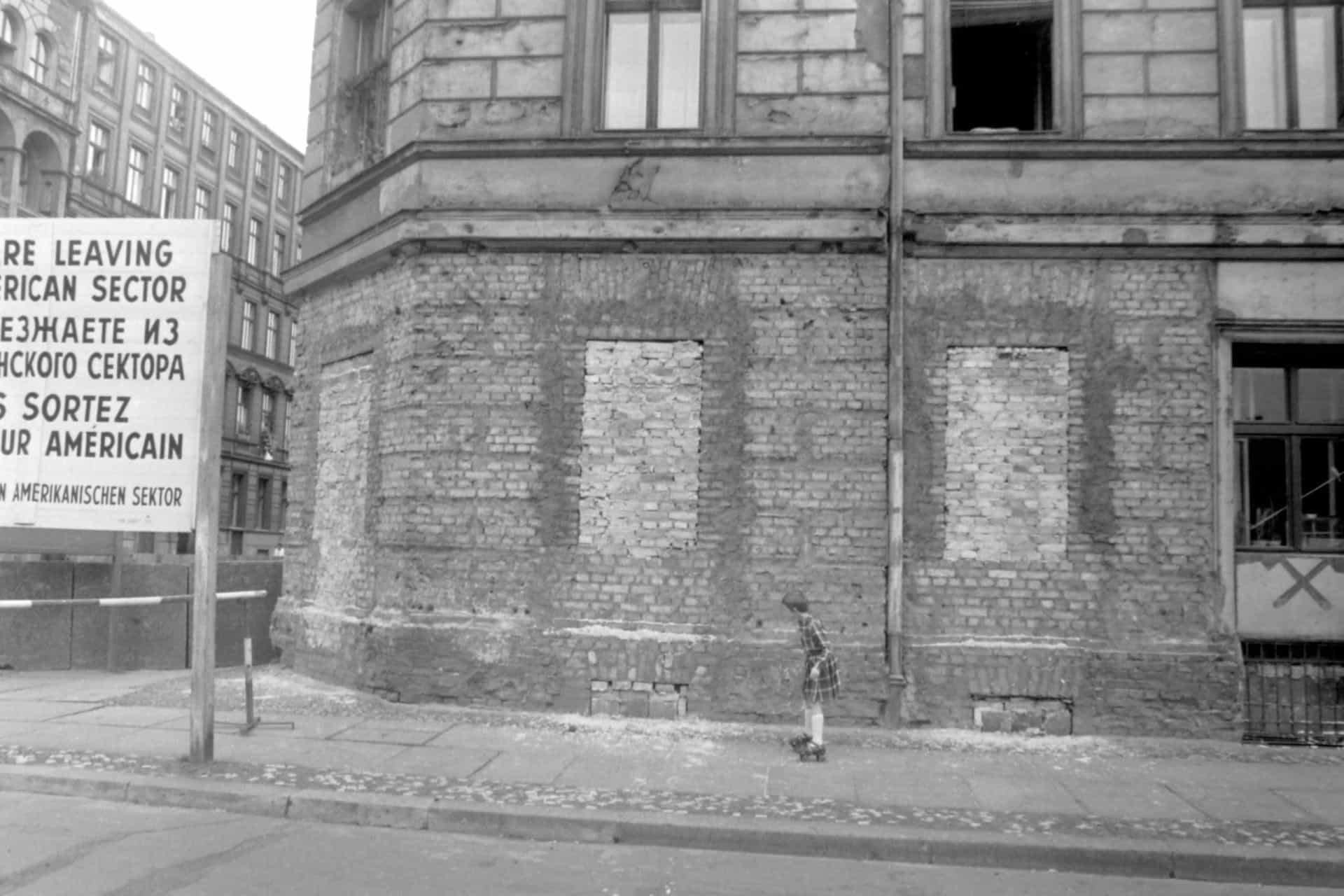
The wire goes up
Pictured: a child on roller skates scoots down Luckauer Straße in the Kreuzberg district of East Berlin. The street's proximity to the wall means windows in the basement of the house have been bricked up to avoid facilitating an escape attempt to the West.
You may also like: Celebrities who have been banned from other countries

Street access denied
East German troops and workers had begun to tear up streets running alongside the border to make them impassable to most vehicles and to install barbed wire entanglements and fences along the 156 km (96 mi) around the three western sectors of the city as well as the 43 km (26 mi) that divided West and East Berlin.
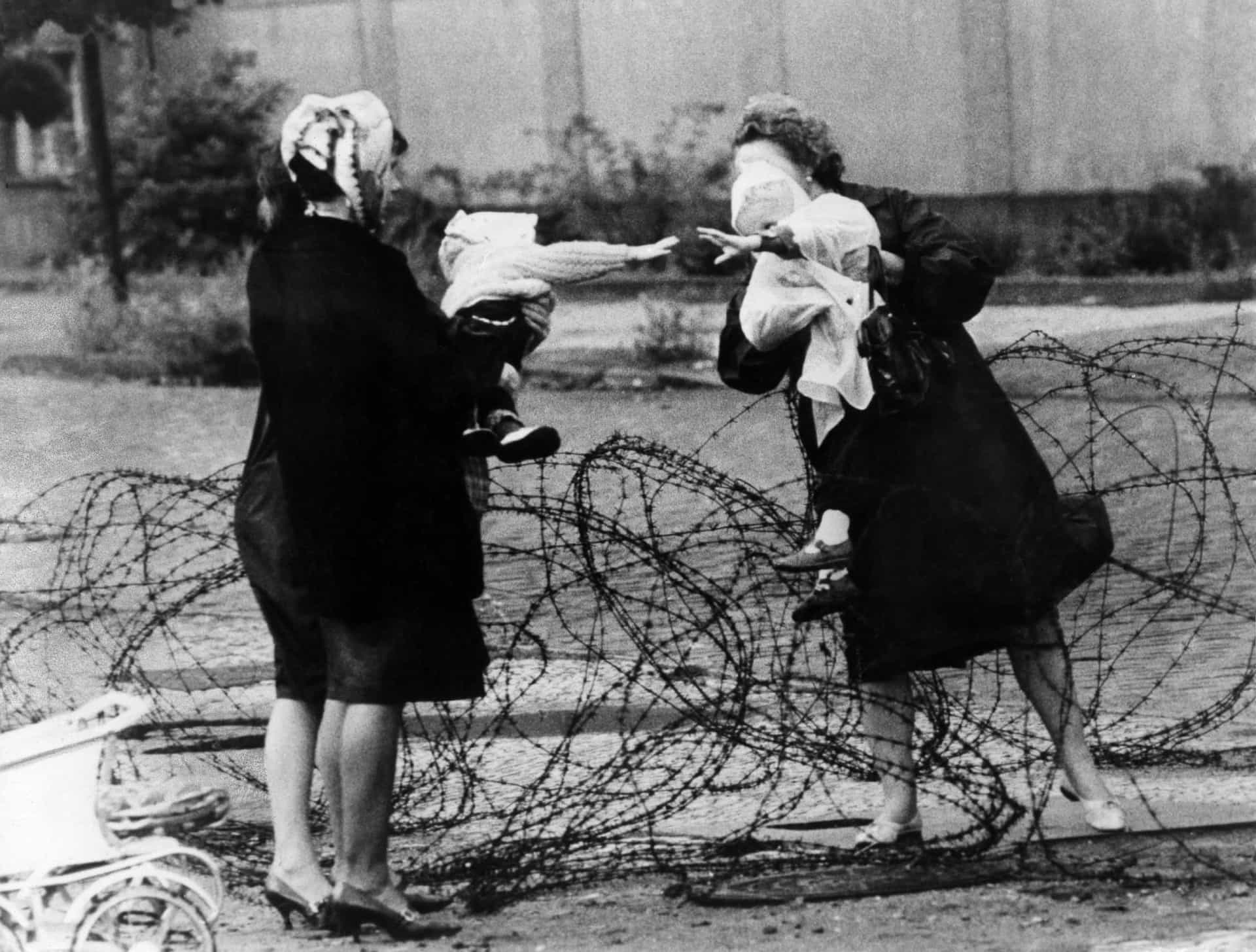
Across the barricade
This poignant image captures the heartache and bewilderment felt by many on both sides of the wall as they tried to communicate with family and friends during the early days of the divide, when the barricade was not much more than tangled barbed wire fence.
You may also like: Celebrities who were found dead in hotels
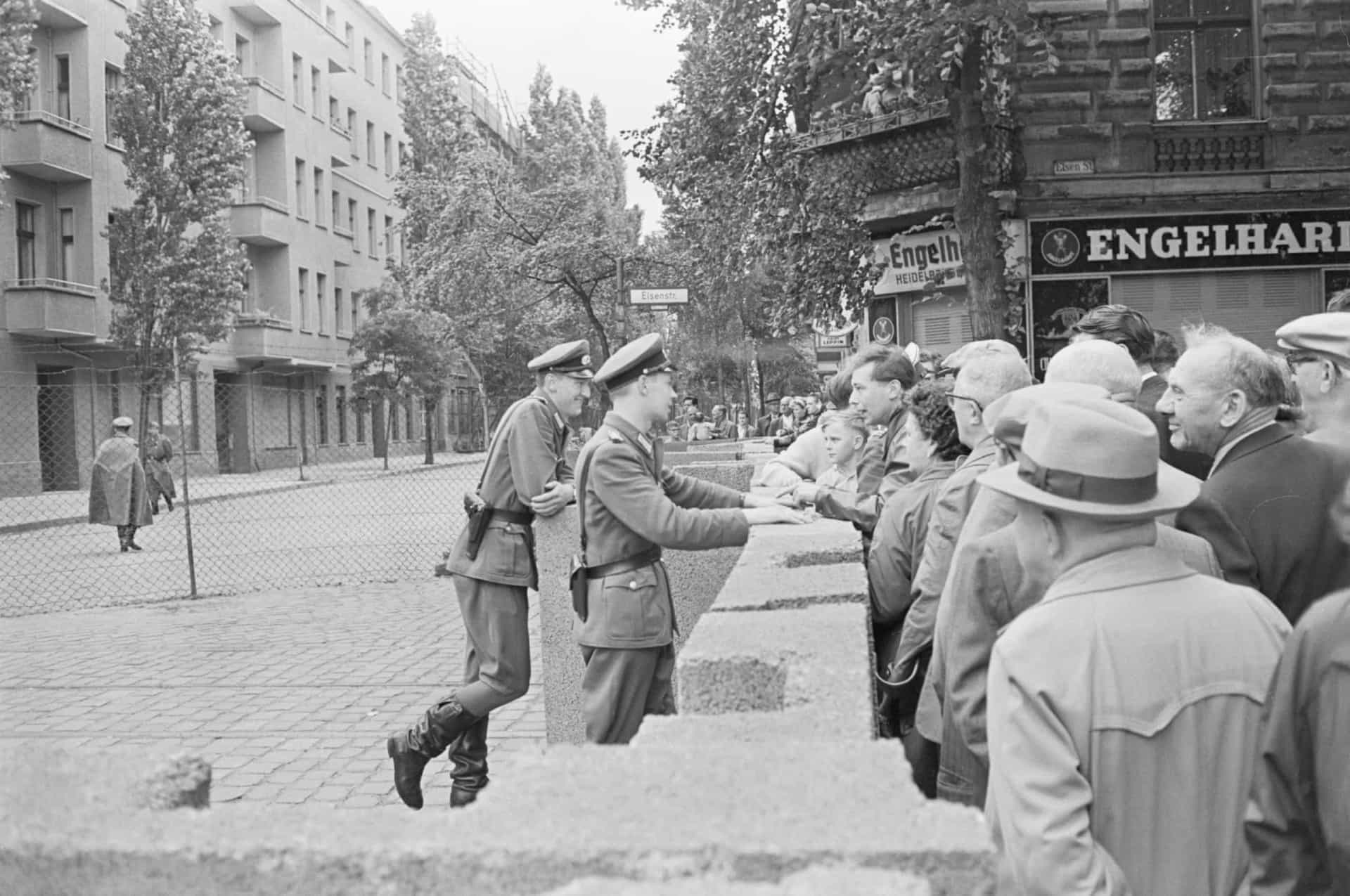
Pictured: conversing across a barricade, members of the East German police force try to explain the situation to a group of West Berliners after the closing of an East-West border point in Berlin.
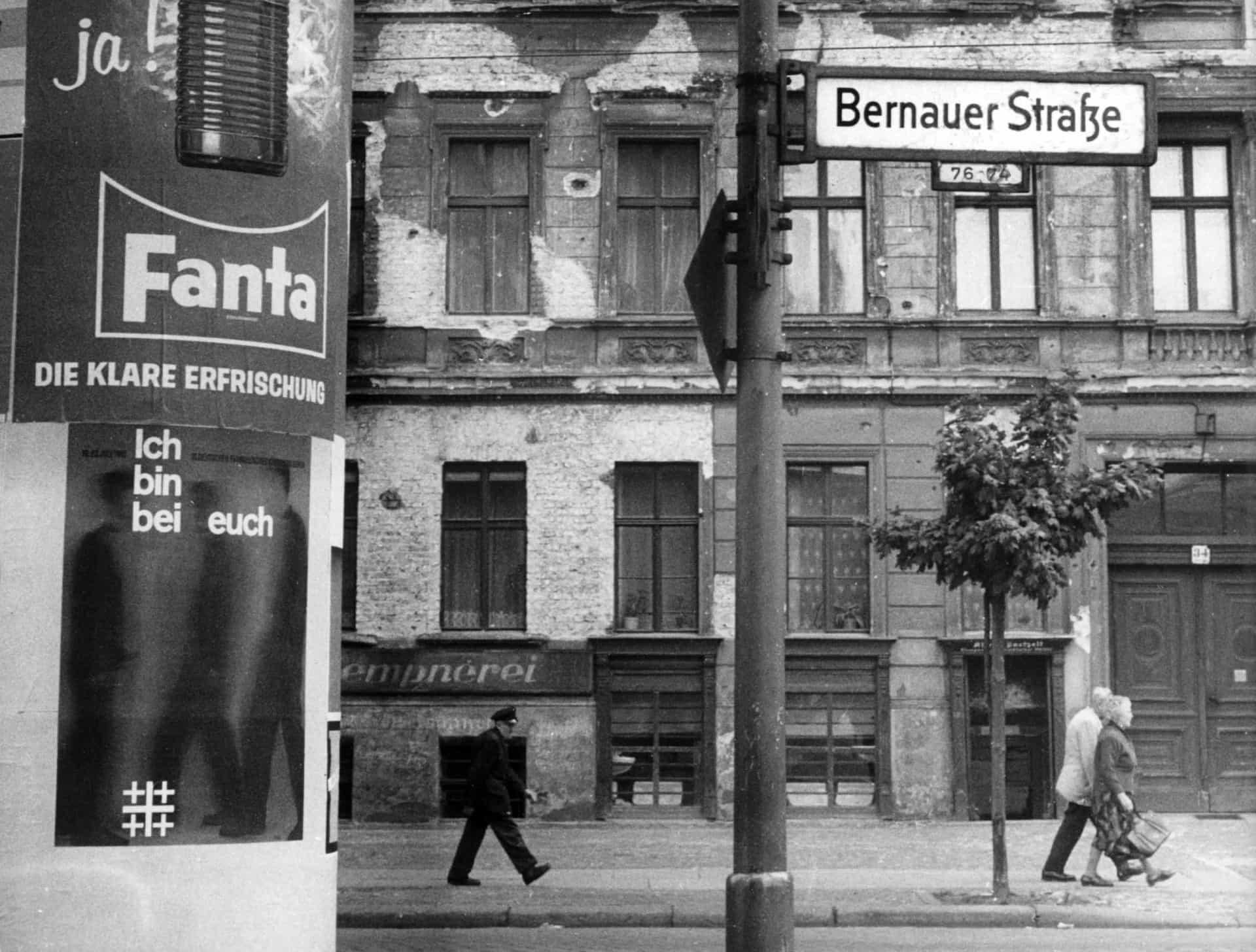
Shops closed
This view across Bernauer Street in West Berlin shows closed shops on July 7, 1961. The buildings opposite are situated in East Berlin.
You may also like:
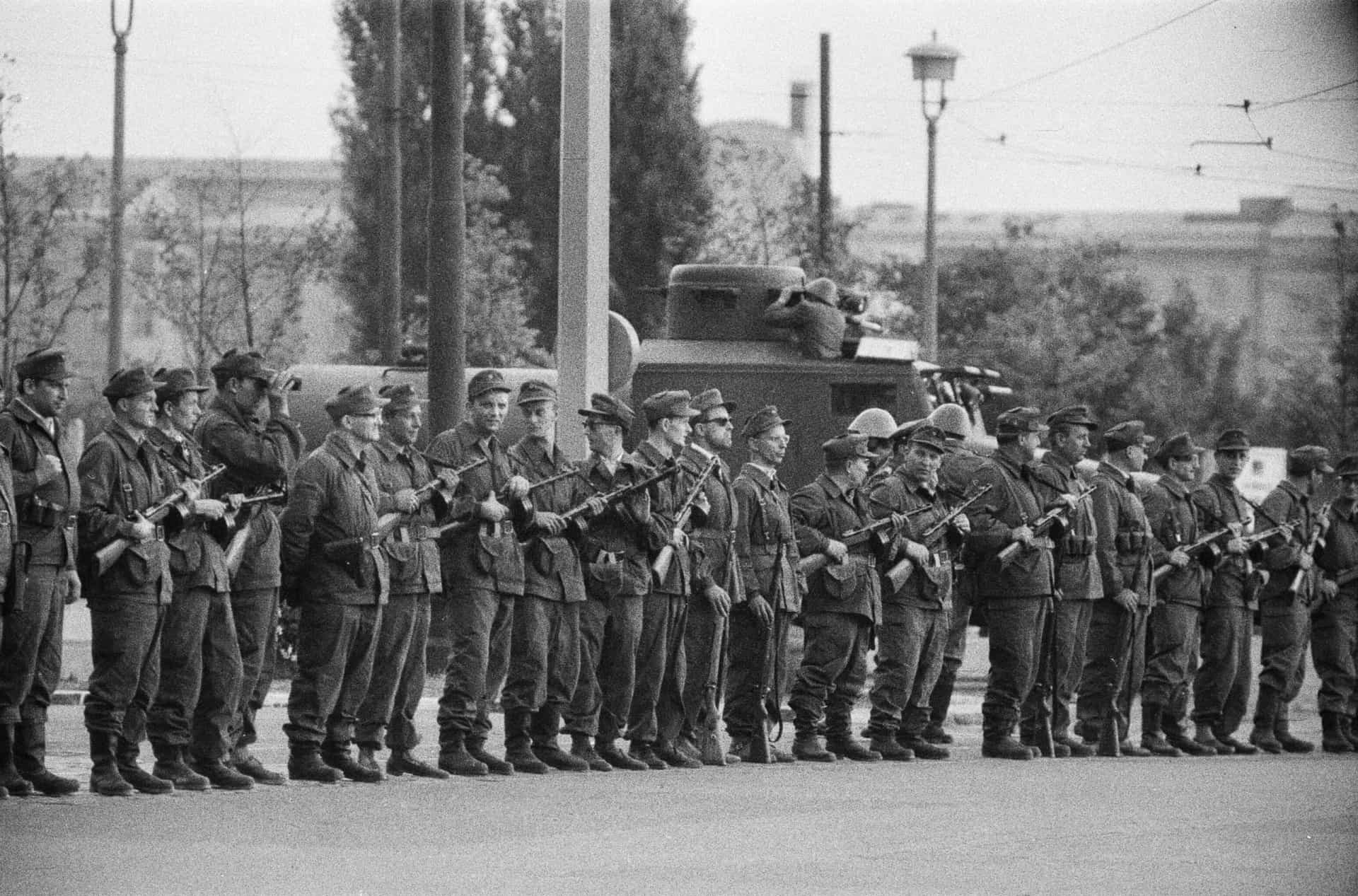
Construction of the wall begins
At midnight on Sunday, August 13, the police and units of the East German security forces began to close the border. By the morning, the border with West Berlin was closed. Construction of the Berlin Wall began the same day.

Keeping watch
Pictured: a young East German border guard keeps watch on the streets of Berlin after all East-West border points were closed.
You may also like: Creepy and fascinating ghost towns you can actually visit
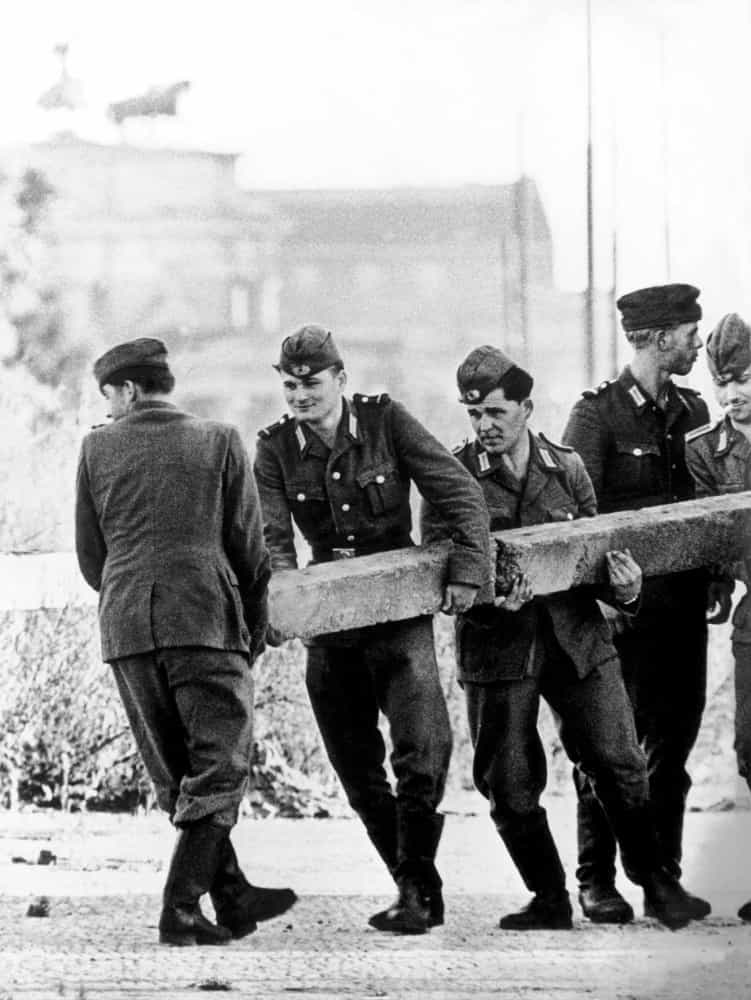
Border points barricaded
Pictured: members of East Germany's security forces begin barricading border points into West Berlin using concrete pillars.
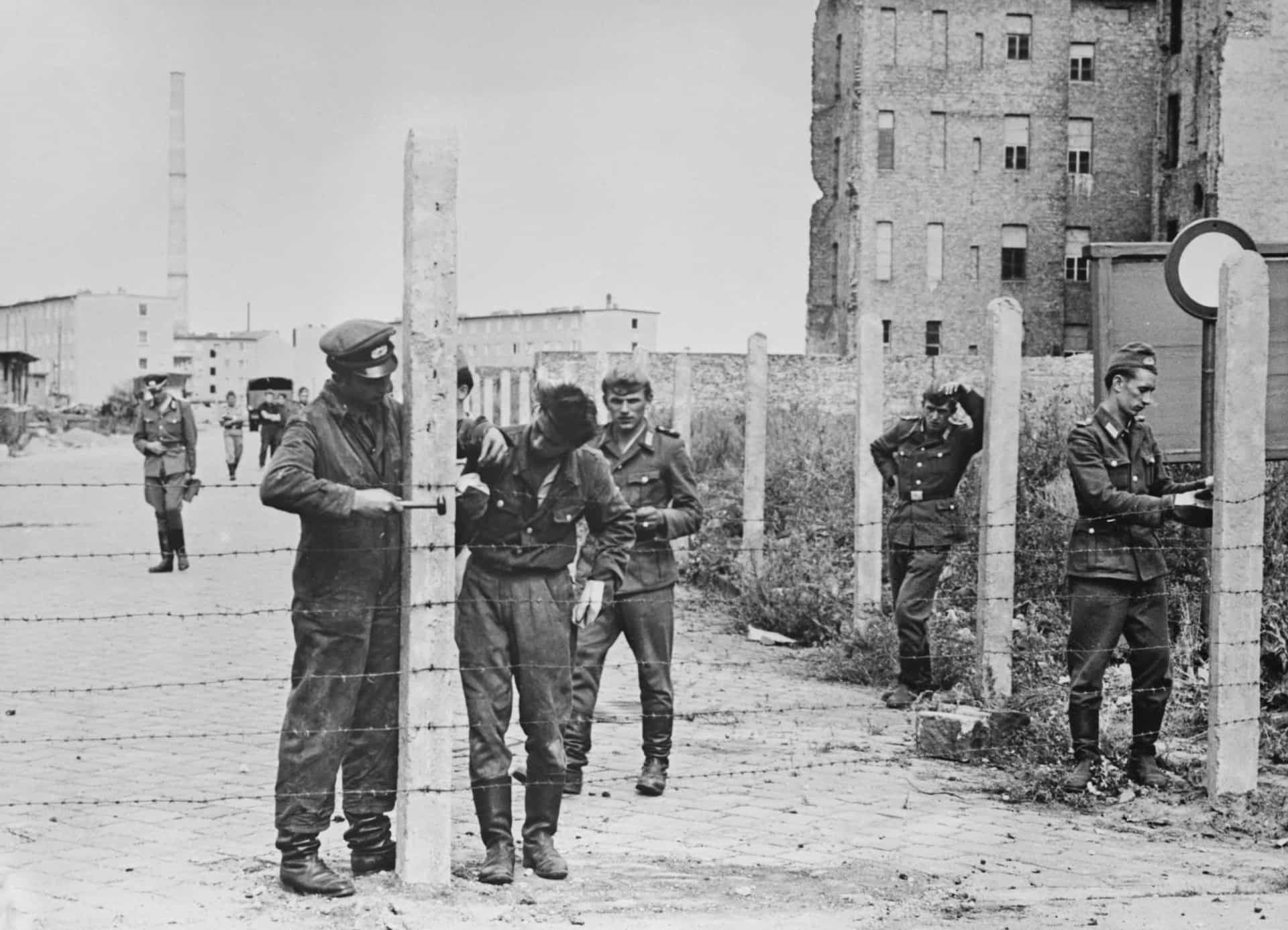
The early wall
The first concrete emplacements were erected on August 17. Initially, the wall was little more than a row of pillars supporting lengths of barbed wire.
You may also like: Absurd dating rules from the '30s, '40s, and '50s
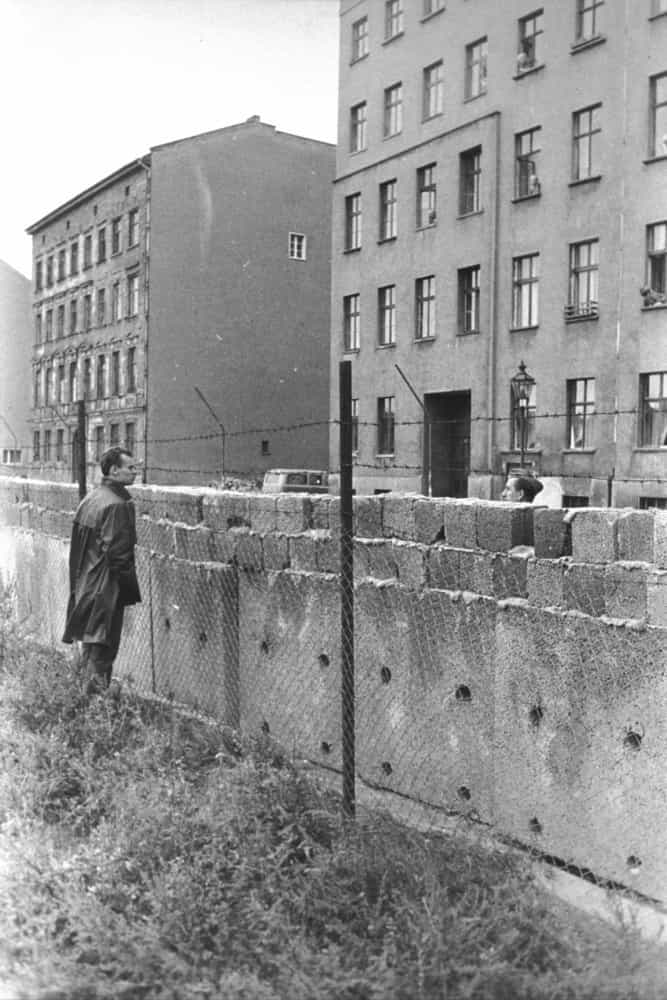
A physical barrier
Pictured: a man in West Berlin chats over the wall to his East Berlin neighbor shortly after the barrier's construction. The barricade was soon heightened and strengthened to prevent meetings like this.
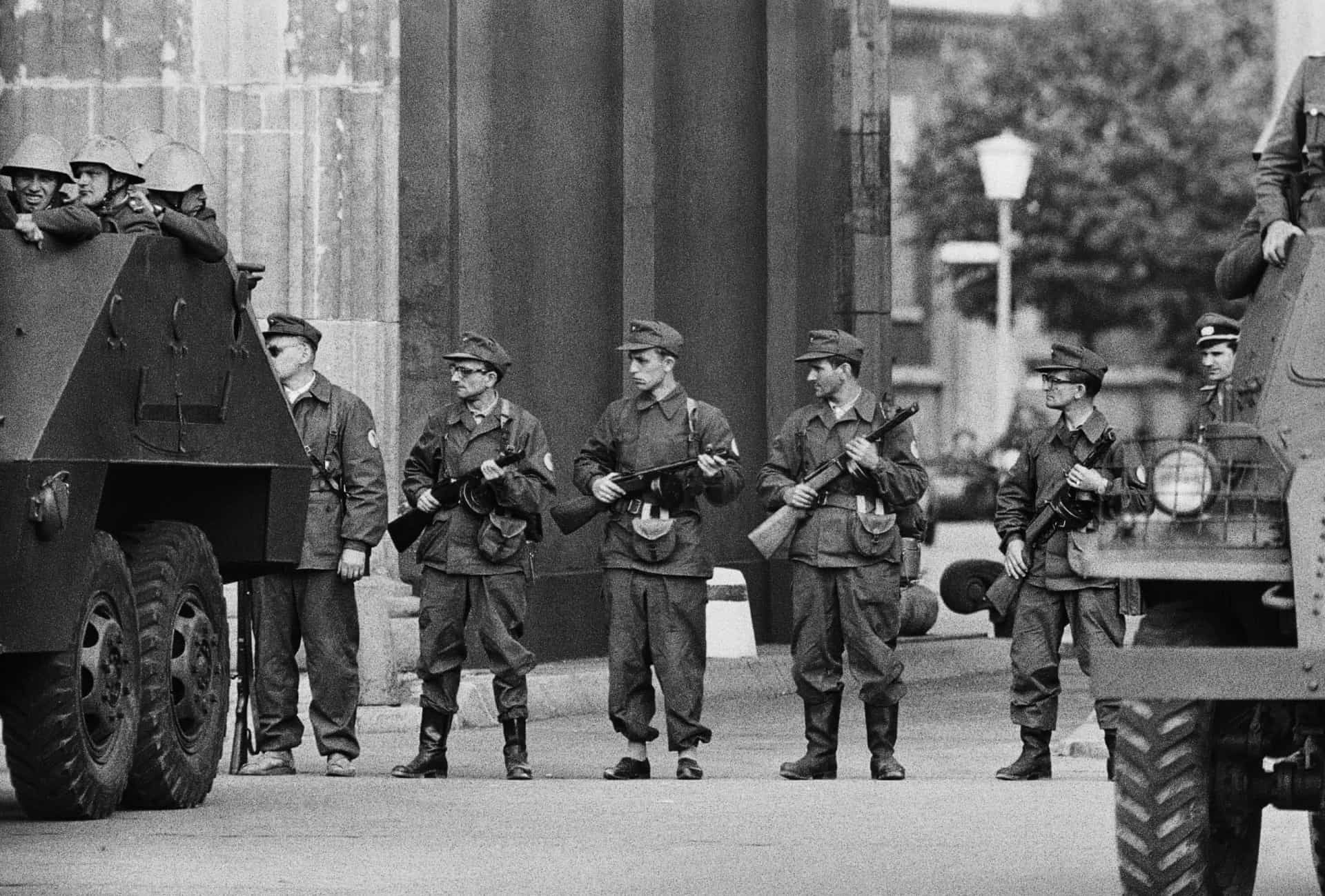
Guarding the new border
Pictured: members of the East German paramilitary organization Combat Group of the Working Class guard the border crossing near the Brandenburg Gate.
You may also like: Things you've been doing wrong all this time
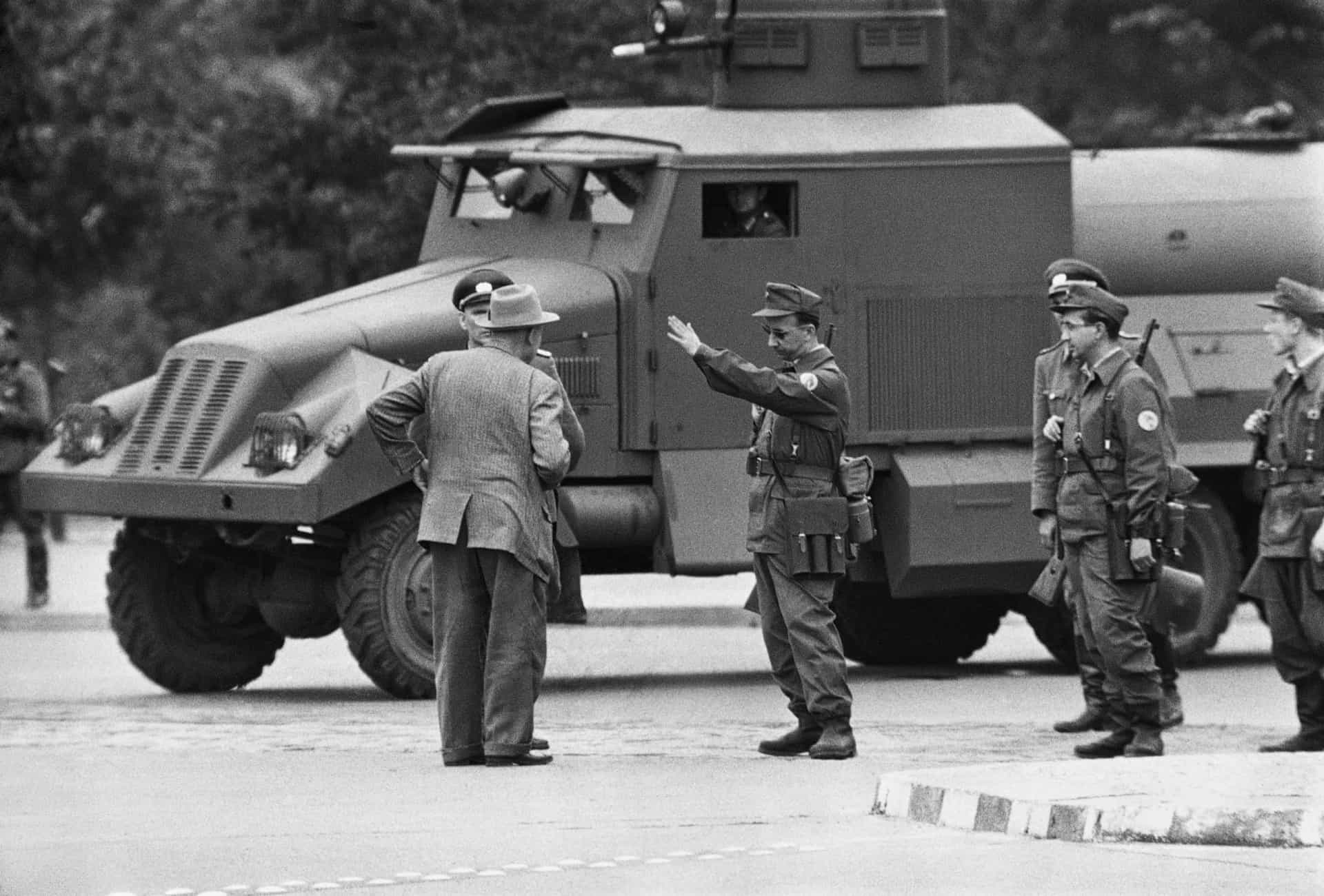
Pictured: an elderly citizen walking towards West Berlin is turned back by a member of the Combat Group of the Working Class paramilitary organization.
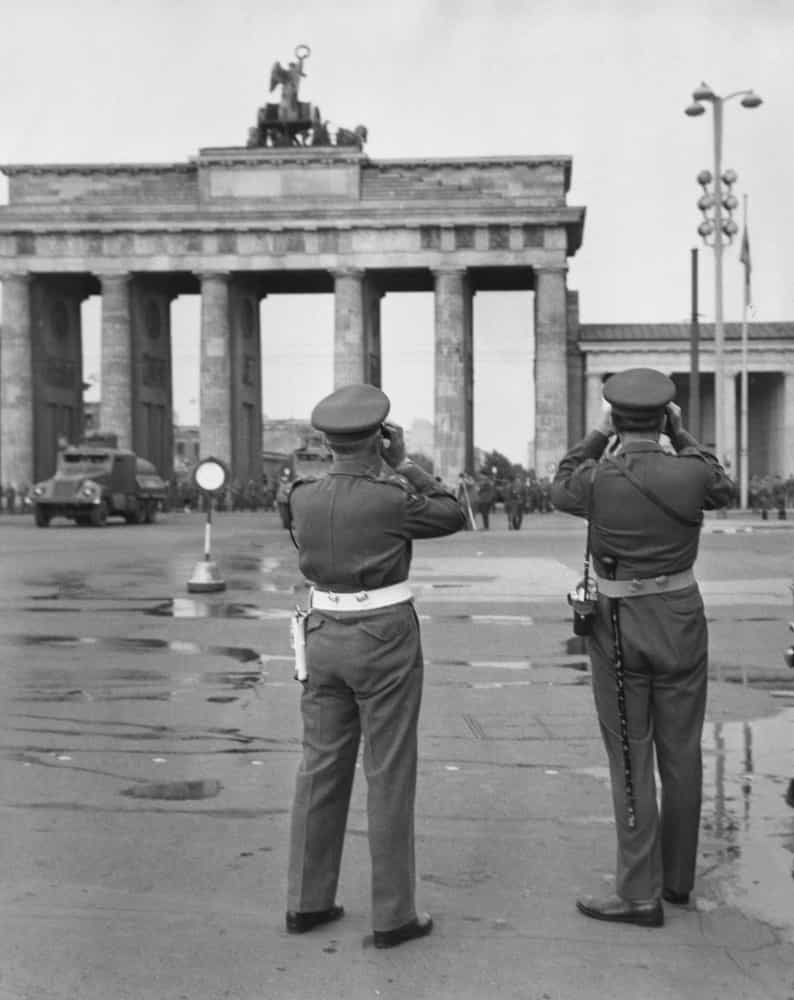
Under scrutiny
Pictured: two senior members of the British Royal Military Police scan the Brandenburg Gate after it was closed by East German security forces as the wall begins to take shape.
You may also like: Remembering the April 9, 1940 invasion of Denmark by Nazi Germany
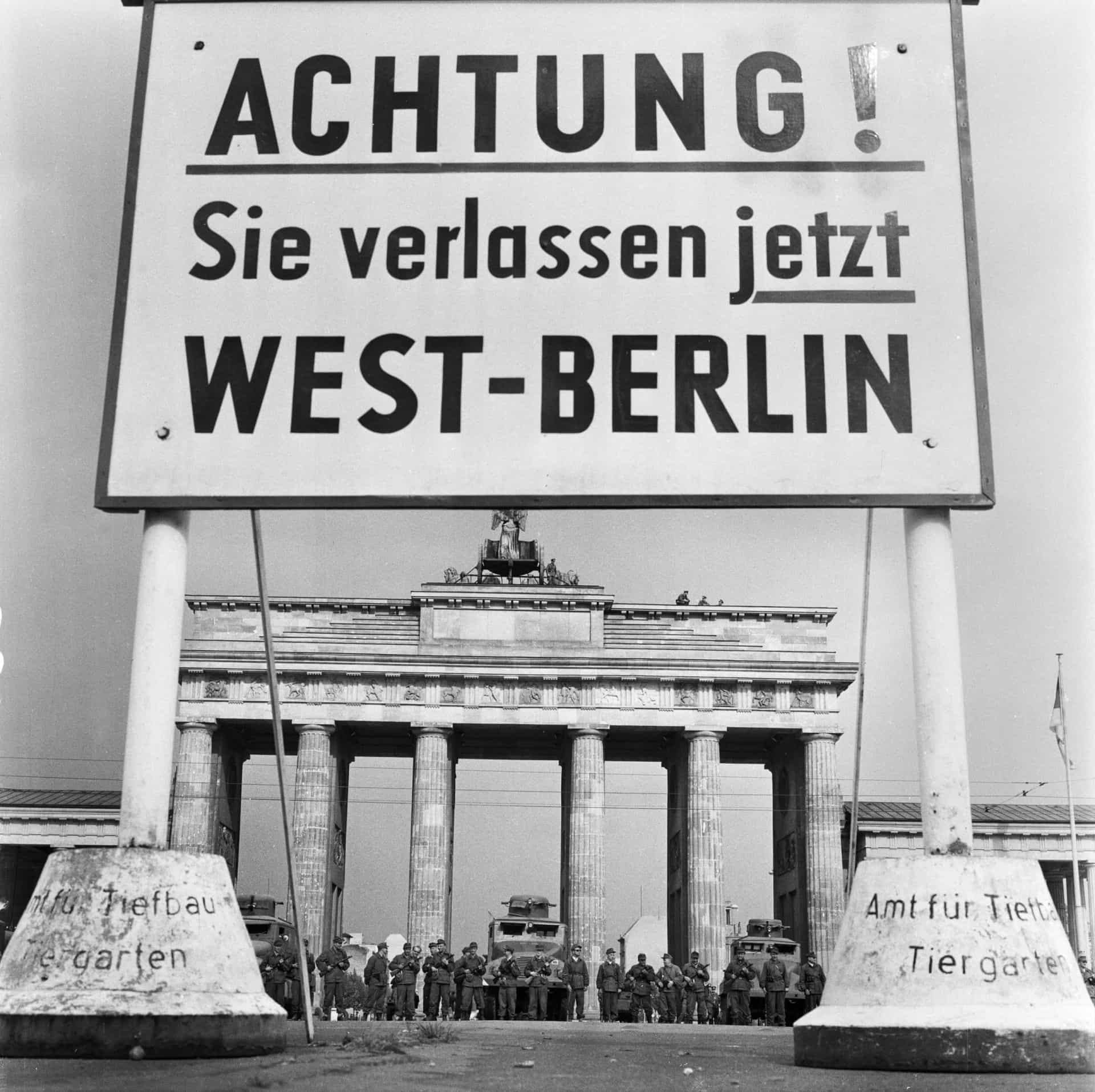
"You are now leaving West Berlin"
"Attention! You are now leaving West Berlin," reads the sign. After the Second World War, Berlin was divided into four sectors: France controlled the north-western, England the western, and the US the south-western parts of the city, while the whole of the eastern part of Berlin was allocated to the Soviet Union.
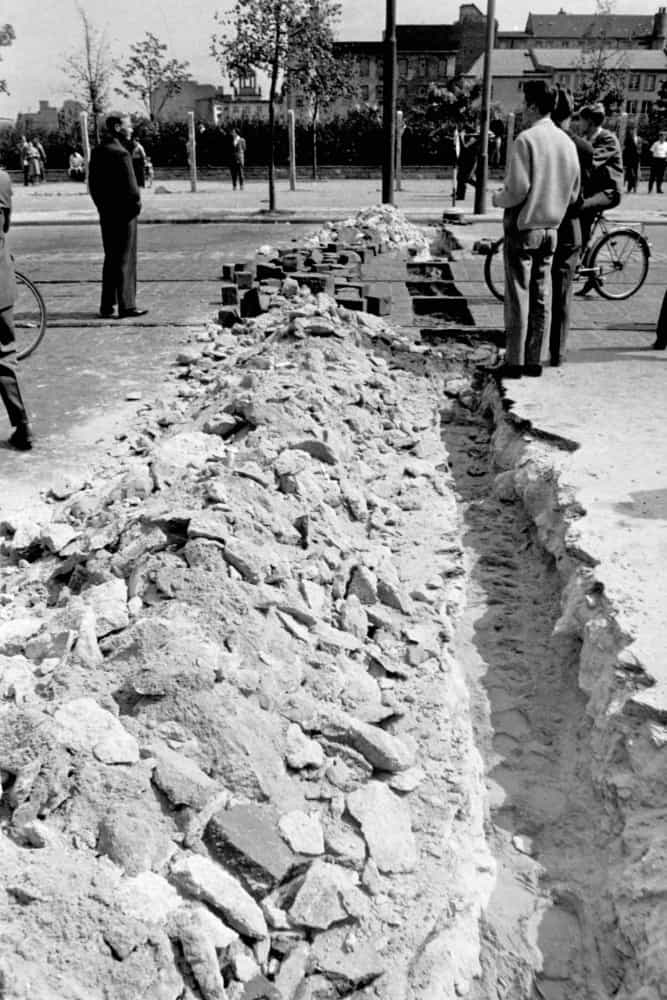
Foundation of fear
Pictured: the surface of the road in Potsdamer Platz has been hammered to pieces to provide a foundation for the wall. Even the tram lines weren't spared.
You may also like: Celebrities on the topic of porn

The wall takes shape
Construction of the wall took place across the city in coordinated sequence, built by East German laborers supervised by armed police and units of the East German security forces.
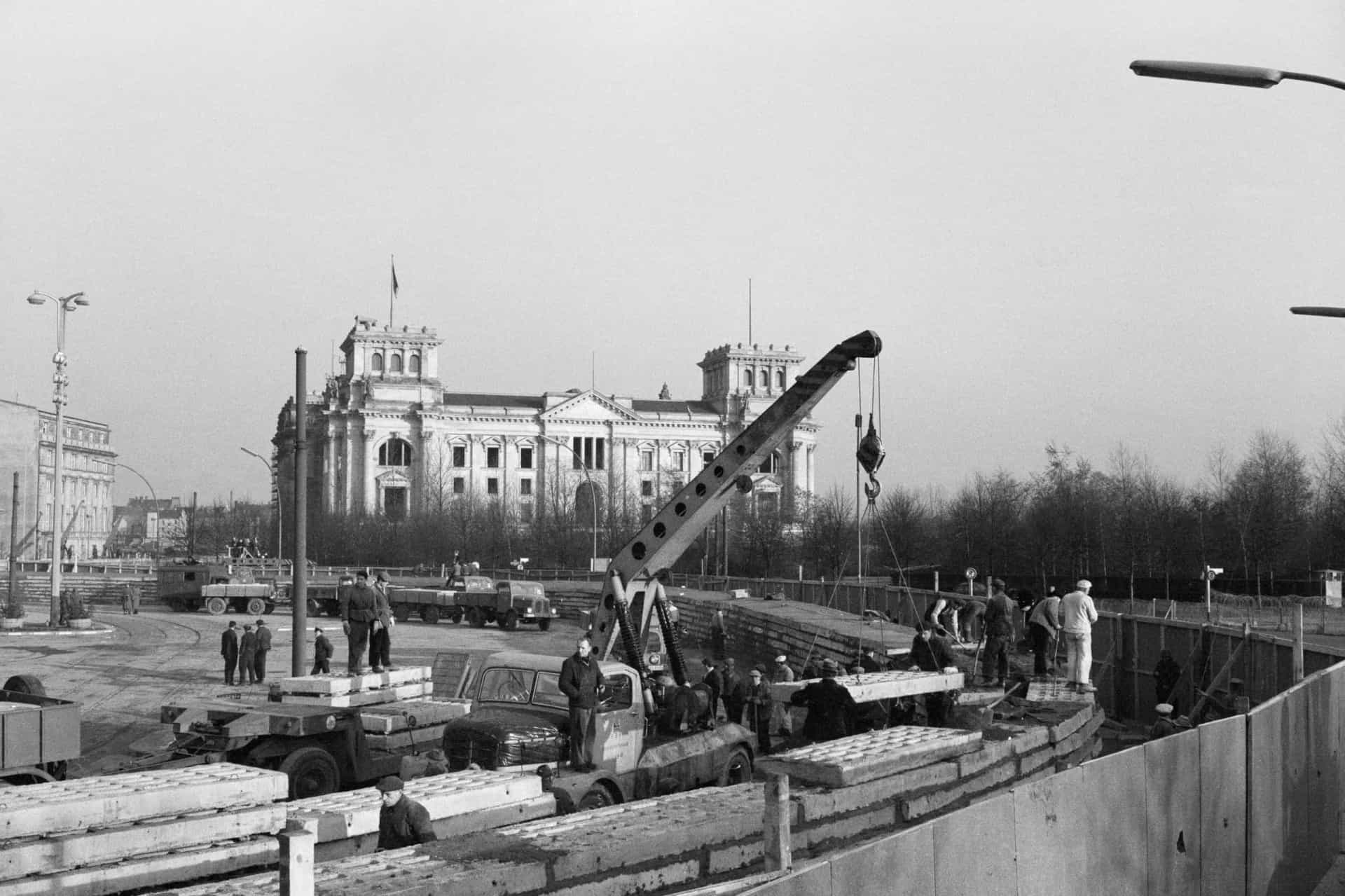
Reinforcements
Several thousand East German soldiers, policemen, militiamen, and workers turned what was originally a communist refugee wall built to stem the tide of emigrants seeking a better life in the West into a fortification designed to withstand a Western attack. The wall was strengthened in key areas of the city, including in this location near the Reichstag Building.
You may also like: The most famous pansexual celebrities in showbiz
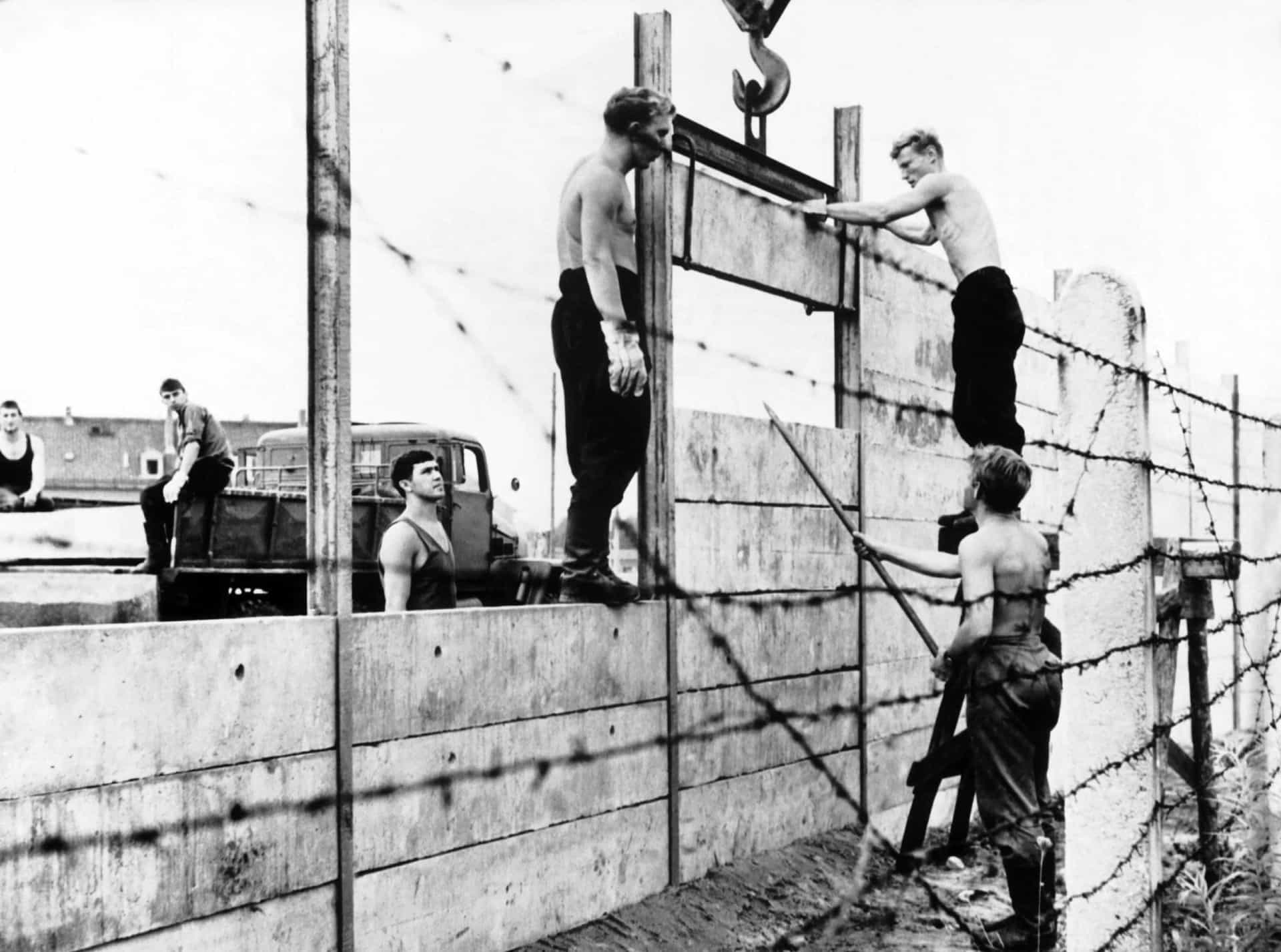
Impregnable
The wall was lent added dimension and impregnability as its height increased to 3.5 m (11.5 ft). The barricade was reinforced by mesh fencing, signal fencing, anti-vehicle trenches, barbed wire, dogs on long lines, "beds of nails" (also known as "Stalin's Carpet") under balconies hanging over the "death strip," over 116 watchtowers, and 20 bunkers staffed with hundreds of armed soldiers.
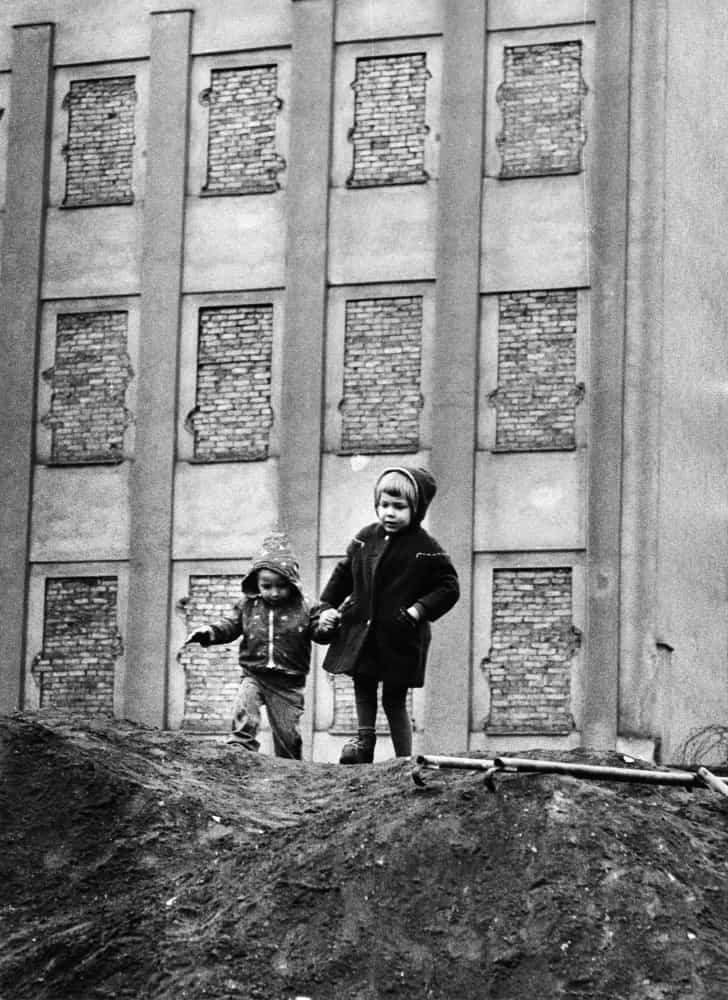
Residents relocated
Entire apartment buildings in East Berlin set facing the wall were bricked up and their residents relocated for fear of the buildings becoming used as clandestine bases for escape attempts. Tunneling especially was perceived as a threat.
You may also like: From old toys to kitchen knives, you could be earning good money with these items
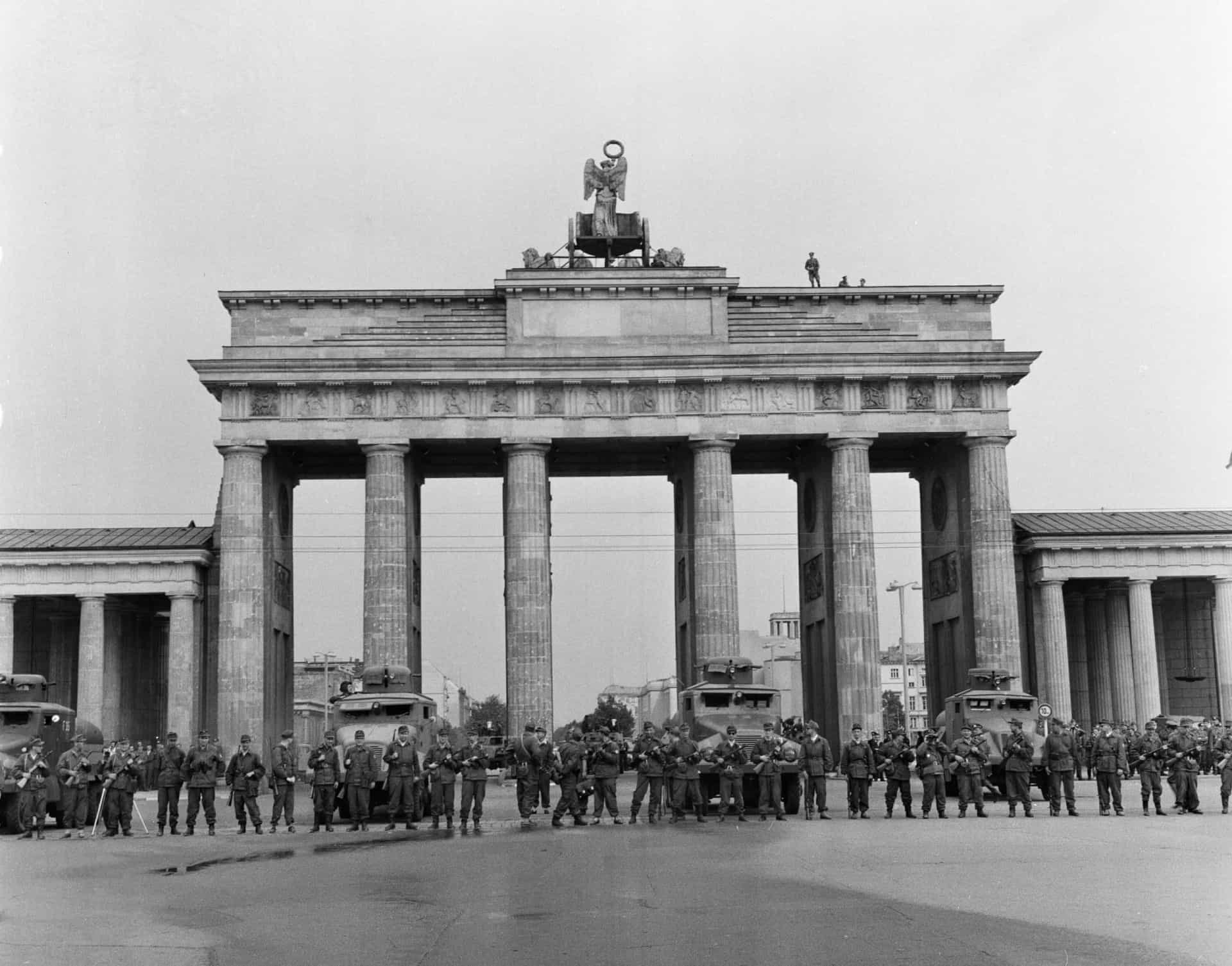
Guardians of the gate
Pictured: members of the Combat Group of the Working Class, deployed to protect the border, stand ready at the Brandenburg Gate, protected by an armored scout vehicle of the border police.
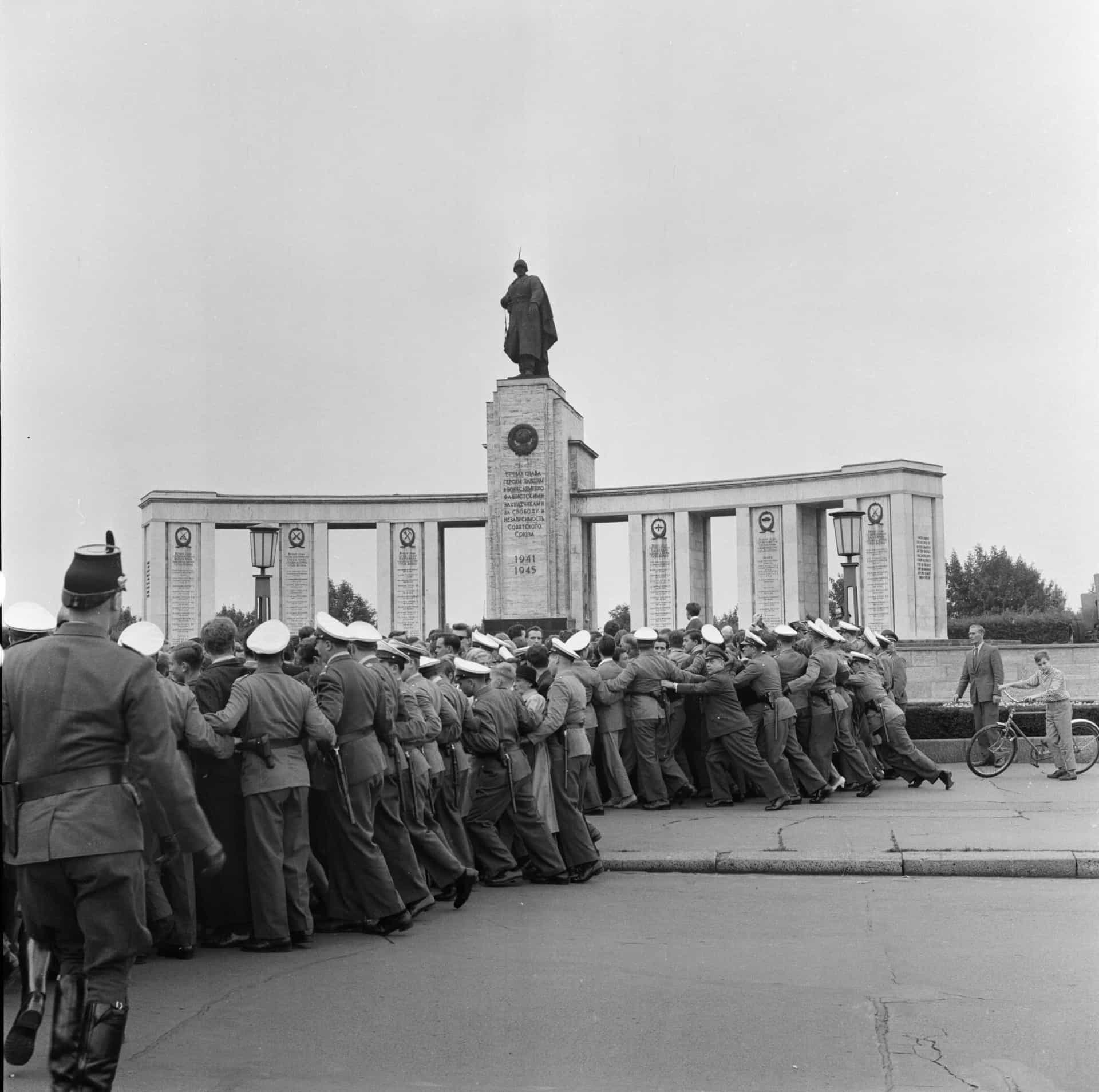
This photograph, taken three days after the wall was erected, shows West Berlin police holding back huge crowds on the streets near the Soviet War memorial during demonstrations against the division of the city.
You may also like: Celebs who have been catfished
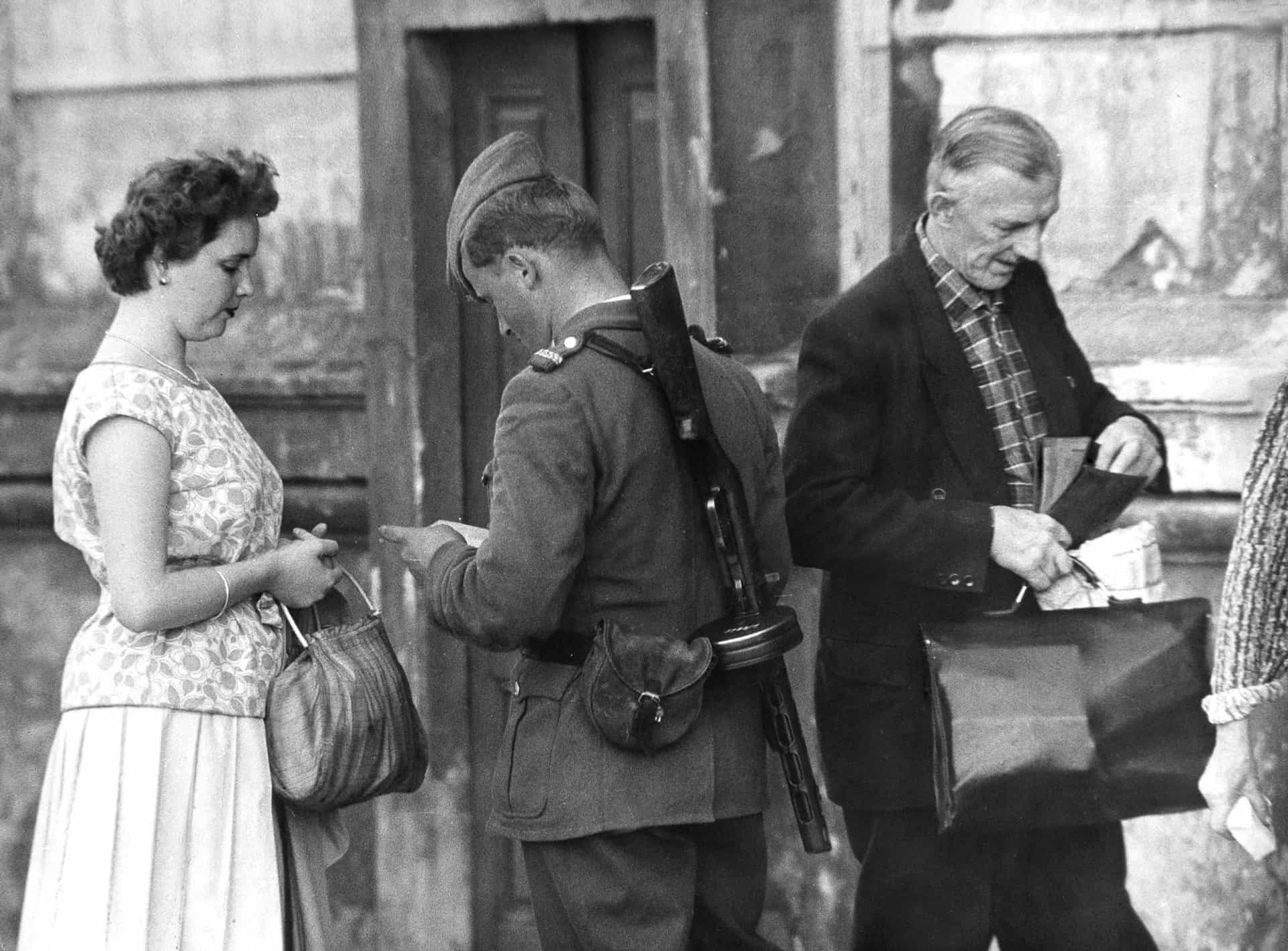
Police state
Pictured: people living close to the newly created border are checked for their identification papers by Deutsche Volkspolizei before they can enter their apartments.
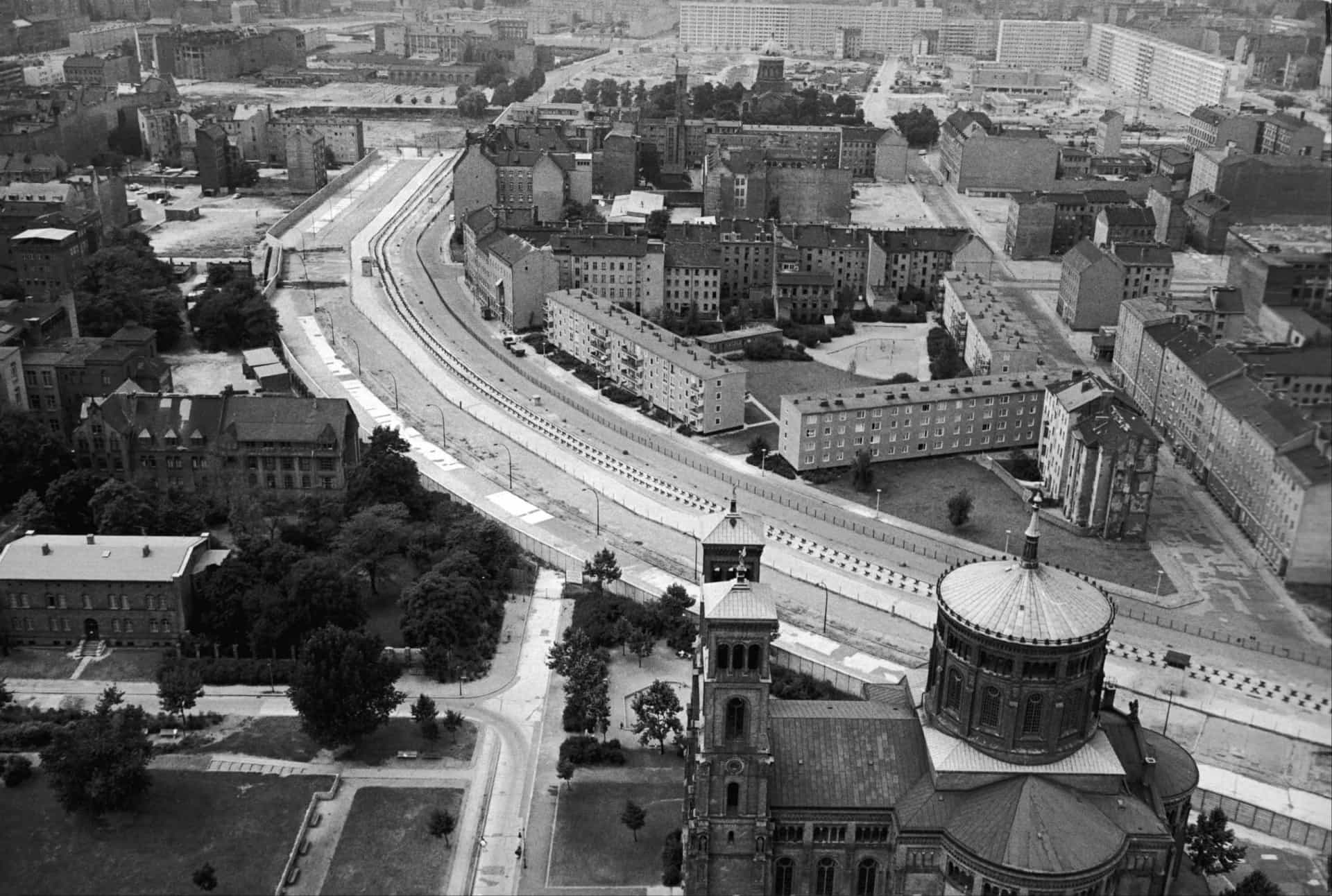
A divided city
The divided city seen from the air. On the right of the wall is East Berlin. On the left, West Berlin.
You may also like: Read the room: Tone-deaf celebrity moments
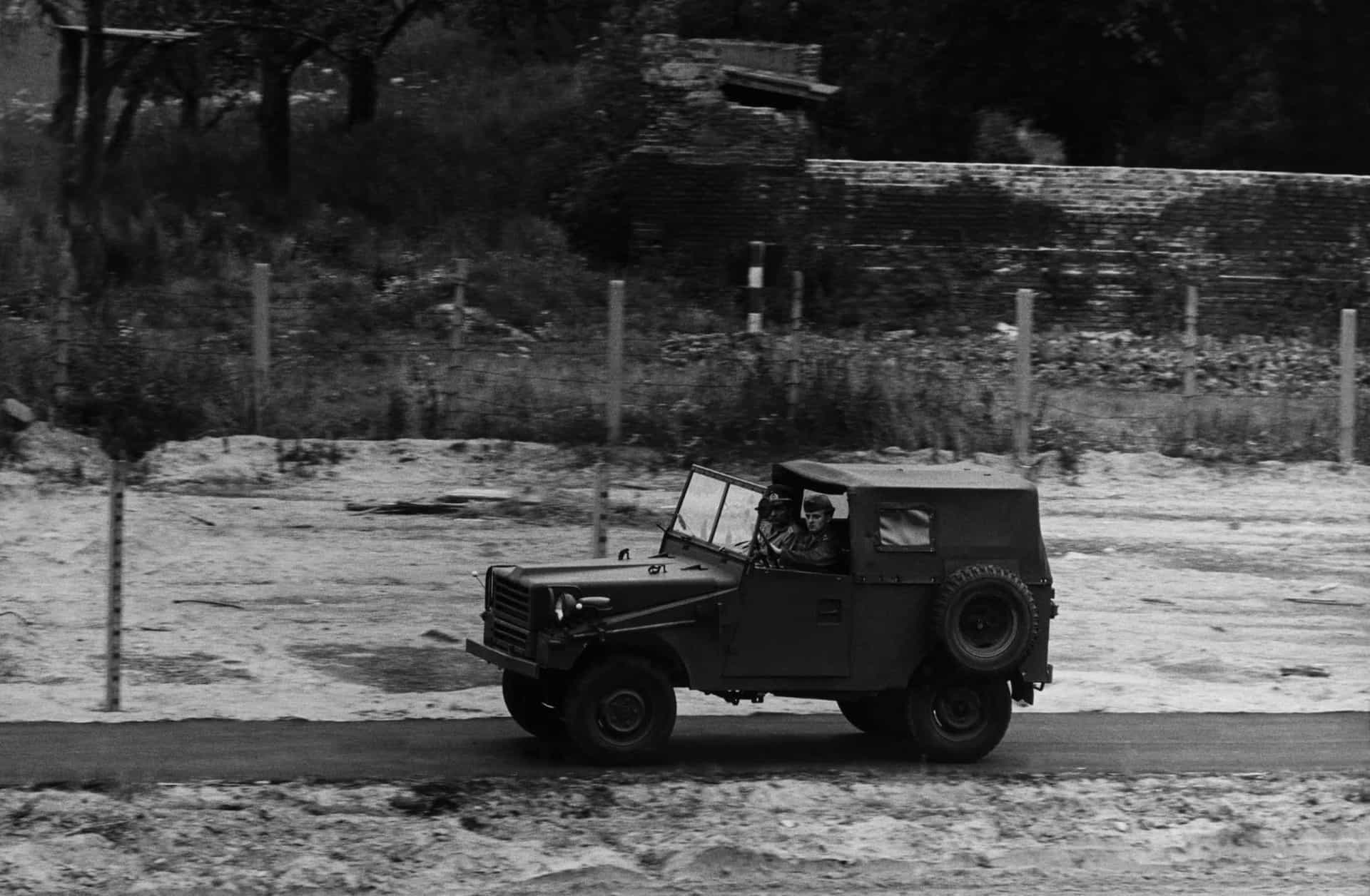
Deadly patrols
Pictured: a Volkspolizei patrol make its regular run along the East German side of the wall.
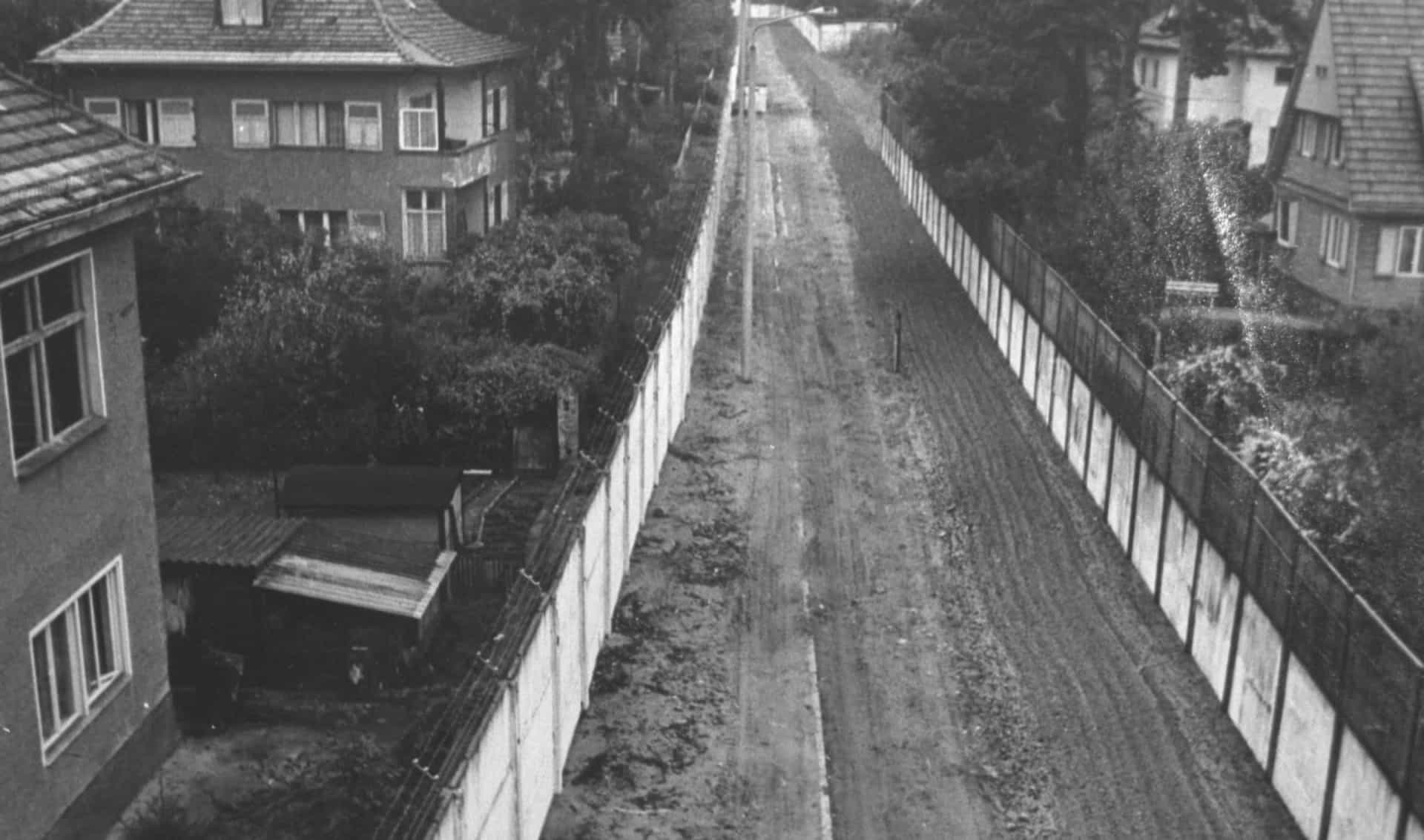
The residential wall
Synonymous with the city, the wall also cut straight through residential neighborhoods. Here, "No Man's Land"—the heavily mined terrain that separated the two walls—divides the village of Klein Glienicke.
You may also like: Unlocking the Renaissance: Who were the visionaries behind history's most revolutionary era?
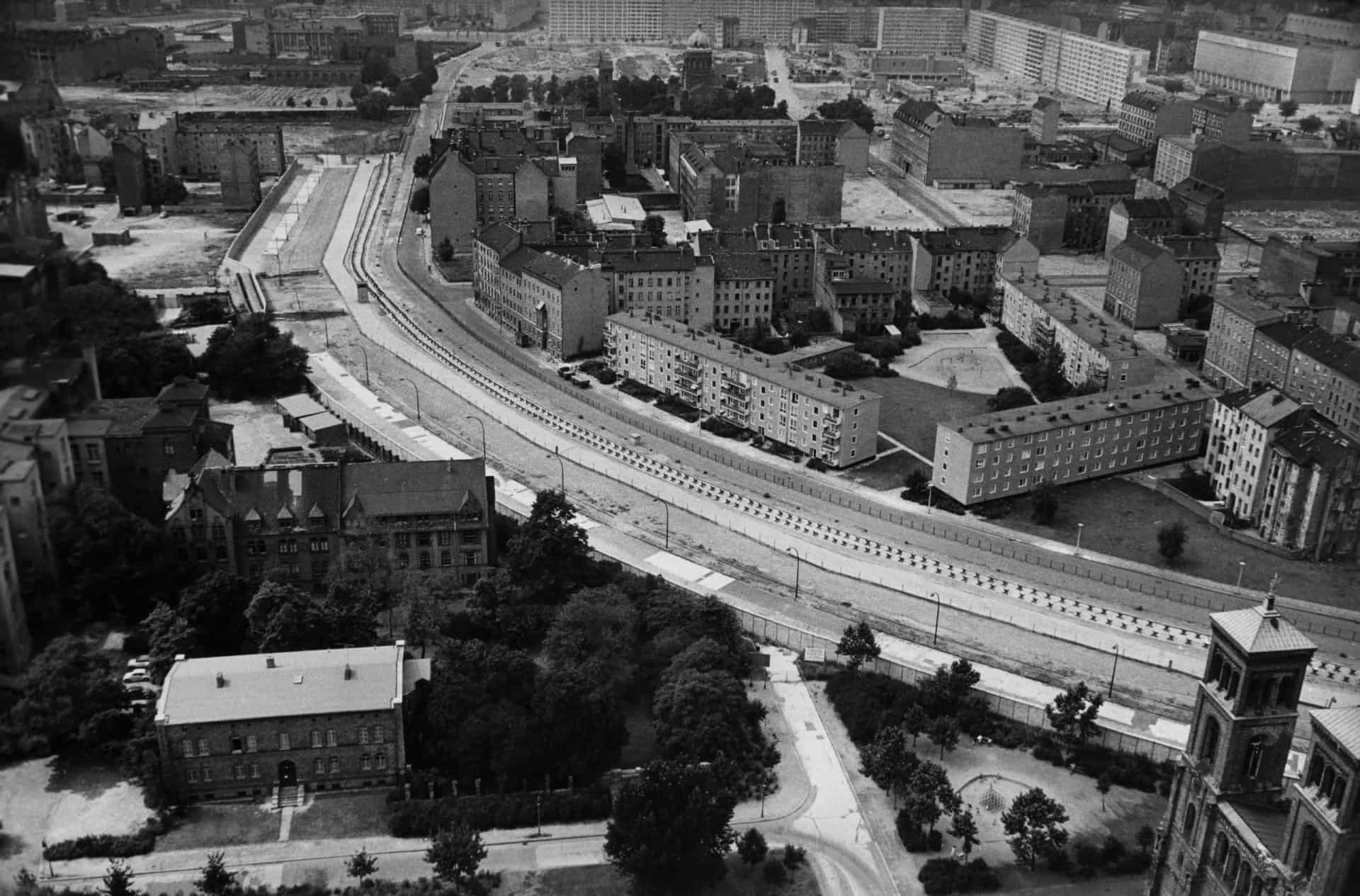
The "death strip"
The wall seen from above clearly showing the so-called "death strip," planted with mines and lined with anti-tank obstacles.

The wall that stood for 28 years
The 18th-century neoclassical Brandenburg Gate, a Berlin landmark that survived the ravages of the Second World War, found itself at the very heart of a divided Berlin, and a carved up Germany. The Berlin Wall stood for 28 years before being torn down as communism across Europe crumbled.
Sources: (Britannica) (History)
See also: Read all about these Cold War facts and trivia
More for You
Supreme Court Justice Called Out Justice Alito's 'Power Grab'—Attorney
Is Cranberry Juice Good for You? Here's What a Dietitian Says
'The worst investment people can make': Real estate guru Grant Cardone says too many Americans are chasing after the dream of homeownership. Here's what he thinks you should do instead
Carpenter's Easy Trick for Keeping Screws Separate Is Nothing Short of Brilliant
Here's How Much Electricity It Takes to Charge A Tesla
Netflix's New Conspiracy Thriller Doubles Down on a Weirdly Popular Genre
Olympic gymnast star Mary Lou Retton slams haters who criticized family for crowdfunding medical bills
The 8 Easiest Ways To Tackle Stubborn Toilet Rust Stains
25 Healthier Fast Food Swaps That Won’t Disappoint
‘Game of Thrones’ Prequel ‘The Hedge Knight’ Announces Release Date
Clarence Thomas Wants Supreme Court to Stop Deciding Certain Cases
California state Senate passes 3 reparations bills after apologizing for slavery: 'Debt that's owed'
The 20 most memorable quotes from 'The Shawshank Redemption'
Jordan Love: ESPN Projects Regression From Green Bay Packers QB In 2024
21 TV Shows With Perfect Endings
The 21 most underrated things at Disney World: What to see, do and eat that many guests miss
China Turns Tables on US Over Russia-Ukraine War Sanctions
USS Harder: Wreck of famed US Navy World War II sub found off Philippines
Dow falls out of bed. Why stocks were vulnerable to a pullback after new highs.
Target CEO sounds the alarm on a growing problem
‘Crip Camp’ Director Nicole Newnham Teams With NBC News Studios on a Doc About Secret Tunnel Dug Under Berlin Wall (EXCLUSIVE)
By Addie Morfoot
Addie Morfoot
Contributor
- HamptonsFilm Unveils Its SummerDocs Slate Featuring ‘Super/Man: The Christopher Reeve Story'(EXCLUSIVE) 15 hours ago
- ‘Crip Camp’ Director Nicole Newnham Teams With NBC News Studios on a Doc About Secret Tunnel Dug Under Berlin Wall (EXCLUSIVE) 4 days ago
- Doc About SI Swimsuit Issue Founding Editor Jule Campbell Is in the Works as Franchise Celebrates 60th Anniversary (EXCLUSIVE) 5 days ago

Oscar-nominated filmmaker Nicole Newnham (“Crip Camp”) is at work on her next documentary — “ Tunnel 29 ,” about a secret escape tunnel built under the Berlin Wall in 1962.
The film, co-produced by NBC News Studios and Story Force Entertainment, will chronicle the story of a group of students who risked their lives and defied the Iron Curtain by digging a tunnel under the Berlin Wall, enabling 29 East Germans to escape to the West.
“‘Tunnel 29’ will cinematically immerse the audience in the fraught and tense time when the world grappled with the trauma and consequences of the Wall and the Cold War — a time that bears an astonishing resemblance to today,” says Newnham.
Popular on Variety
“Tunnel 29” will feature never before seen NBC-owned 16 millimeter black and white film reels shot for the original doc special on the tunnel, as well as Cold War contextual archival footage from the era.
“Increasingly over the course of my career, I have gotten more and more obsessed with archival films and how you can use archival to simultaneously create an immersive cinematic universe that brings people back into history, but at the same time, embed a meta story of what the archive itself is and the importance of that,” says Newnham.
NBC News Studios head of documentary Molly O’Brien says that the network has wanted to develop the Tunnel 29 story for a long time.
“It’s a story that has been legendary here at 30 Rock but we couldn’t figure our way into the doc,” says O’Brien. “What Nicole and Story Force came up with was this character driven story that’s also a thriller. So, audiences will be on the edge of their seats and that is the take that we wanted to go with.”
Although “Tunnel 29,” which is currently in pre-production, takes place more than 60 years ago, O’Brien is sure that it will resonate with audiences.
“The film chronicles an unusual story about digging a tunnel under the Berlin Wall but the themes of wanting to live in a free democratic society are very much present in our modern conversation and the conversations that we’re having with one another today,” she says. “So, it’s a very zeitgeisty and historical project.”
Since forming in early 2020 , NBC News Studios has become a key player in the documentary space . Recent docus includes, Newnham’s “The Disappearance of Shere Hite,” Julie Cohen’s “Every Body” and Dawn Porter’s “The Way I See It.” Studios is currently collaborating with Porter and Errol Morris on two upcoming docus.
O’Brien explains that in the last four years the division has grown into a company that can compete with other top-tier docu production hubs.
“We now have the apparatus and the systems built in so that we can effectively partner with premium top of the class directors and producers,” says O’Brien. “It’s exciting to be part of this new business that is using the assets of this legacy news organization with a different set of directors and producers out there who can really add their point of view and their directorial vision to the stories and IP that (NBC) has been producing and collecting for decades.”
More From Our Brands
Lainey wilson moved to tears as reba mcentire invites star to join grand ole opry, salt bae has closed his nusr-et steakhouse in n.y.c., angel reese joins dc power soccer ownership group, the best loofahs and body scrubbers, according to dermatologists, the voice finale recap: [spoiler] is named the winner of season 25, verify it's you, please log in.
- Action/Adventure
- Children's/Family
- Documentary/Reality
- Amazon Prime Video

More From Decider

New Shows & Movies To Watch This Weekend: 'Bridgerton' Season 3 on...

Jax Taylor Admits His "Delivery Is Awful" In 'The Valley': "That's One Of...

What Happened to Regé-Jean Page? Did the Duke Bomb His Movie Star Career...

'9-1-1's Malcolm-Jamal Warner On Amir And Bobby, Working With Peter...

'Unfrosted' Has Everyone Wondering "What's The Deal With Jerry Seinfeld?"

Chrissy Teigen Stuns John Legend On 'The Drew Barrymore Show' With Reveal...

Brooke Shields Flashed Her ‘Mother of the Bride’ Co-Star Benjamin...

Andy Cohen Reveals Sarah Jessica Parker's Reaction When He Suggested Rosie...
Share this:.
- Click to share on Facebook (Opens in new window)
- Click to share on Twitter (Opens in new window)
- Click to share on WhatsApp (Opens in new window)
- Click to email a link to a friend (Opens in new window)
- Click to copy URL
Ted Danson Tells Drew Barrymore That Woody Harrelson Was Once A No-Show To ‘Cheers’ Set Because He Was Watching The Berlin Wall Come Down
Where to stream:.
- The Drew Barrymore Show
Why the ‘Cheers’ Finale Is Television’s All-Time Great Ending
‘curb your enthusiasm’ is limping to the finish line in its final season, stream it or skip it: ‘curb your enthusiasm’ season 12 on hbo, where larry david grumbles into the sunset in the show’s final () season, ‘cheers’ stars ted danson, george wendt and woody harrelson once vomited together on set.
Ted Danson has some fond memories from working with Woody Harrelson on Cheers , including the time the latter skipped filming to watch the Berlin Wall come down.
On this morning’s episode of The Drew Barrymore Show , Danson gushed over the “amazing” actor as he recalled his “favorite story” from their days of co-starring on the hit sitcom.
“It was the eighth or ninth year. It was a little more relaxed,” Danson told host Drew Barrymore . “If somebody showed up 15 minutes late, it was on time. If you were half an hour late, you were late. [Harrelson] was not there [for] 45 minutes and we were going, ‘Well, this is too much.’”
Danson continued, “Somebody came running in and said, ‘Oh, Woody’s in Berlin. The wall is coming down and he couldn’t miss it. He said he’ll be back soon.'”
According to Danson, there were no hard feelings because that’s just the kind of guy Harrelson is.

Change in the House of Barflies: Why the ‘Cheers’ Finale Is Television’s All-Time Great Ending
“He takes these big old chunks of life. He’s best friends with the world genuinely,” Danson said. “He knows so many people because he’s one of the best, most fun people to hang out with.”
The two actors met when Harrelson joined Season 4 of Cheers in 1985. They starred on the show together until its finale in 1993.
Nowadays, the duo is gearing up to release their new SiriusXM podcast, Where Everybody Knows Your Name with Ted Danson and Woody Harrelson (Sometimes) , which drops on June 12.
“Someone approached me about doing [a podcast] and they said, ‘You should have a partner.’ And we all immediately thought of Woody,” Danson said when asked how the podcast came to be on The Drew Barrymore Show. “I think he said it to me — it was a chance for us to hang out together.”
Danson continued, “When you work a lot, you go in different directions. We hadn’t seen each other — well, we had like once a year — but for 30 years, we had never really hung out after Cheers. We loved each other and had a great time. He’s an amazing guy.”
The Drew Barrymore Show airs on weekdays on CBS. You can check the website for local airtimes.

Ted Danson Tells Drew Barrymore That Woody Harrelson Was Once A No-Show To 'Cheers' Set Because He Was Watching The Berlin Wall Come Down

'The Resident's Malcolm-Jamal Warner Says Cast Would Be Open To Returning For A Season 7: "I Think We Would All Jump At The Opportunity"

Jenna Bush Hager Boldly Puts Jake Gyllenhaal’s 'SNL' Performance Down On 'Today': "I Don’t Know He’s That Good"

'The View': Whoopi Goldberg Says Crediting Caitlin Clark's Popularity To Being White, Straight Is Like Telling Someone They Only Got Into An Ivy League College Because They're Black

Will There Be A 'Will Trent' Season 3? Here's When 'Will Trent' Returns With New Episodes

Kelly Ripa Gives Mark Consuelos The Silent Treatment On 'Live' After He Takes His Jokes Too Far
- Live on Sky
- Get Sky Sports
- Sky Mobile Apps
- Kick It Out
- Black Lives Matter
- British South Asians in Football
Euro 2024 fixtures, schedule, teams, venues: All you need to know about summer tournament in Germany
England have been drawn against Serbia, Slovenia and Denmark in Group C; Scotland have been drawn against Germany, Switzerland and Hungary; Wales could be in Group D; Euro 2024 kicks off in Munich on June 14; final takes place in Berlin on July 14
Tuesday 21 May 2024 18:08, UK

From fixtures to venues, here's all you need to know about this summer's tournament...
Where and when will Euro 2024 be held?
Euro 2024 will take place from Friday June 14 to Sunday July 14 2024.
Germany are the host nation and qualified automatically. West Germany hosted the tournament back in 1988, but this will be the first time Germany has staged the European Championship since reunification.
- Euro 2024: England drawn with Denmark; Scotland face Germany in opener
- England's Euro 2024 fixtures and route | Scotland's Euro 2024 fixtures and route
- Euro 2024 kits revealed
Who has qualified for Euro 2024?
In total, 24 teams will take part in the tournament with Poland , Ukraine and Georgia progressing via the play-offs.
What are the Euro 2024 groups?
Group A - Germany, Scotland, Hungary, Switzerland
- Rooney in frame for Plymouth job
- Papers: Bayern Munich eye shock move for Man City star Grealish
- Transfer Centre LIVE! Burnley want £17m from Bayern for Kompany
- 'YES, YOU BEAUTY!' | Littler hits NINE-DARTER in Premier League Final!
- Man Utd meet McKenna reps amid Chelsea interest in Ipswich boss
- Nine-dart Littler beats Humphries to win Premier League
- Man City news: Carson signs new one-year deal
- Why Ipswich's McKenna is a manager in demand
- Paqueta charged by FA for alleged breaches of betting rules
- Your reaction as Littler hits nine-darter and wins Premier League
- Latest News
Group B - Spain, Croatia, Italy, Albania
Group C - Slovenia, Denmark, Serbia, England
Download the Sky Sports App
Find out more about Sky Sports
Euro 2024 latest news
Group D - Poland, Netherlands, Austria, France
Group E - Belgium, Slovakia, Romania, Ukraine
Group F - Turkey, Georgia, Portugal, Czech Republic
What is the Euro 2024 schedule and format?
The top two teams from each of the six final tournament groups will proceed to the round of 16 along with the four best third-placed finishers.
Final tournament
June 14, 2024: Euro 2024 opening game, Munich Football Arena (Allianz Arena) June 30 - July 2: Round of 16 July 5-6: Quarter-finals July 9-10: Semi-finals July 14: Euro 2024 final, Olympiastadion Berlin
Euro 2024 fixtures in full
Group stage
Friday June 14 Germany vs Scotland (Munich, kick-off 8pm UK time)
Saturday June 15 Hungary vs Switzerland (Cologne, kick-off 2pm UK time) Spain vs Croatia (Berlin, kick-off 5pm UK time) Italy vs Albania (Dortmund, kick-off 8pm UK time)
Sunday June 16 Poland vs Netherlands (Hamburg, kick-off 2pm UK time) Slovenia vs Denmark (Stuttgart, kick-off 5pm UK time) Serbia vs England (Gelsenkirchen, kick-off 8pm UK time)
Monday June 17 Romania vs Ukraine (Munich, kick-off 2pm UK time) Belgium vs Slovakia (Frankfurt, kick-off 5pm UK time) Austria vs France (Dusseldorf, kick-off 8pm UK time)
Tuesday June 18 Turkey vs Georgia (Dortmund, kick-off 5pm UK time) Portugal vs Czech Republic (Leipzig, kick-off 8pm UK time)
Wednesday June 19 Croatia vs Albania (Hamburg, kick-off 2pm UK time) Germany vs Hungary (Stuttgart, kick-off 5pm UK time) Scotland vs Switzerland (Cologne, kick-off 8pm UK time)
Thursday June 20 Slovenia vs Serbia (Munich, kick-off 2pm UK time) Denmark vs England (Frankfurt, kick-off 5pm UK time) Spain vs Italy (Gelsenkirchen, kick-off 8pm UK time)
Friday June 21 Slovakia vs Ukraine (Dusseldorf, kick-off 2pm UK time) Poland vs Austria (Berlin, kick-off 5pm UK time) Netherlands vs France (Leipzig, kick-off 8pm UK time)
Saturday June 22 Georgia vs Czech Republic (Hamburg, kick-off 2pm UK time) Turkey vs Portugal (Dortmund, kick-off 5pm UK time) Belgium vs Romania (Cologne, kick-off 8pm UK time)
Sunday June 23 Switzerland vs Germany (Frankfurt, kick-off 8pm UK time) Scotland vs Hungary (Stuttgart, kick-off 8pm UK time)
Monday June 24 Croatia vs Italy (Leipzig, kick-off 8pm UK time) Albania vs Spain (Dusseldorf, kick-off 8pm UK time)
Tuesday June 25 Netherlands vs Austria (Berlin, kick-off 5pm UK time) France vs Poland (Dortmund, kick-off 5pm UK time) England vs Slovenia (Cologne, kick-off 8pm UK time) Denmark vs Serbia (Munich, kick-off 8pm UK time)
Wednesday June 26 Slovakia vs Romania (Frankfurt, kick-off 5pm UK time) Ukraine vs Belgium (Stuttgart, kick-off 5pm UK time) Czech Republic vs Turkey (Hamburg, kick-off 8pm UK time) Georgia vs Portugal (Gelsenkirchen, kick-off 8pm UK time)
Rest days on June 27 and 28
Round of 16
Saturday June 29 37 1A vs 2C (Dortmund, kick-off 8pm UK time) 38 2A vs 2B (Berlin, kick-off 5pm UK time)
Sunday June 30 39 1B vs 3A/D/E/F (Cologne, kick-off 8pm UK time) 40 1C vs 3D/E/F (Gelsenkirchen, kick-off 5pm UK time)
Monday July 1 41 1F vs 3A/B/C (Frankfurt, kick-off 8pm UK time) 42 2D vs 2E (Düsseldorf, kick-off 5pm UK time)
Tuesday July 2 43 1E vs 3A/B/C/D (Munich, kick-off 5pm UK time) 44 1D vs 2F (Leipzig, kick-off 8pm UK time)
Rest days on 3 and 4 July
Quarter-finals
Friday July 5 45 W39 vs W37 (Stuttgart, kick-off 5pm UK time) 46 W41 vs W42 (Hamburg, kick-off 8pm UK time)
Saturday July 6 47 W43 vs W44 (Berlin, kick-off 8pm UK time) 48 W40 vs W38 (Dusseldorf, kick-off 5pm UK time)
Rest days on 7 and 8 July
Semi-finals
Tuesday July 9 49 W45 vs W46 (Munich, kick-off 8pm UK time)
Wednesday July 10 50 W47 vs W48 (Dortmund, kick-off 8pm UK time)
Rest days on July 11, 12 and 13
Euro 2024 final
Sunday July 14 W49 vs W50 (Berlin, kick-off 8pm UK time)
Where and when will the Euro 2024 final be played?

The final will take place at the Olympiastadion in Berlin on Sunday July 14.
What are the Euro 2024 host cities?

The 10 host venues are as follows:
- Berlin - Olympiastadion Berlin
- Cologne - Cologne Stadium (RheinEnergieSTADION)
- Dortmund - BVB Stadion Dortmund (Signal Iduna Park)
- Dusseldorf - Dusseldorf Arena (MERKUR SPIEL-ARENA)
- Frankfurt - Frankfurt Arena (Deutsche Bank Park)
- Gelsenkirchen - Arena AufSchalke (Veltins-Arena)
- Hamburg - Volksparkstadion Hamburg
- Leipzig - Leipzig Stadium (Red Bull Arena)
- Munich - Munich Football Arena (Allianz Arena)
- Stuttgart - Stuttgart Arena (MHPArena)

The Super 6 Rollover hits a whopping £1,000,000! Play for free, entries by 3pm Saturday March 30.

How to watch Premier League, EFL play-offs, WSL, Scottish Premiership, F1 and more
- Stream with NOW

- Upgrade Now

IMAGES
VIDEO
COMMENTS
The Berlin Wall ran along the entire southern edge of Bernauer Straße during the years of Berlin's division. Part of this former border strip together with the watchtower are now home to an open air exhibition offering historical audio and video material as well as a visitor centre with videos and a viewing tower.. Where: Berlin Wall Memorial, Bernauer Straße 111, Mitte
The Berlin Wall shaped the city, Germany, and even the world, for more than 28 years during the Cold War, and there are still lots of places to see the Berlin Wall in Berlin.Though the Wall came down more than 30 years ago, there are still some remnants of the Wall scattered around Berlin.. The Berlin Wall was a physical barrier and a symbolic boundary separating East Berlin from West Berlin ...
The East Side Gallery is the longest remaining stretch of the Berlin Wall. Considered the largest open-air gallery in the world, the 1.3-kilometre section is also the best spot in Berlin to see the colourful, famous murals on the wall. A tribute to freedom, visitors can explore the gallery on their own, or by following an informative tour.
Documentation center and visitor center. Opening Hours: Tuesday to Sunday. 10 a.m. to 6 p.m. Closed on 24/25 and 31 December 2024. Last ascent to the observation tower 5.45 p.m. The documentation center and visitor center are also open on: Monday, 20 May 2024 from 10 a.m. - 6 p.m. Thursday, 26 December 2024 from 12 a.m. - 6 p.m.
Victims of the Berlin Wall Window of Remembrance: At least 140 people died or were killed at the Berlin Wall between 1961 and 1989. This wall of photos honors the 140 known victims of the Berlin Wall. Address: From the visitors center at Bernauer Str. 119, 13355 Berlin to Bernauer Str. 50, 10435 Berlin.
2. Men's Bathroom, Main Street Casino, Brewery & Hotel // Las Vegas, Nevada, U.S. A casino bathroom is certainly an unexpected place to find a piece of the once-formidable Berlin Wall. / Fuzzy ...
The best way to see the colorful work is to start at Ostbahnhof railway station and follow the route of 1.3 kilometers (.8 mile) to take it all in. East Side Gallery, Mühlenstraße 47 - 80, +49 ...
The Berlin Wall has long since disappeared from reunified Berlin. Memories of it, however, are still very much alive: remains and traces of the former border installations are being preserved for posterity, memorials have been built, and the Berlin Wall Trail allows you to explore the former course of the Berlin Wall on foot or by bike.
The most famous of Berlin Wall sites, The East Side Gallery is the best-preserved and longest part of the Wall at over 1 kilometre long. It is adorned with colourful murals painted by international artists, which have been there since 1990 - a year after East and West's borders started to open.
You can see here a piece of the Berlin Wall about 200 meters long. The wall segment suffered significant damage. This is mainly due to souvenir hunters, so-called "Mauerspechte" (wall woodpeckers), who worked the concrete wall with hammers or similar after the fall of the Wall in 1989 in order to get hold of crushed parts of the Wall as souvenirs.
How to see the Berlin Wall. Art at Museum Mile, Berlin Wall. For 28 years, the Berlin Wall - the most potent symbol of the Cold War - divided not only the city but the world. Twenty-five years after its fall, little remains of the barrier between East and West, but those seeking to understand its impact needn't look far.
The Berlin Wall fell on November 9, 1989. On August 13, 1961, the Communist government of East Germany began to build a barbed wire and concrete "Antifascistischer Schutzwall," or ...
The colorful artworks are based on themes of freedom, anti-oppression and political satire, bringing recent history to vivid life. Berlin Wall Memorial at Bernauer Strasse is open every day except Mondays 9:30 a.m. - 7:00 p.m. from April to October and 9:30 a.m. - 6:00 p.m. from November to March. The East Side Gallery and is located in an ...
Ostalgie: The Berlin Wall (2018), video game by Kremlingames, where the player, playing as the leader of the GDR from 1989 to 1991, can take down the Berlin Wall themselves or as a result of events in the game, or keep the wall intact as long as the country exists. See also. Architecture portal; Cities portal; East Germany portal; Germany portal
It is served by the S-Bahn (S1, S2, S25 & S26), trams (M10, M8, 12) and buses (247, N40). If traveling by S-Bahn, just follow the signs for the Berlin Wall Memorial (Gedenkstätte Berliner Mauer), though we recommend spending some time at the exhibit on the ghost stations. If you want further explanations for tackling Berlin's public ...
The Fall of the Berlin Wall. As the Cold War between the Soviet Union and the US began to thaw in 1989, the borders between East Germany and West Germany became more relaxed. On 9th November 1989, the East German government announced a change in their regulations. Starting at midnight the same day, citizens would be allowed to cross the country ...
The Berlin Wall. The Berlin Wall came to symbolize the Cold War 's division of East from West Germany and of eastern from western Europe. About 5,000 East Germans managed to cross the Berlin Wall (by various means) and reach West Berlin safely, while another 5,000 were captured by East German authorities in the attempt and 191 more were ...
Look behind the Berlin wall and its complex, tragic history on an in-depth walking tour focused on the city's most infamous architecture. See the longest section of the wall that remains, plus other Cold War landmarks like Checkpoint Charlie and a former DDR watchtower. A guide's commentary goes beyond Communist kitsch and well-known headlines for an insightful look at life in Berlin before ...
At the Wall. Main Street Station Casino, 200 N. Main St., Las Vegas; +1 800 713 8933. 2. Perfil Group building, Buenos Aires. A row of Berlin Wall segments can be found in the Buenos Aires office ...
The Berlin Wall fell in 1989, but there are a few sections standing still throughout Berlin, and it's possible to visit these remains for free. In fact, the wall is one of Berlin's most visited attractions. What Can You See During a Berlin Wall Tour. Here's a list of the key sites where you can see the Berlin Wall:
An aerial view of Tiergarten in Berlin. By: John Owen. Berlin is a city famous for its history. Almost to a fault. For visitors to the German capital, the city's most famous sights-the Brandenburg Gate, the Reichstag and the Holocaust Memorial-are "must sees.". But all three of these most famous sights sit within around 300 metres of ...
Tip: Visit Berlin's museums with the 3-day Berlin Museum Pass. For €32 (reduced €16), the museum pass guarantees free admission for all Berlin visitors on three consecutive days to many museums. Order now in the visitBerlin-Shop. Tickets for the Museum Pass. Top pick 9: The Berlin Wall Memorial and Documentation Centre
From the Berlin Wall to the Black Forest, join us as we explore the heart of Germany in this exciting travel vlog! Discover the rich history of Berlin, the n...
Pre-August 13, 1961. This June 1, 1961 photograph shows the Brandenburg Gate wired shut, but before building of the wall had commenced. The monumental city gate stood on the dividing line between ...
Oscar-nominated filmmaker Nicole Newnham ("Crip Camp") is at work on her next documentary — " Tunnel 29 ," about a secret escape tunnel built under the Berlin Wall in 1962. The film, co ...
Germany's Berlin Wall is another travel memory. "I remember playing in West Berlin, going through Checkpoint Charlie into East Berlin and experiencing what the people were going through there ...
Ted Danson has some fond memories from working with Woody Harrelson on Cheers, including the time the latter skipped filming to watch the Berlin Wall come down.. On this morning's episode of The ...
Georgia vs Czech Republic (Hamburg, kick-off 2pm UK time) Turkey vs Portugal (Dortmund, kick-off 5pm UK time) Belgium vs Romania (Cologne, kick-off 8pm UK time) Netherlands vs Austria (Berlin ...